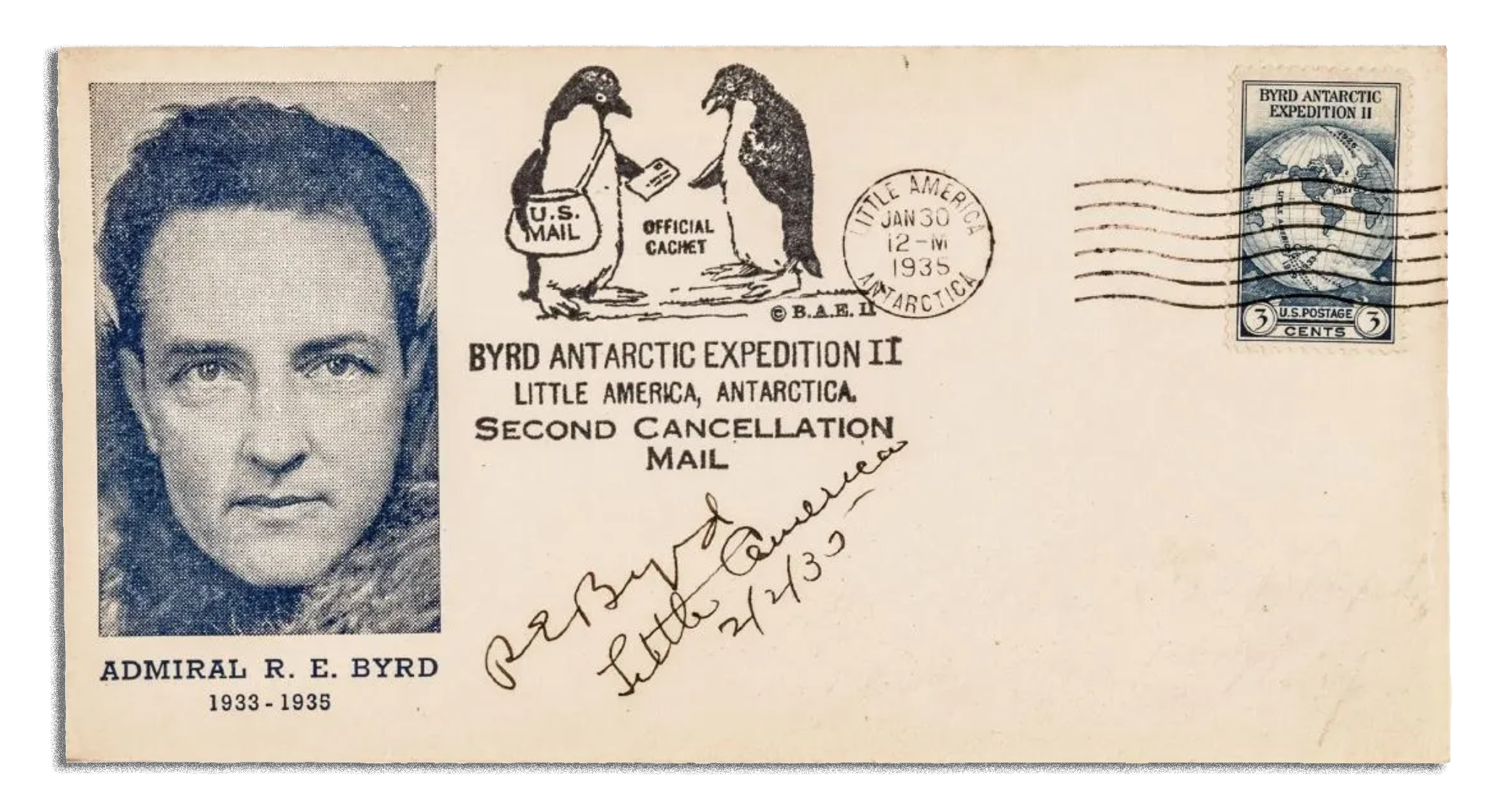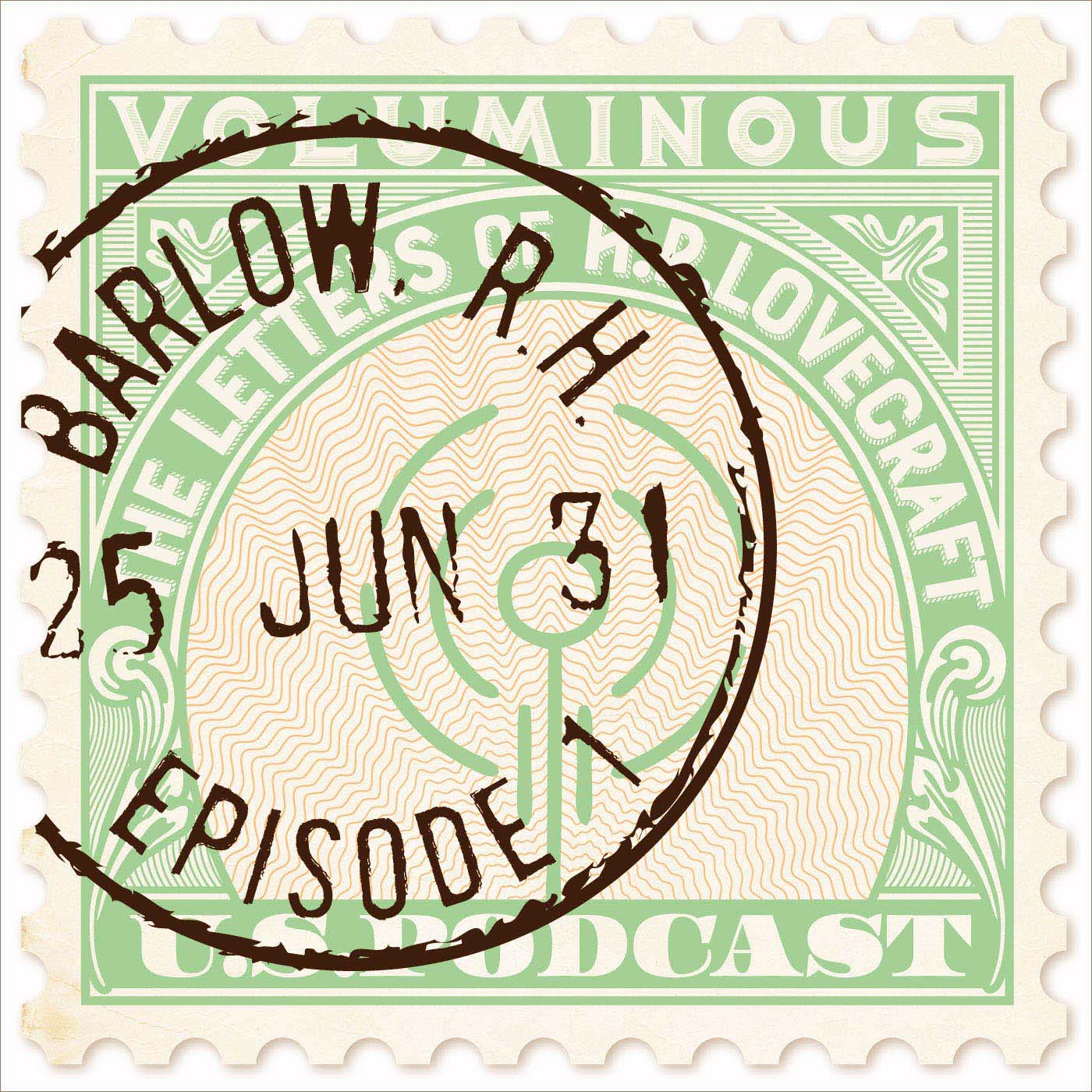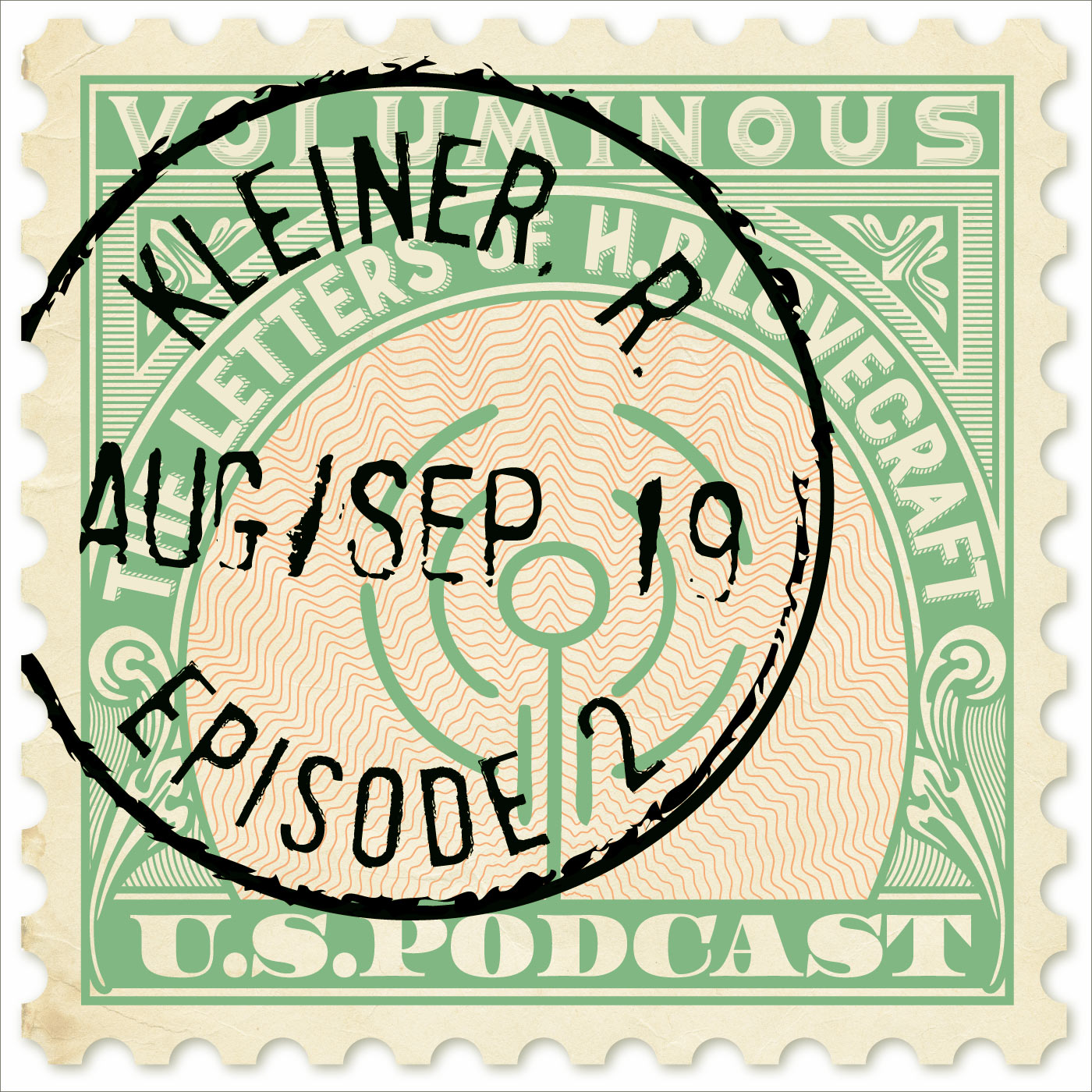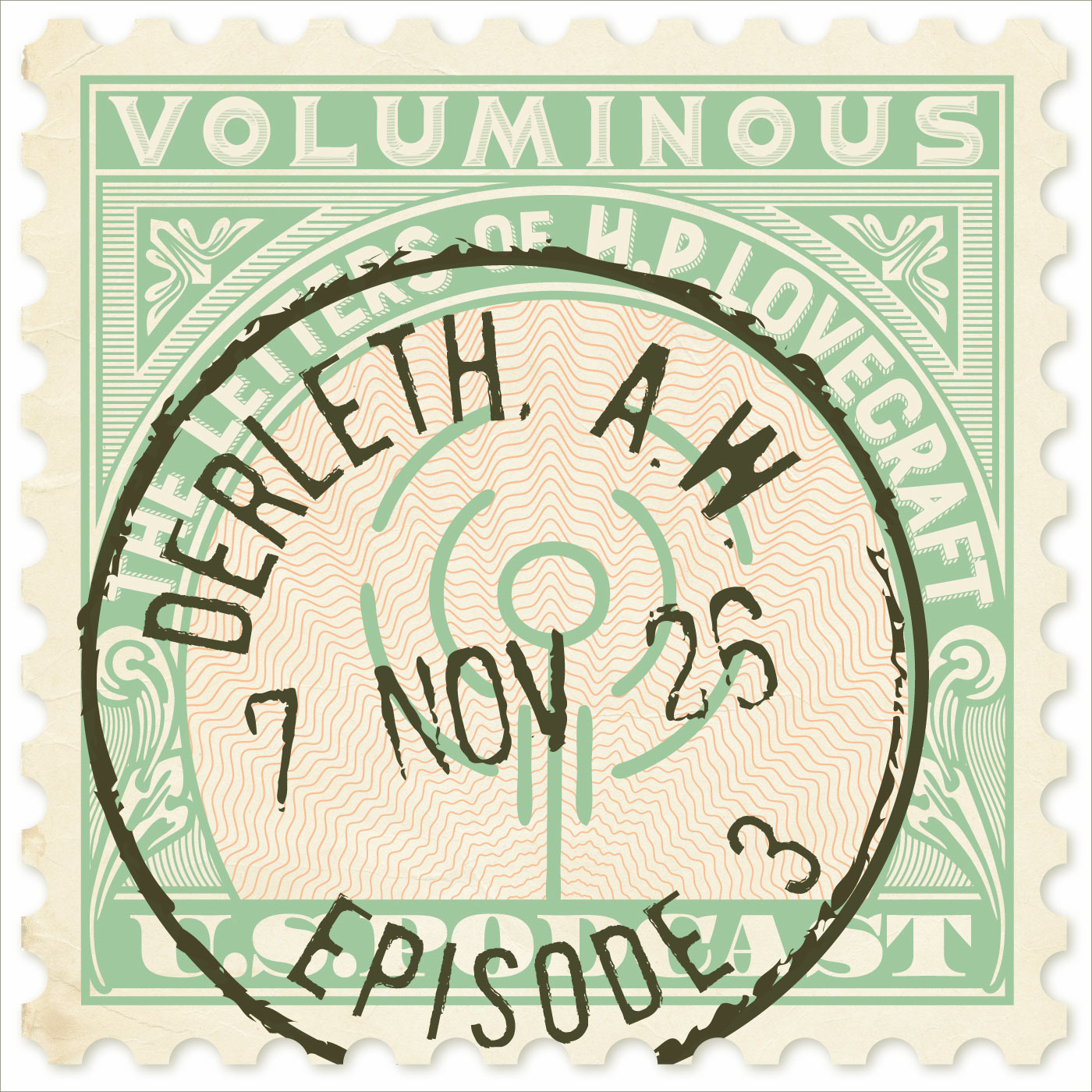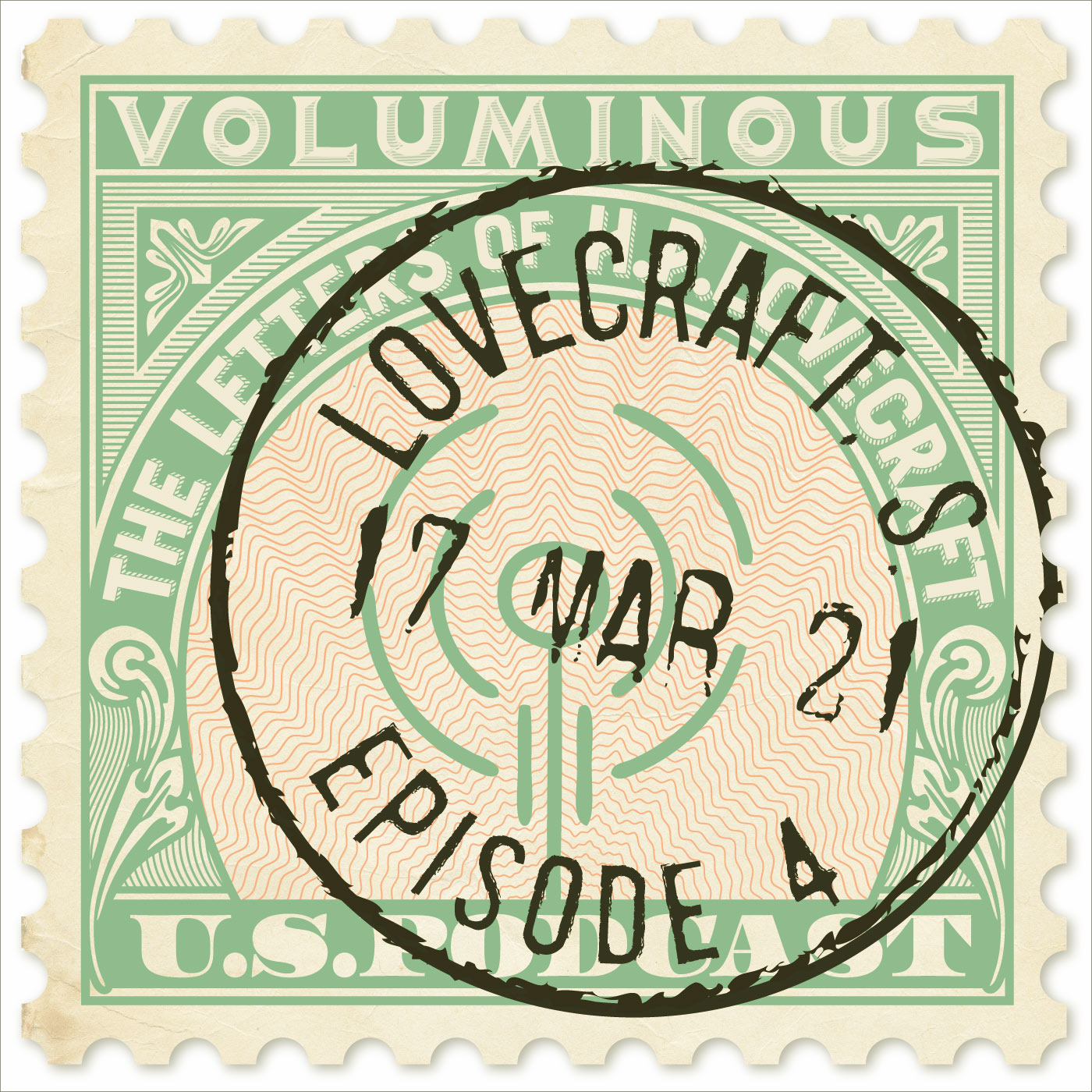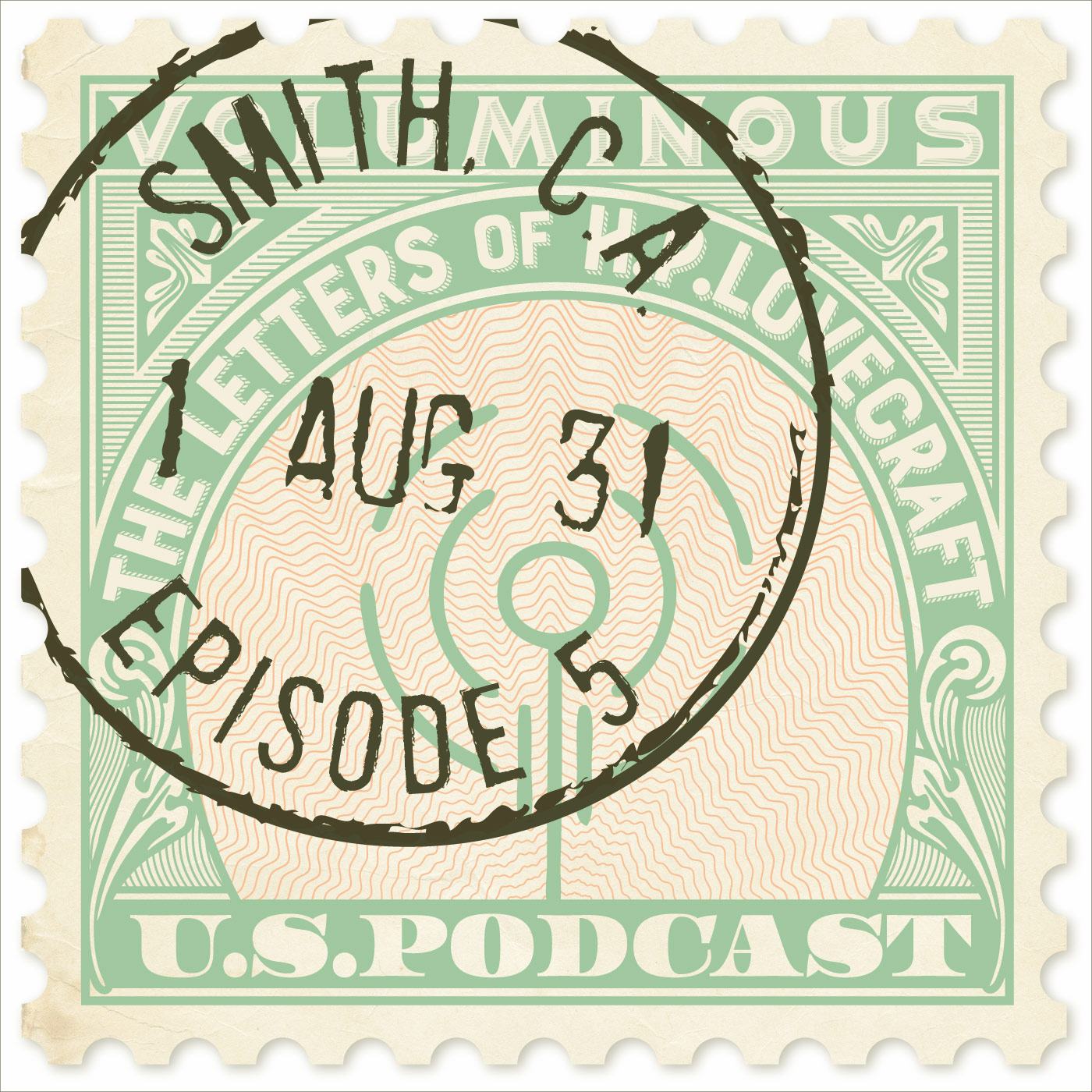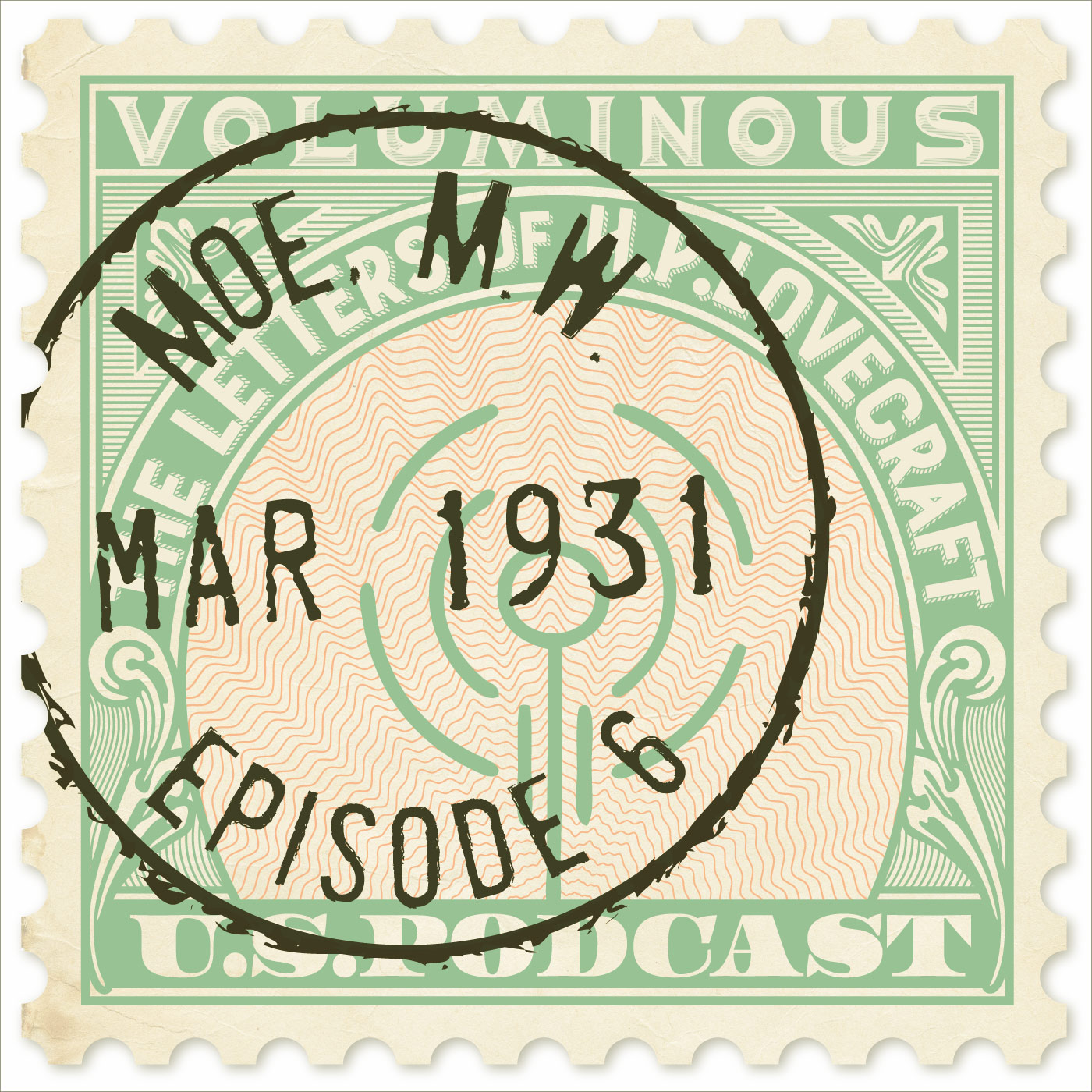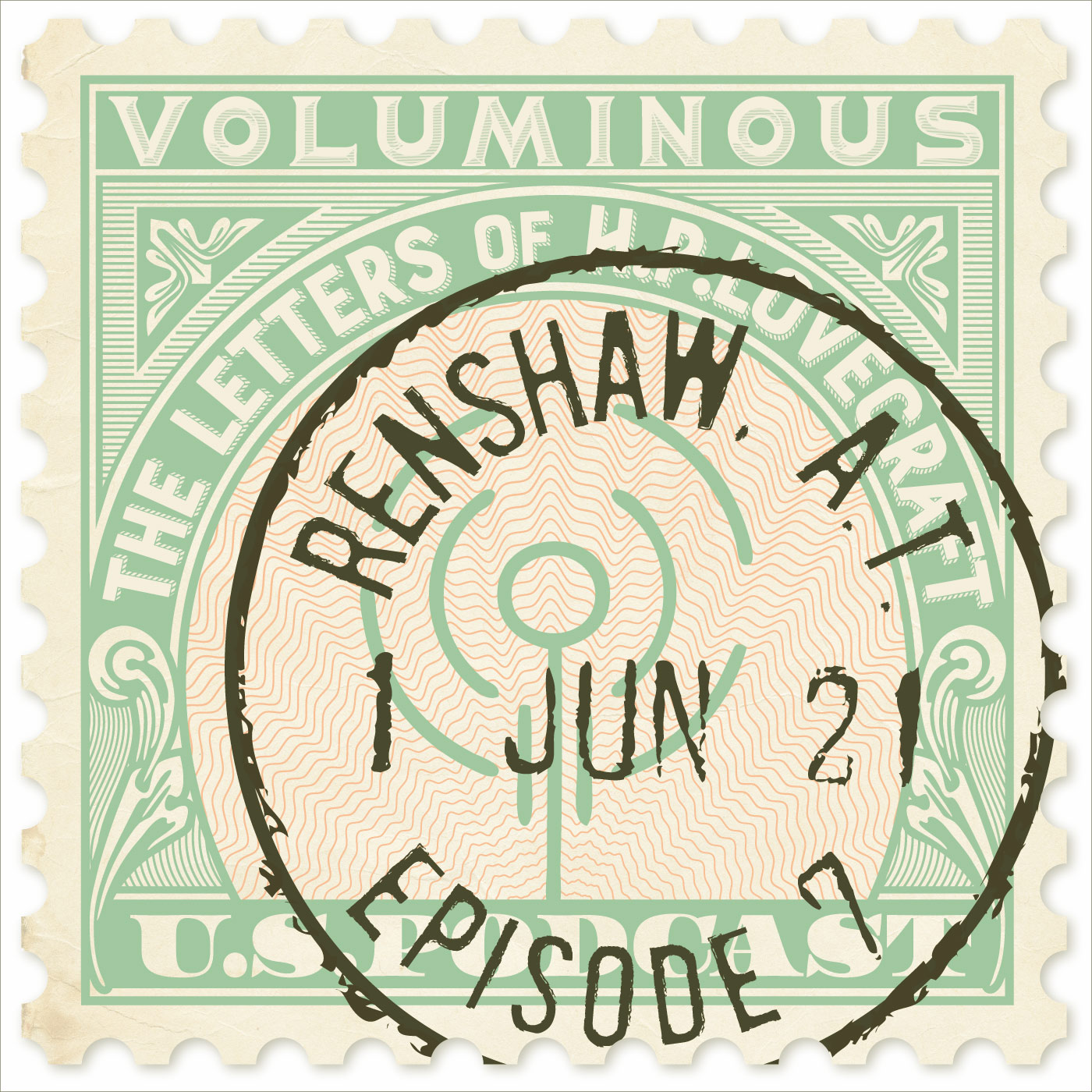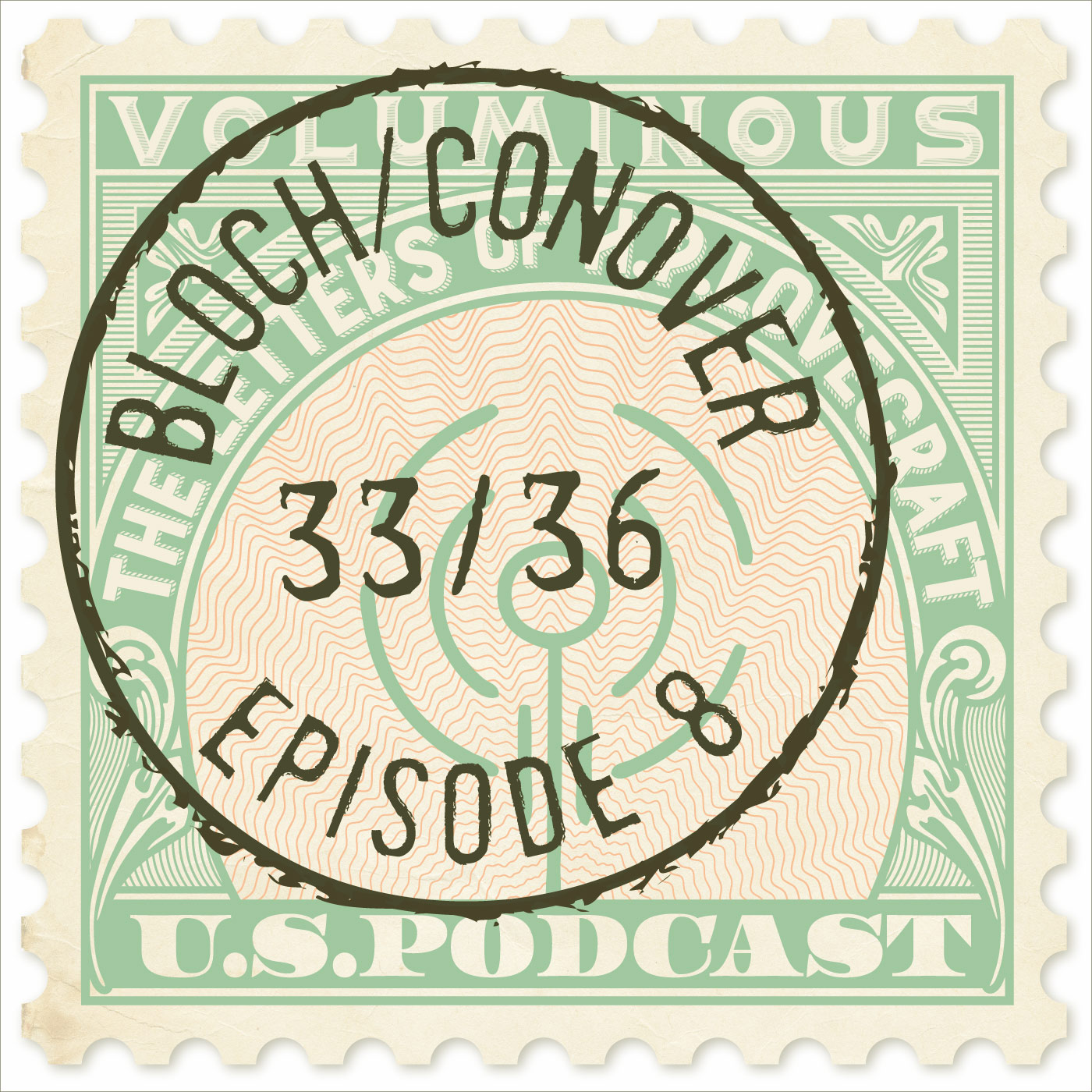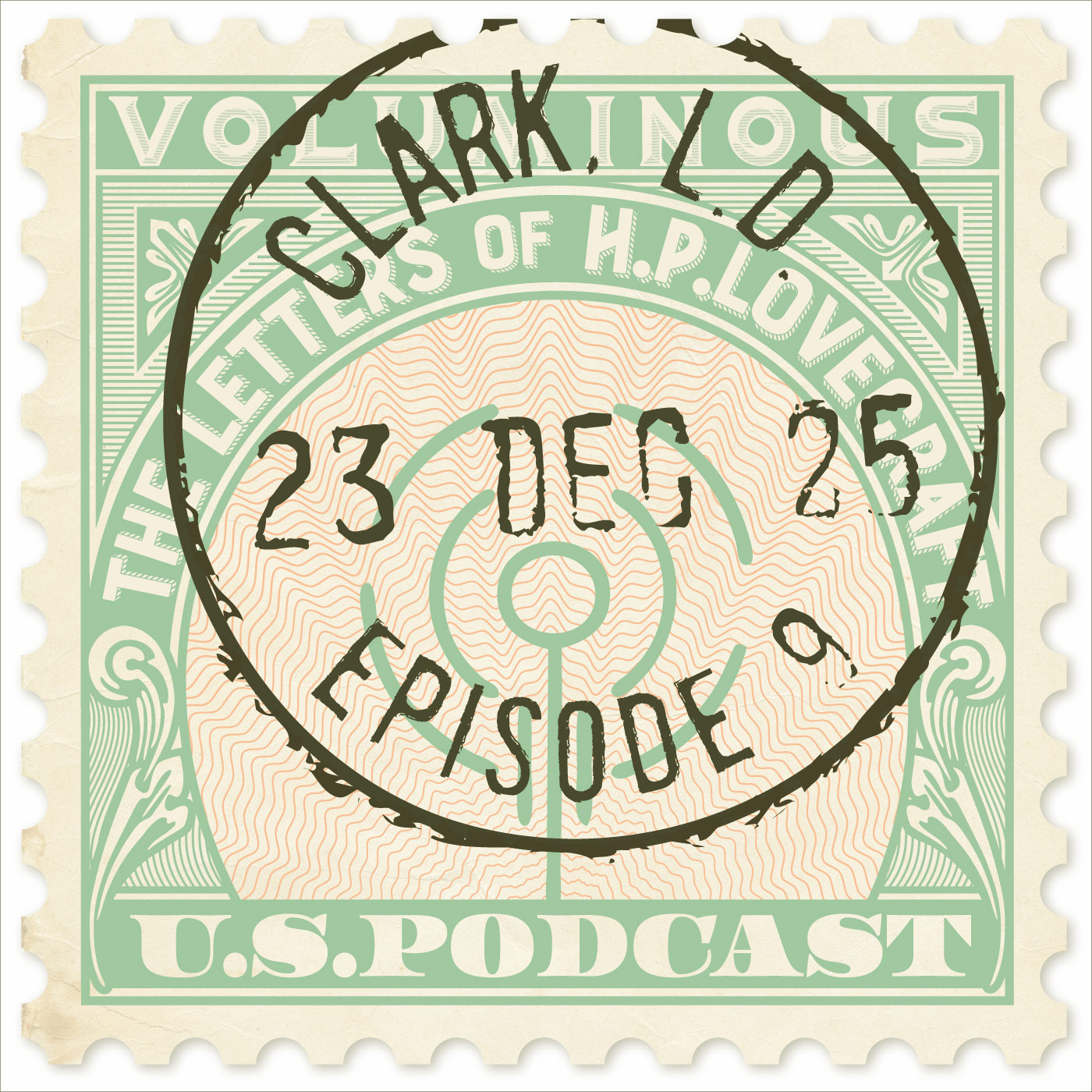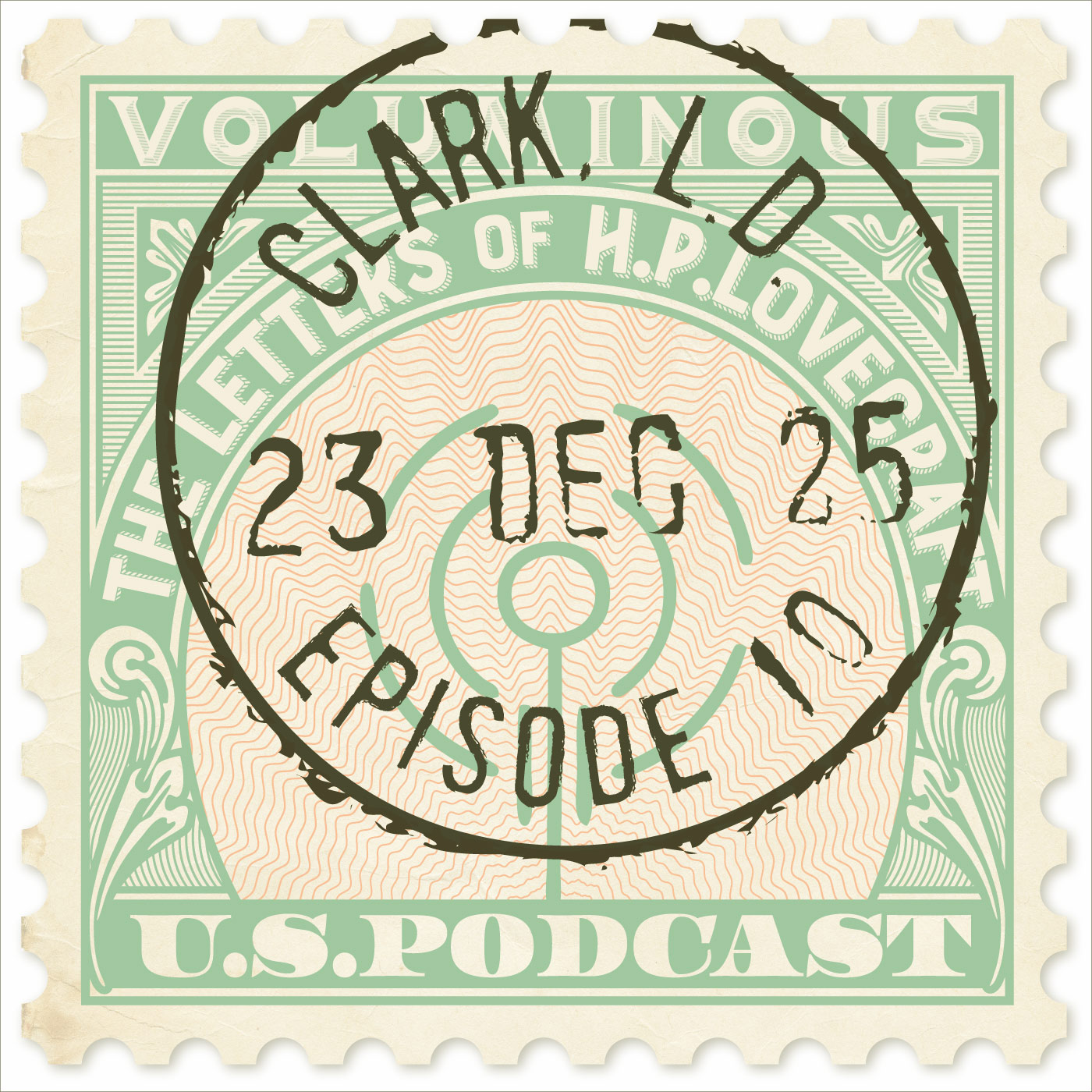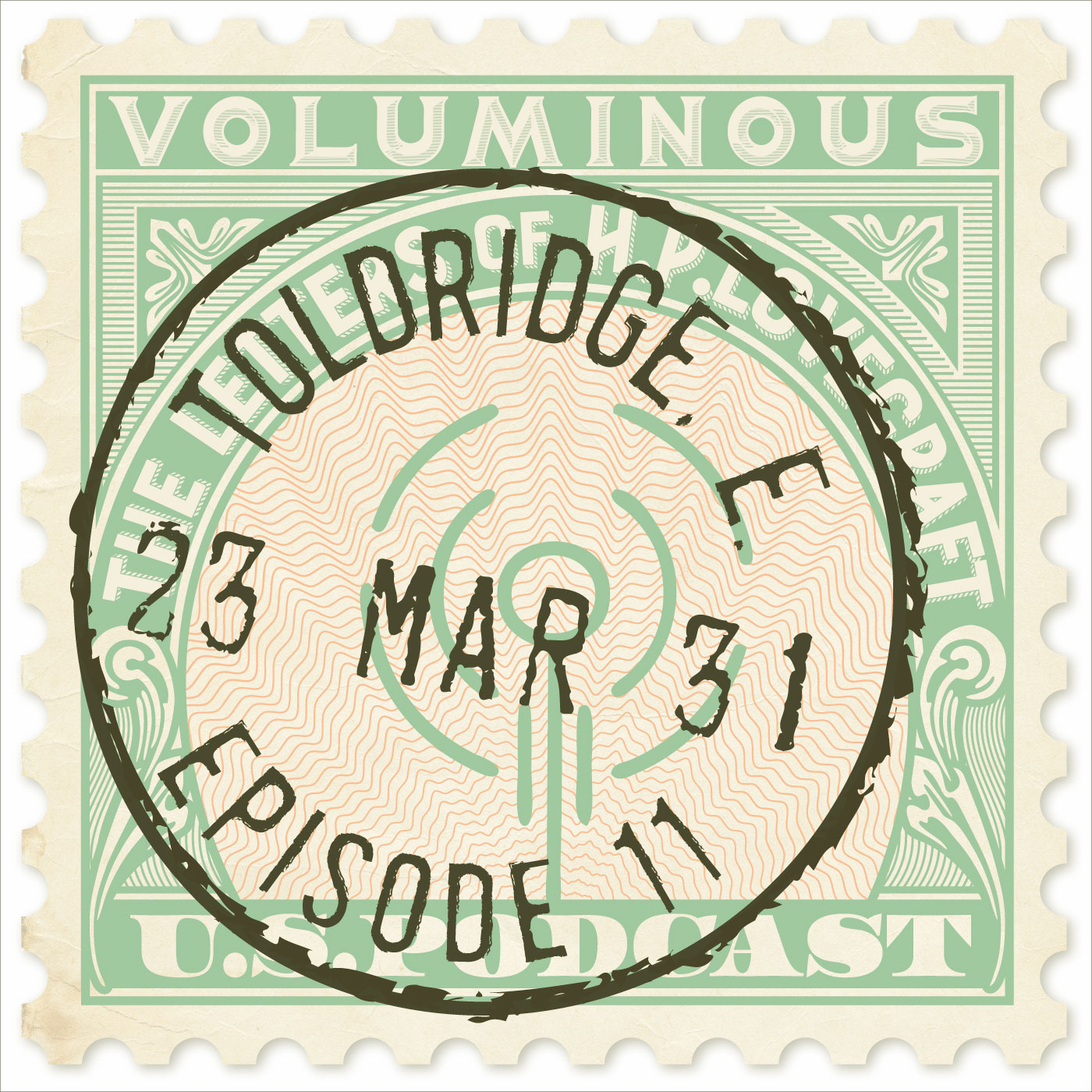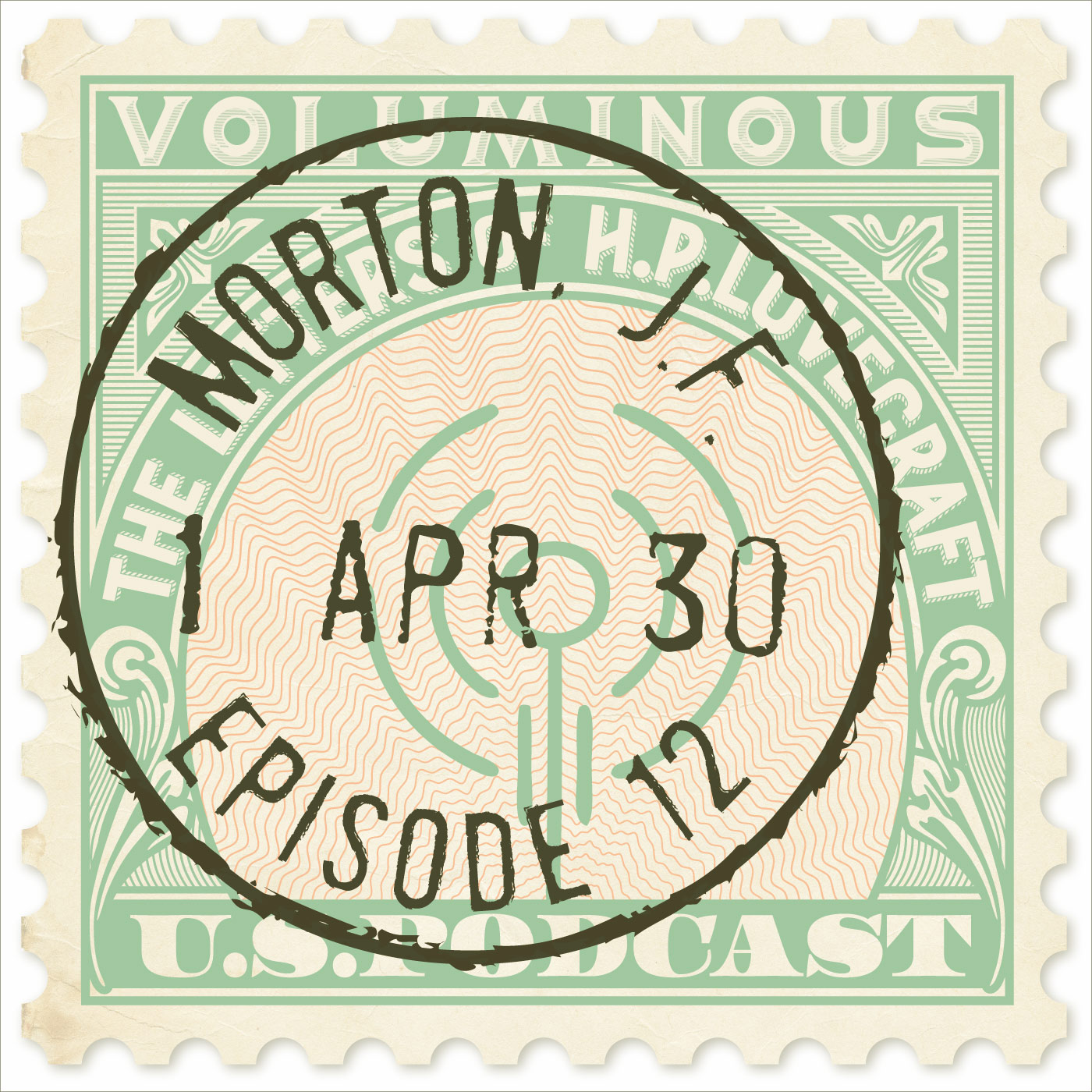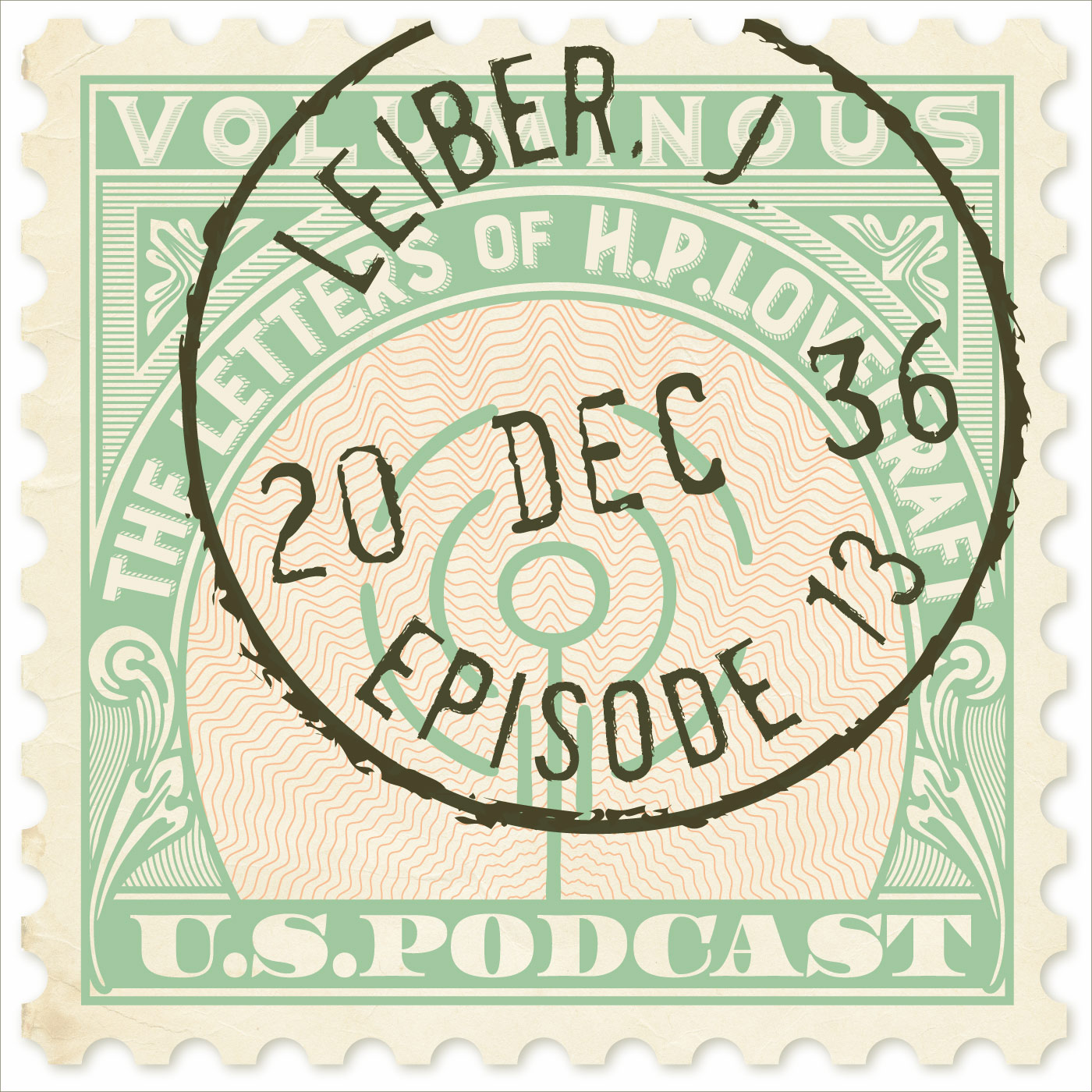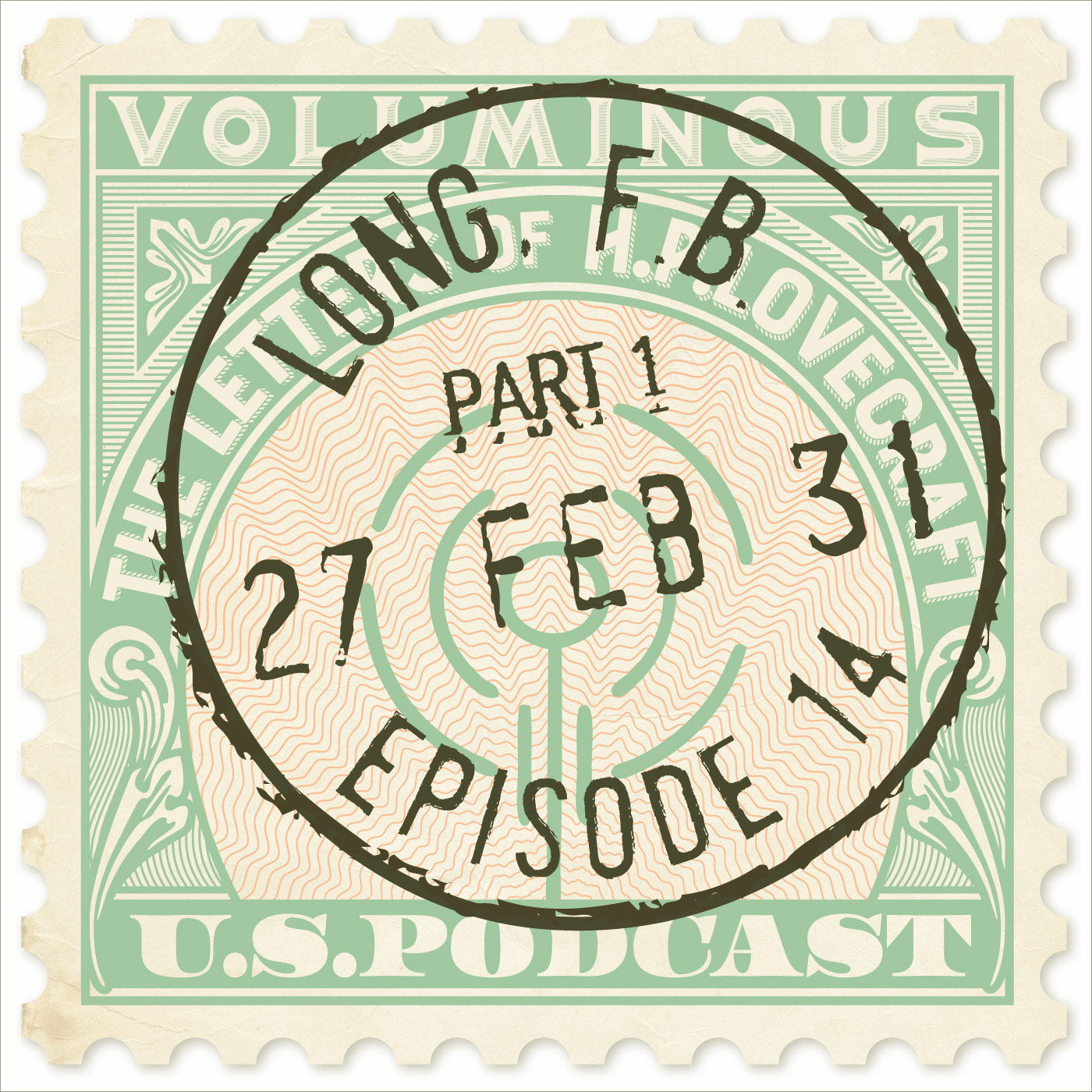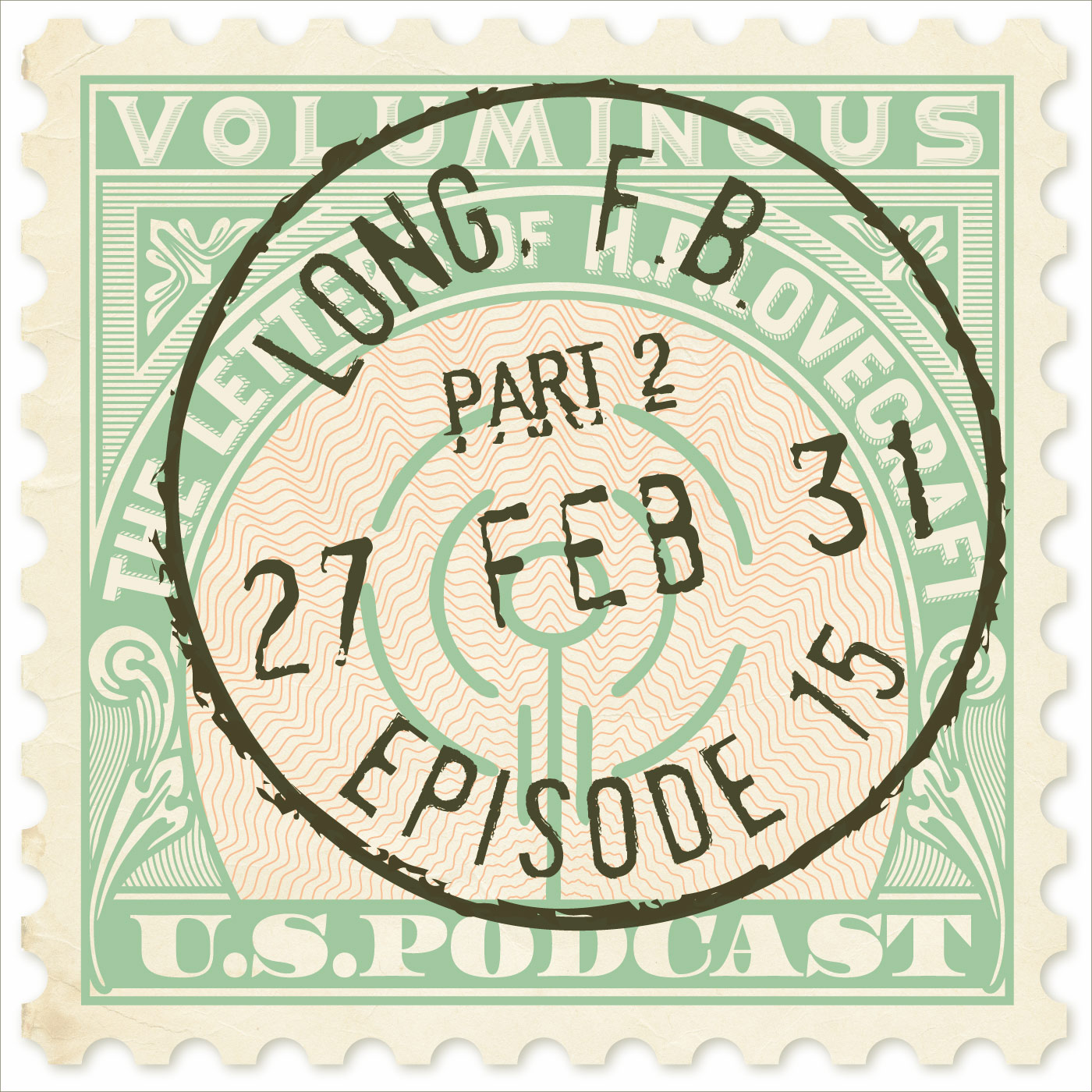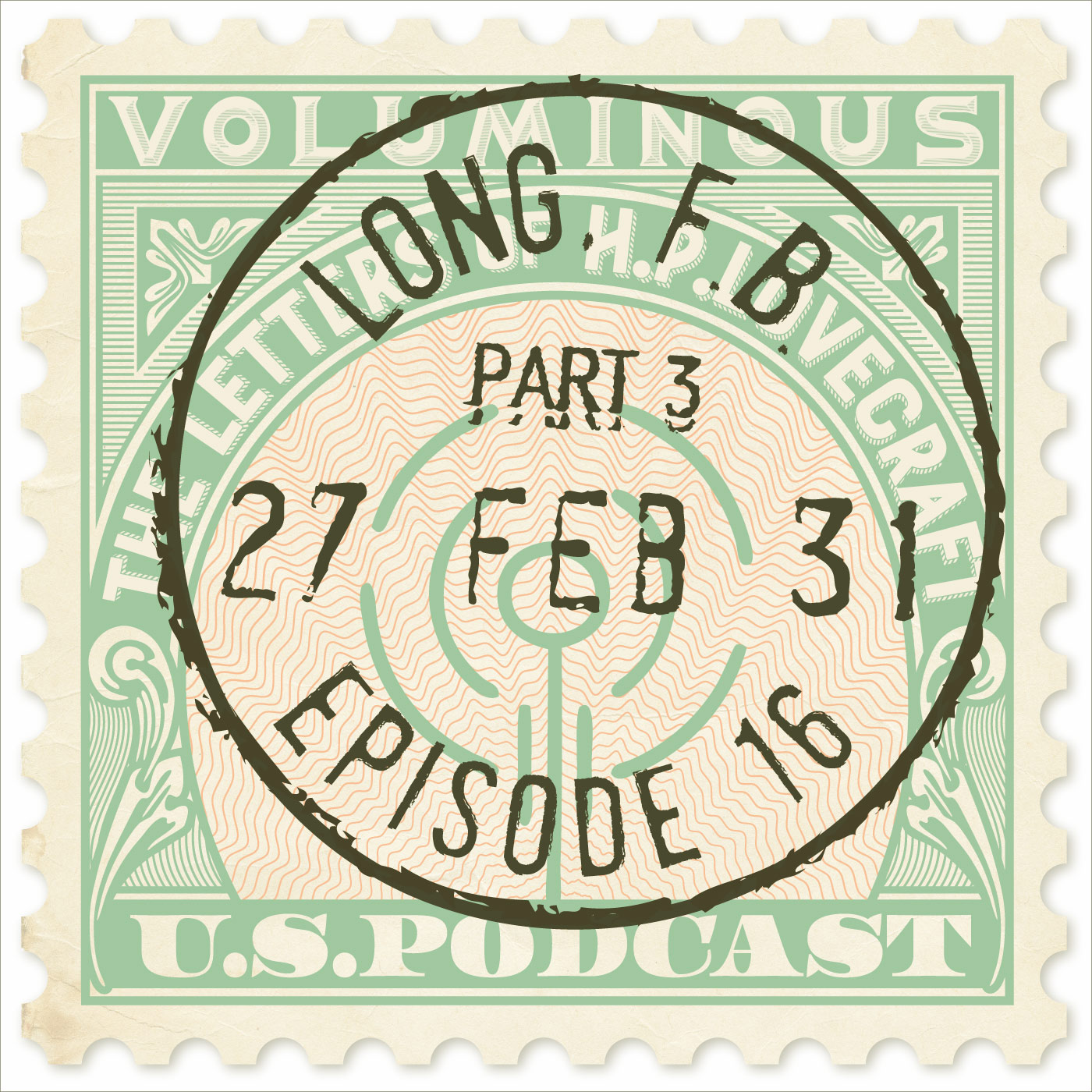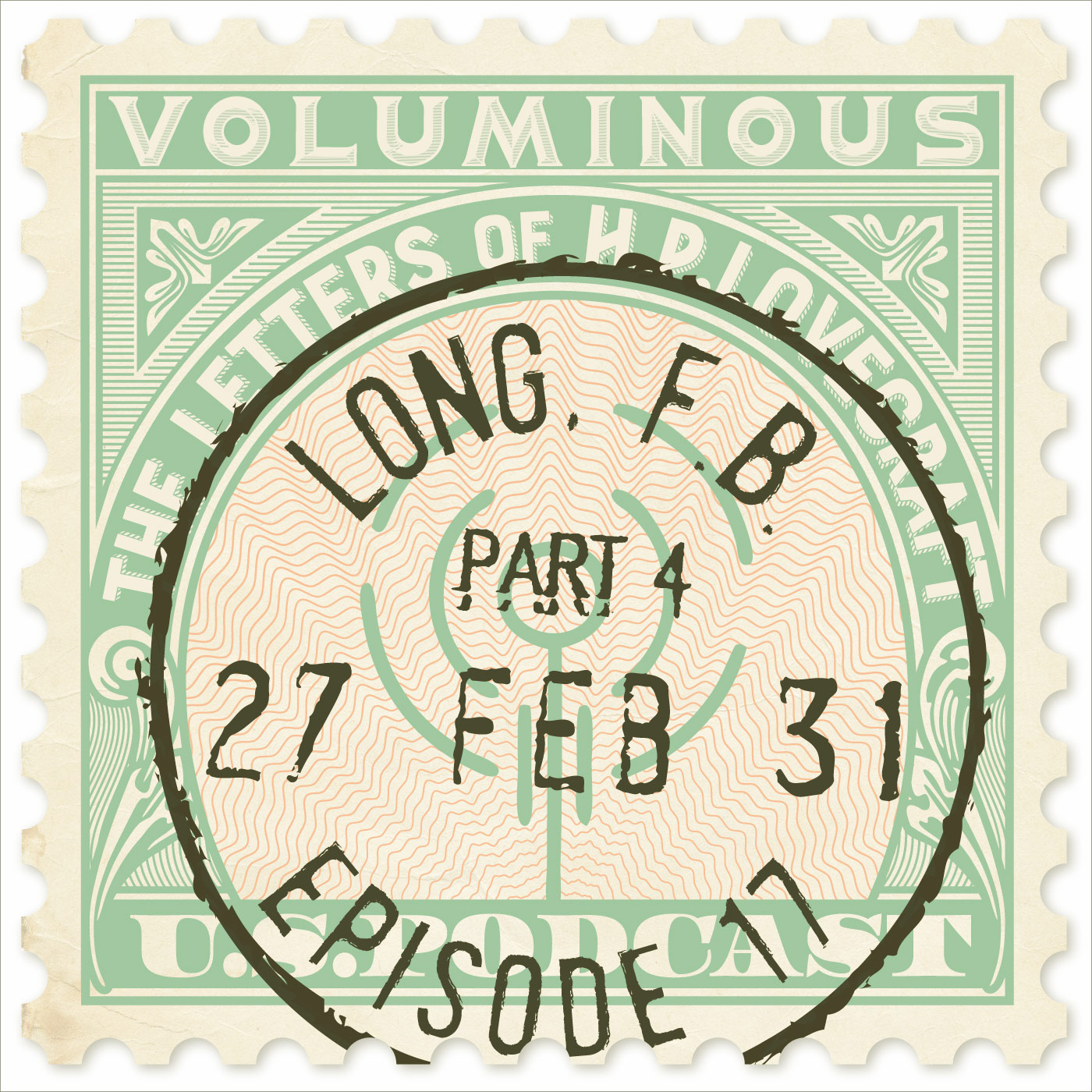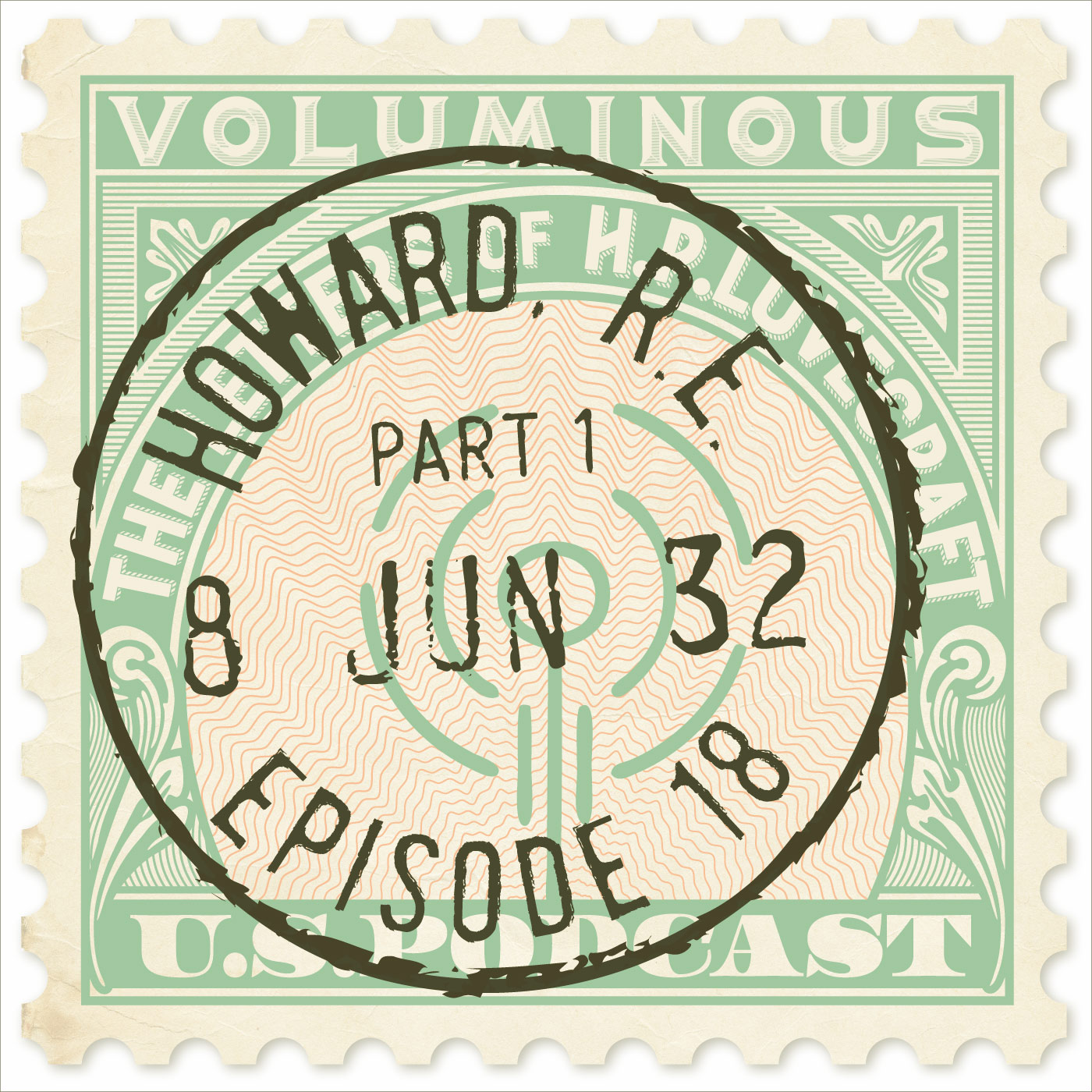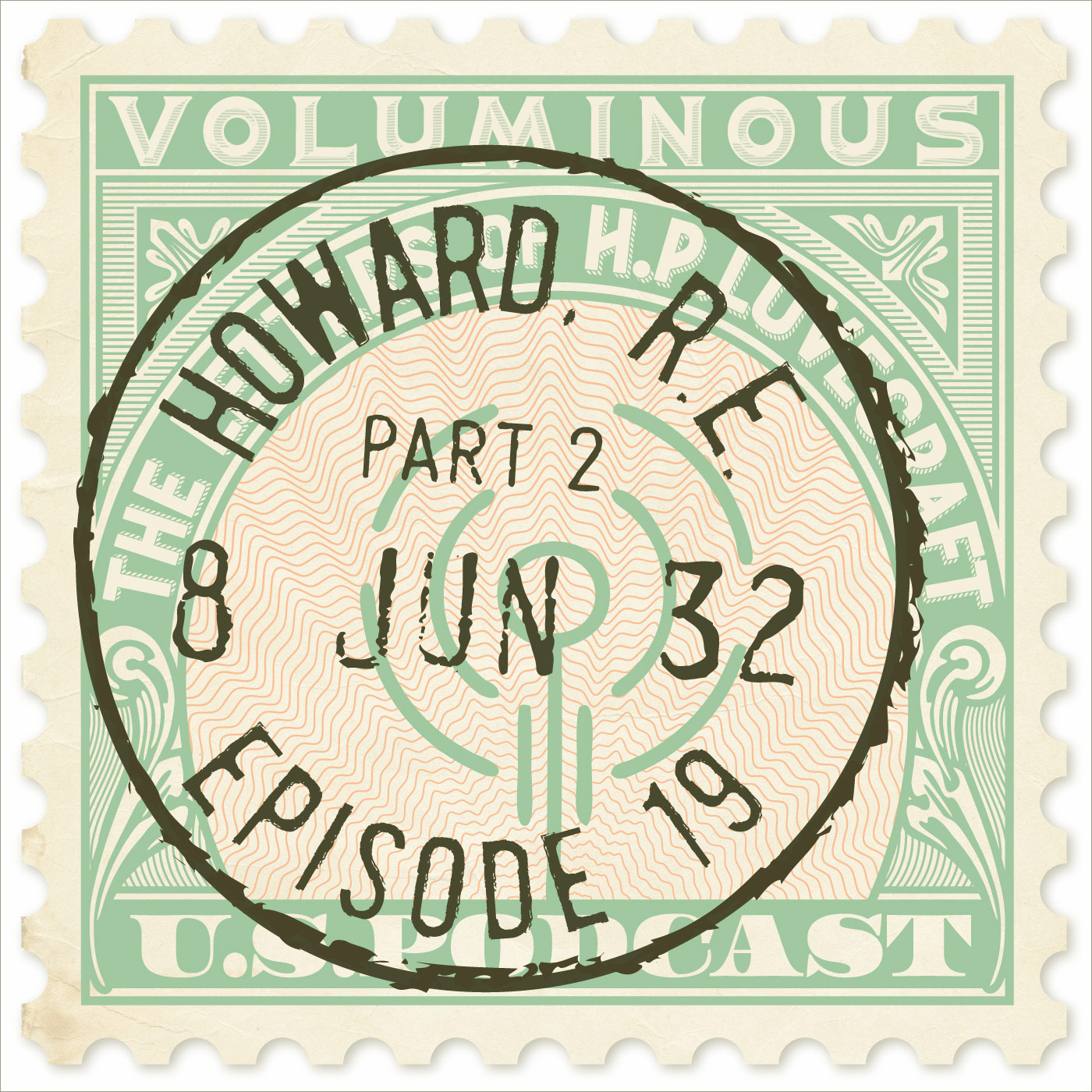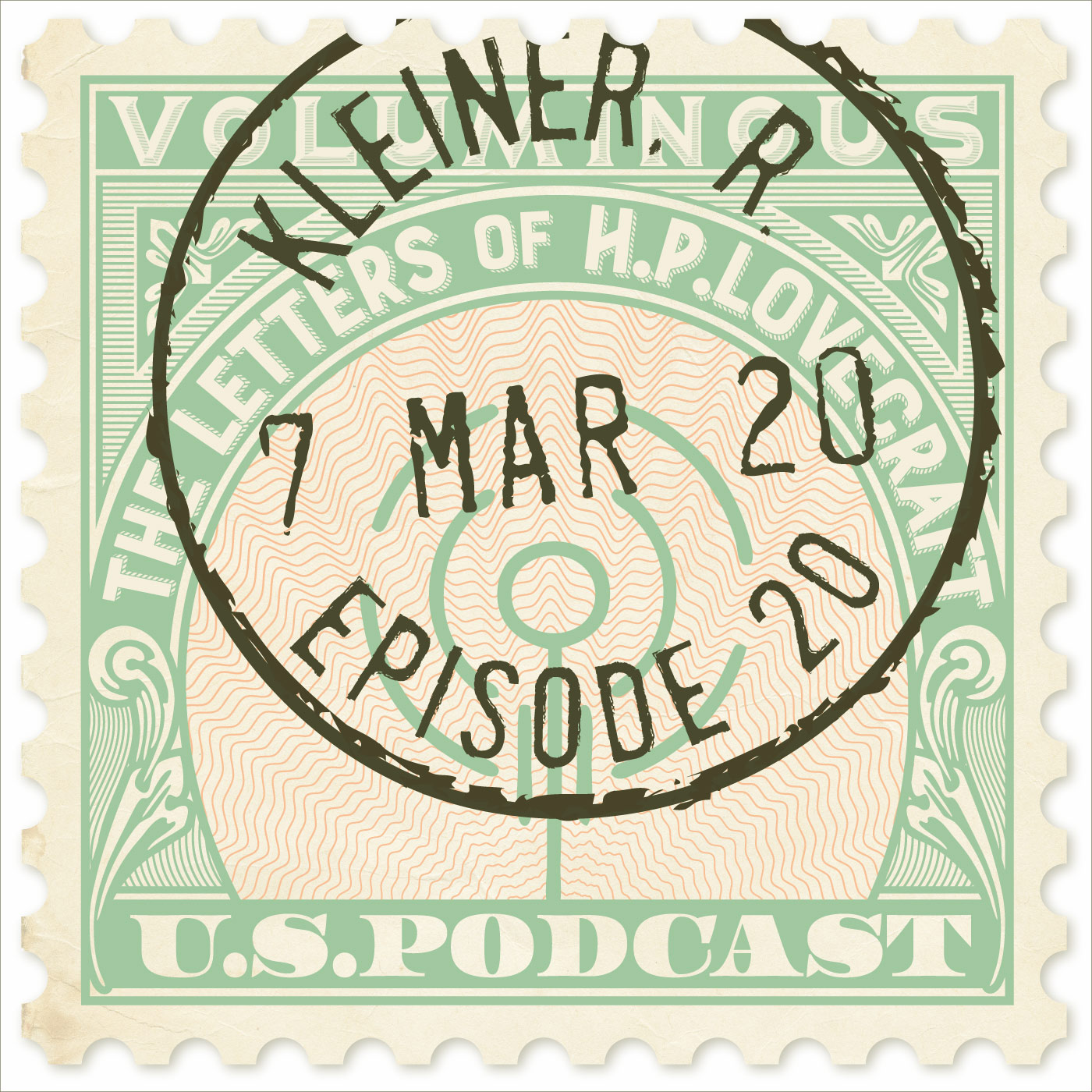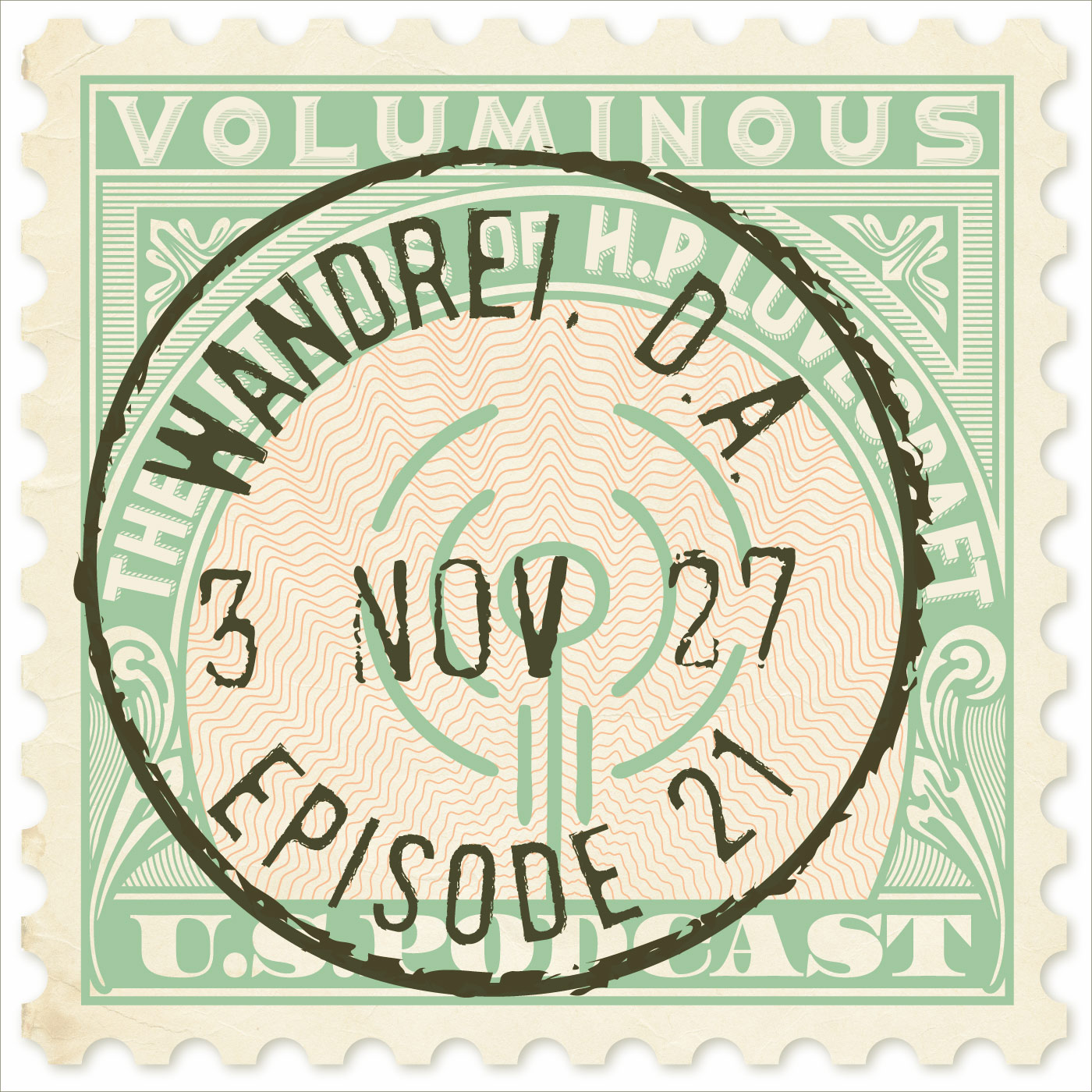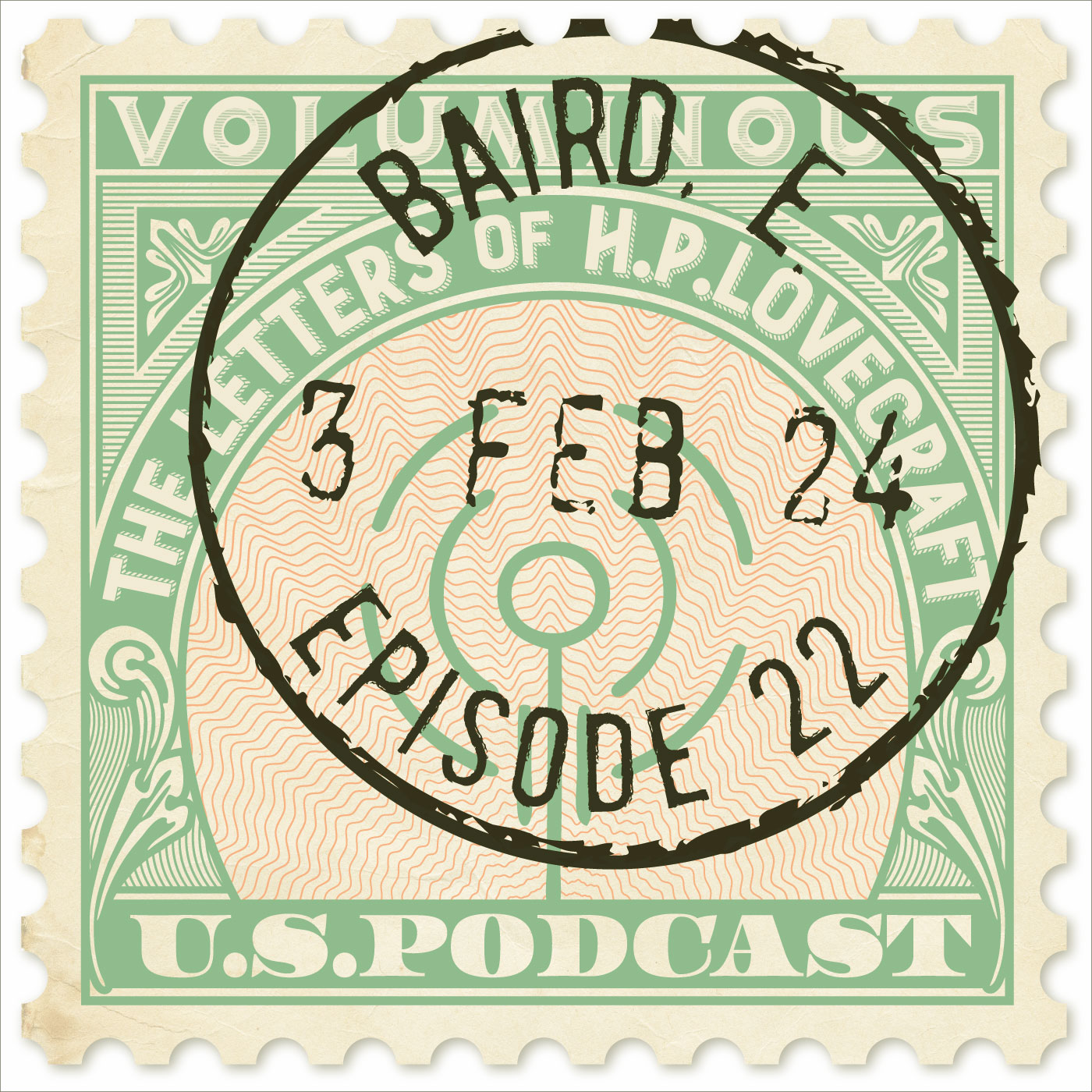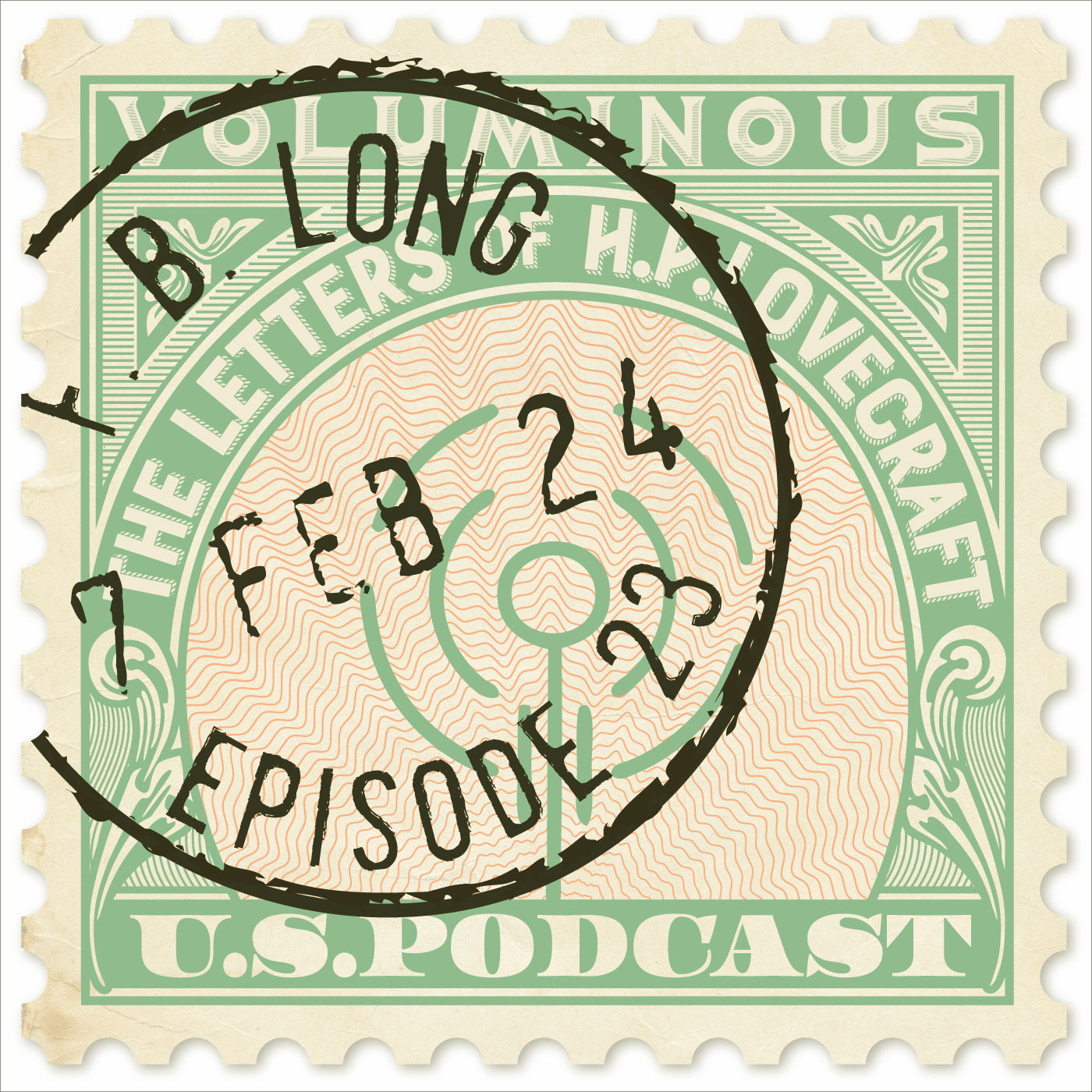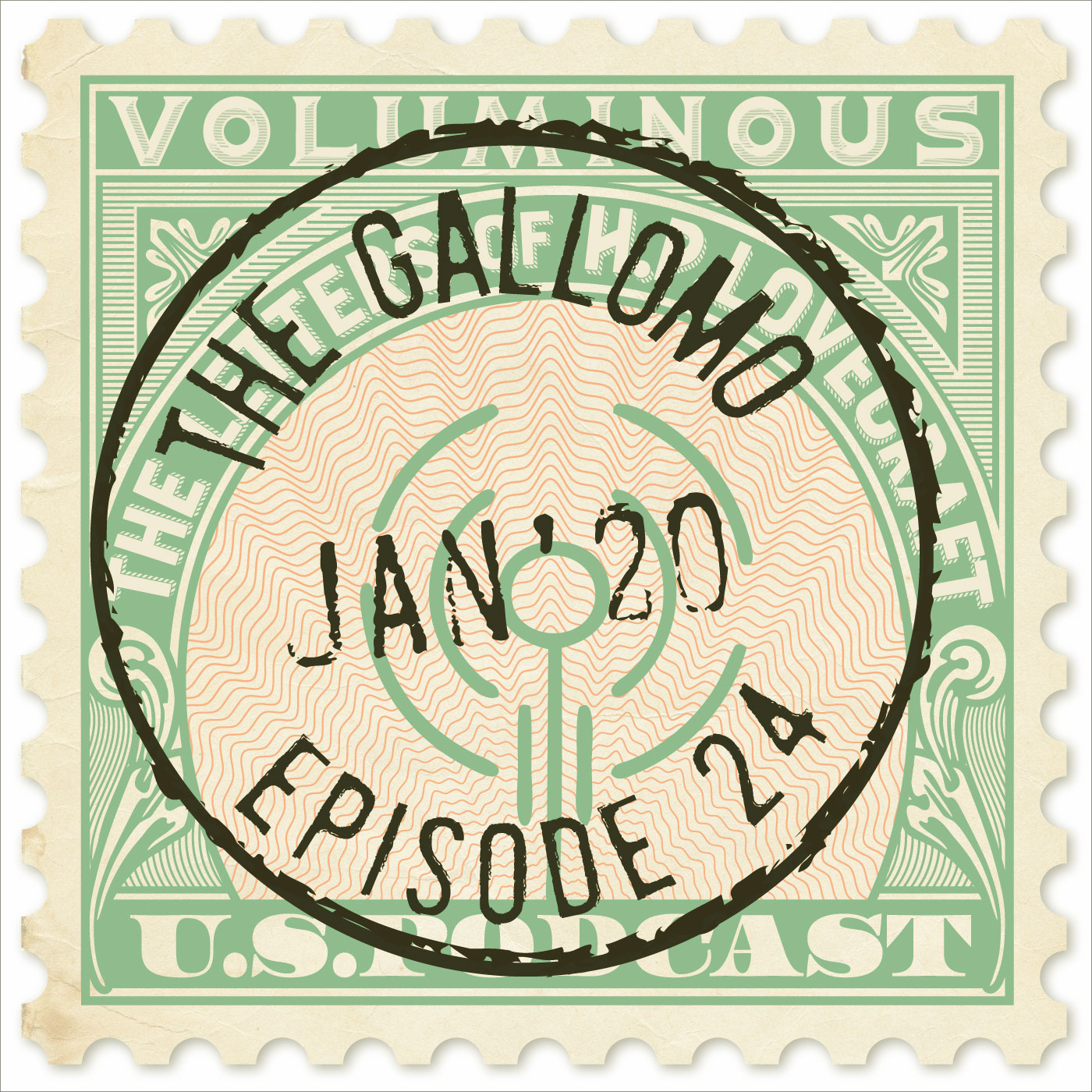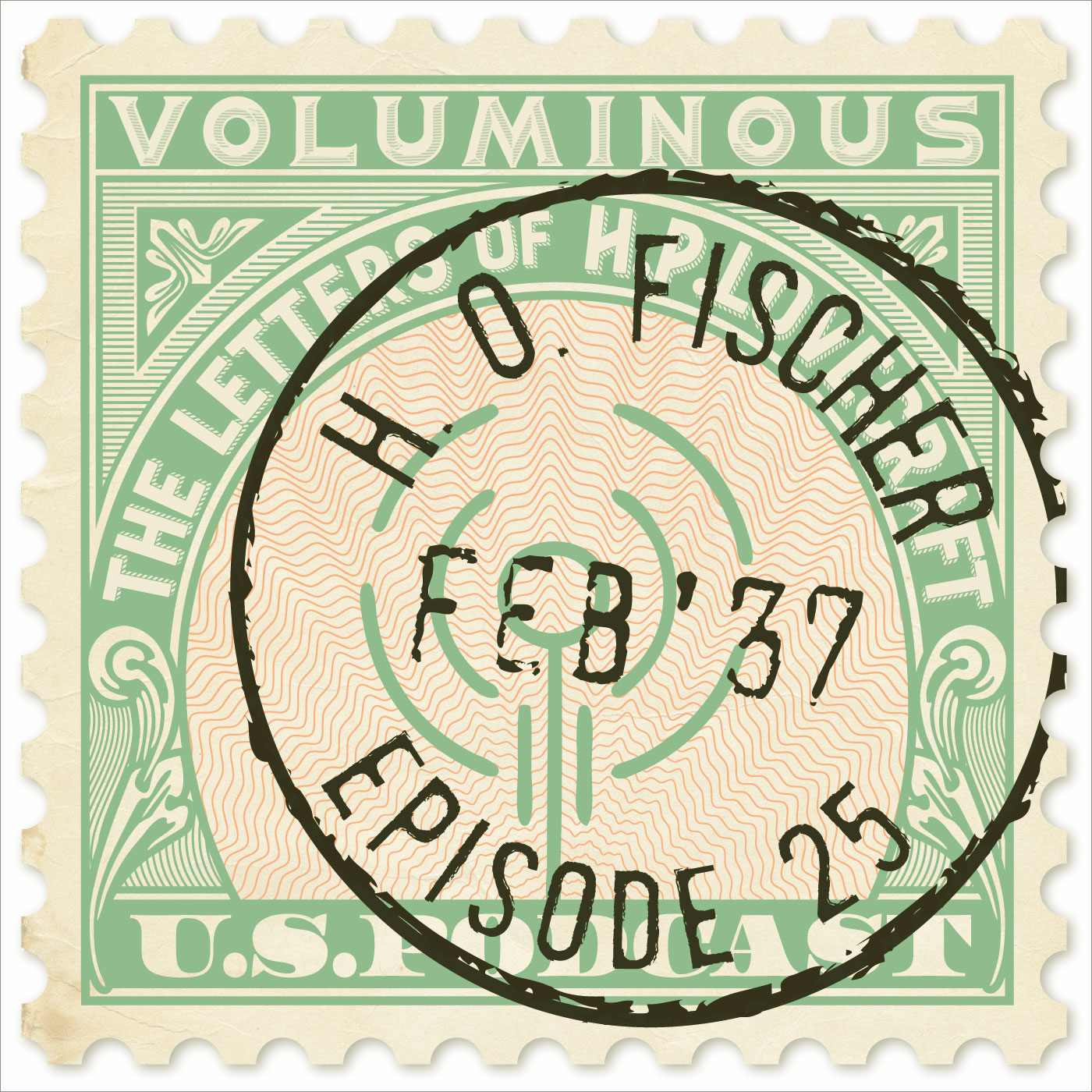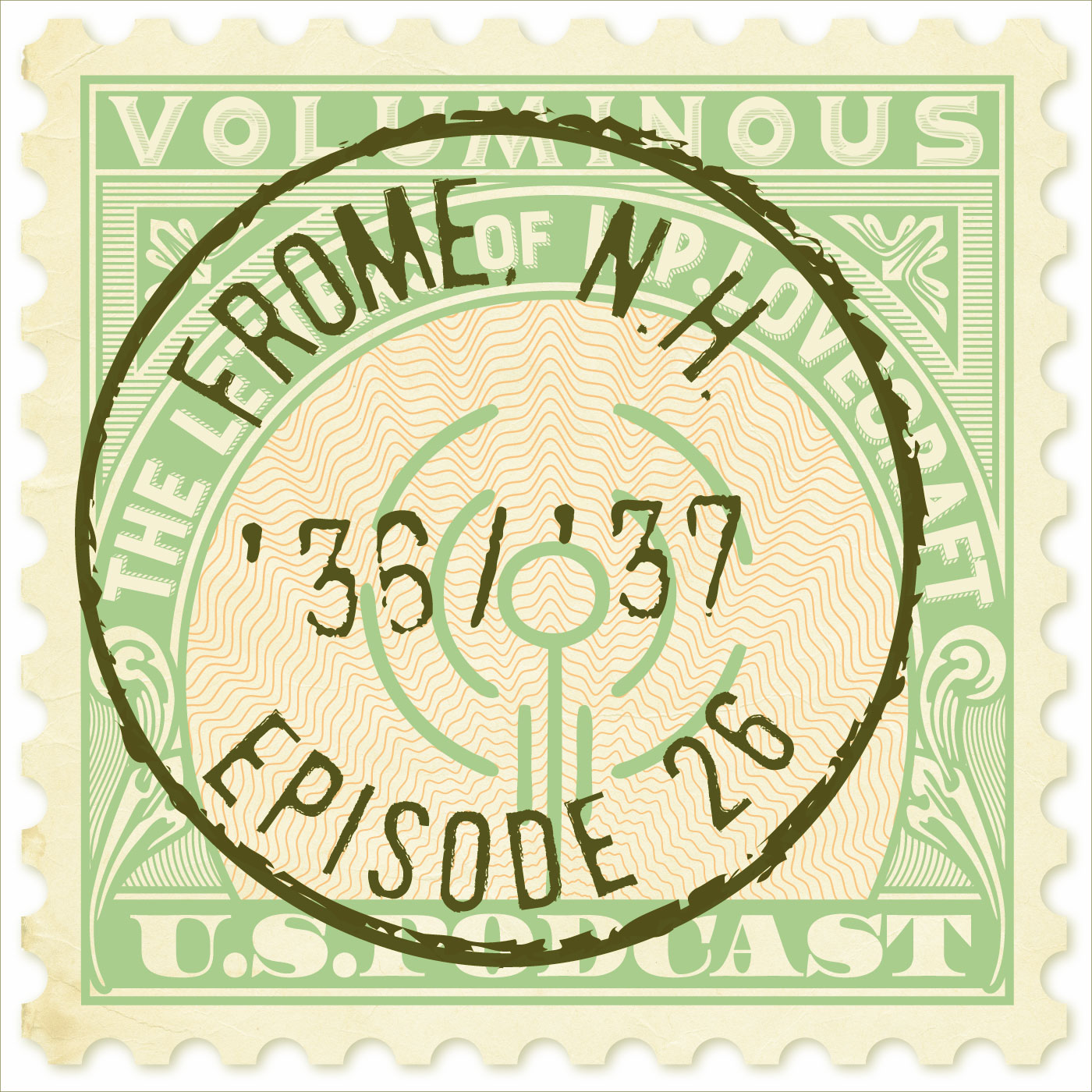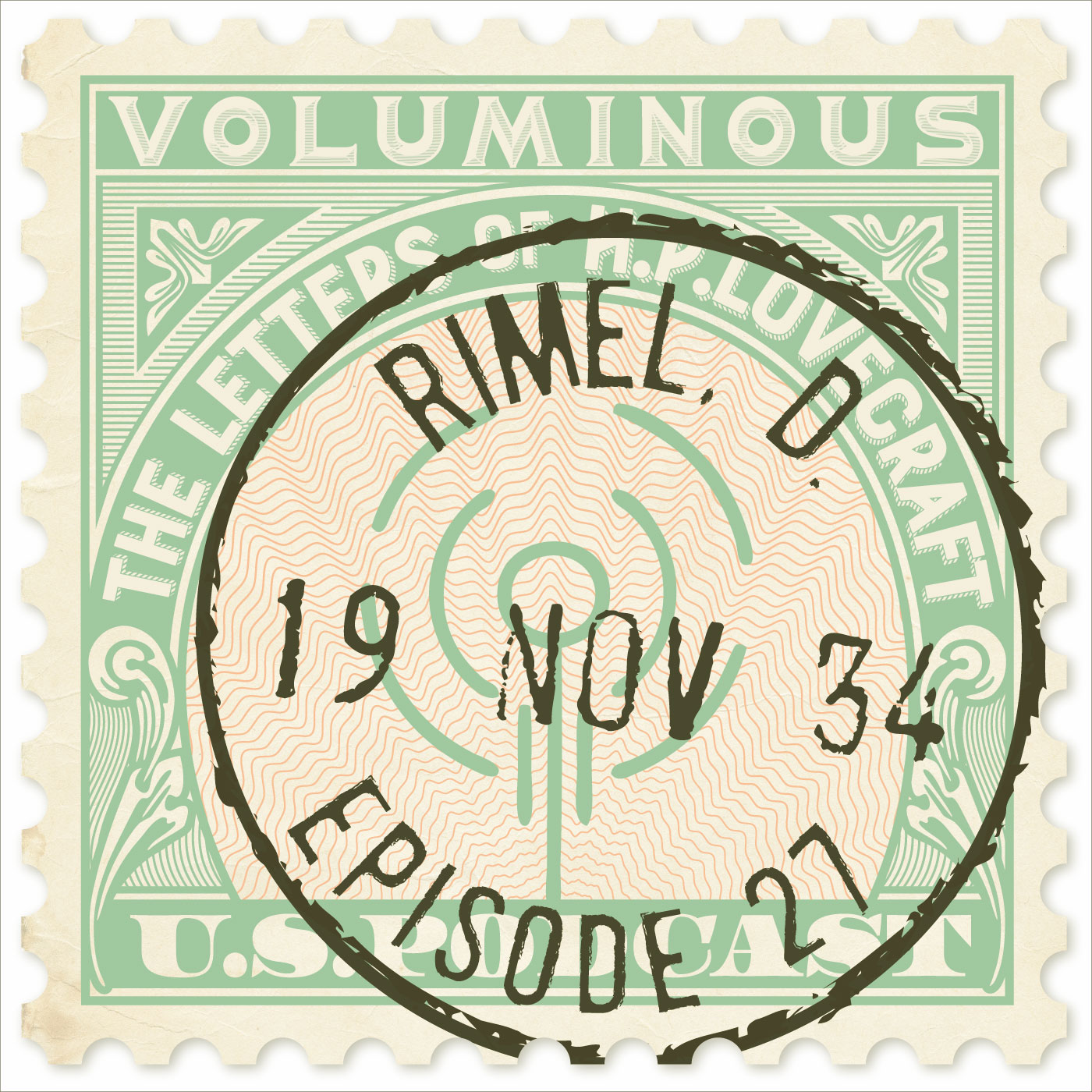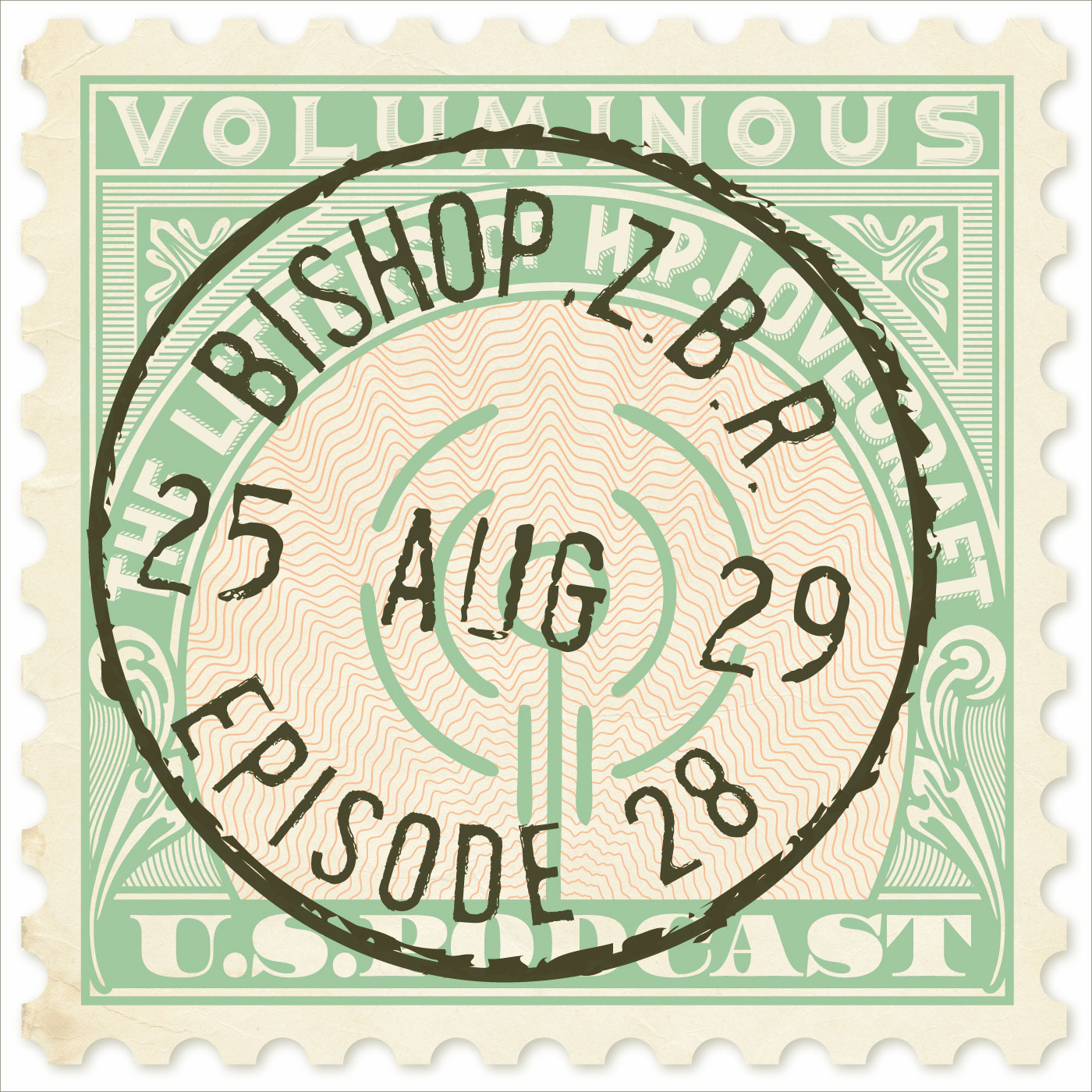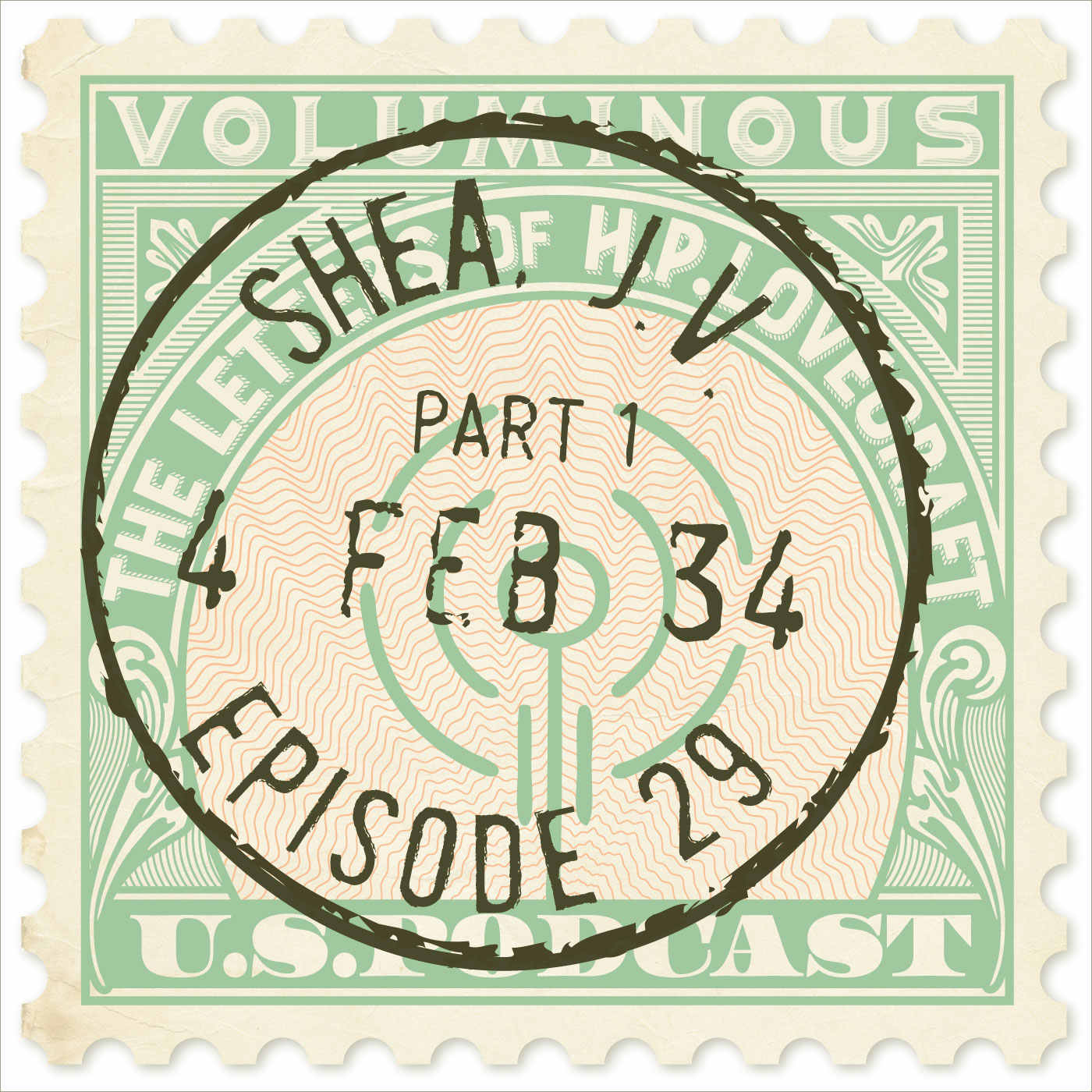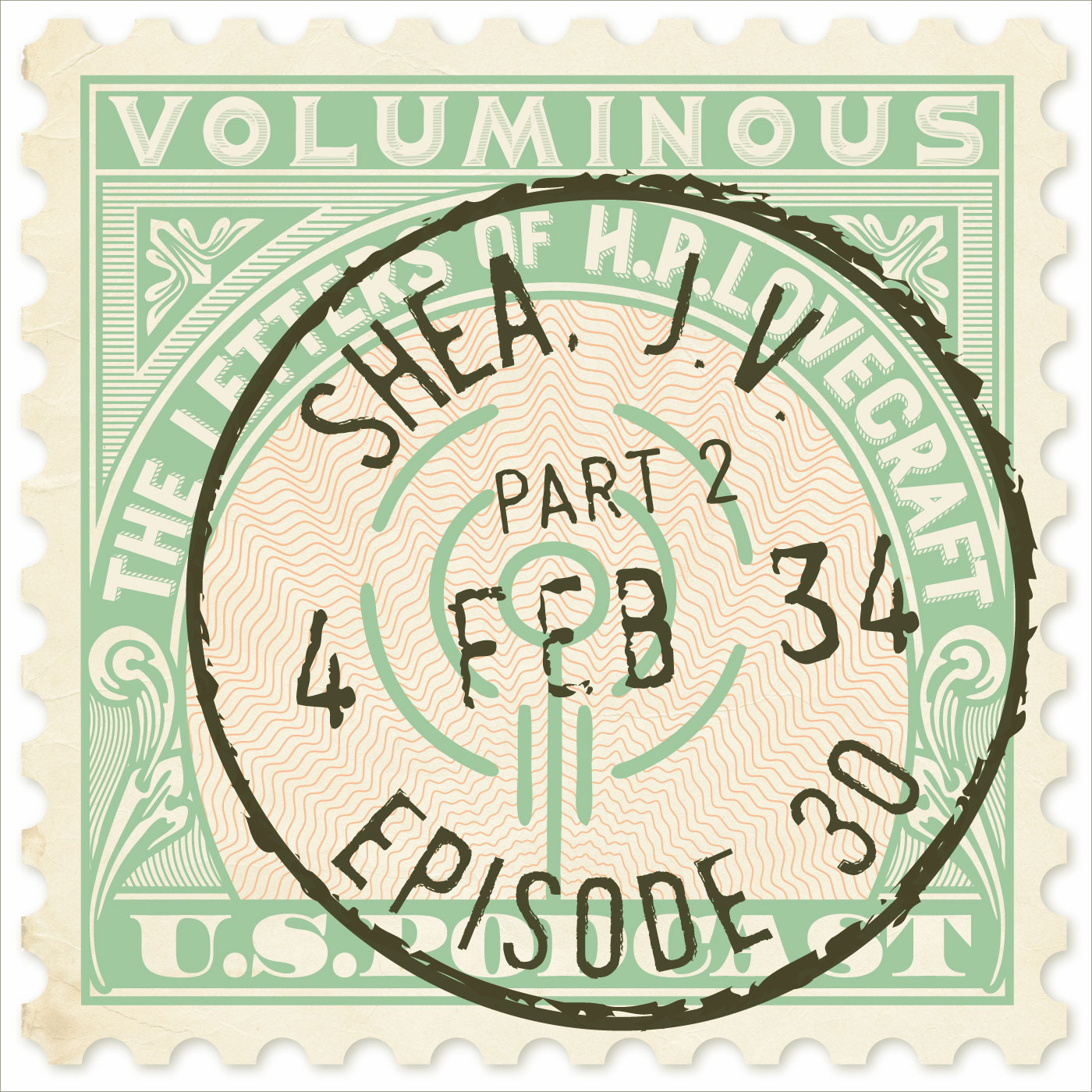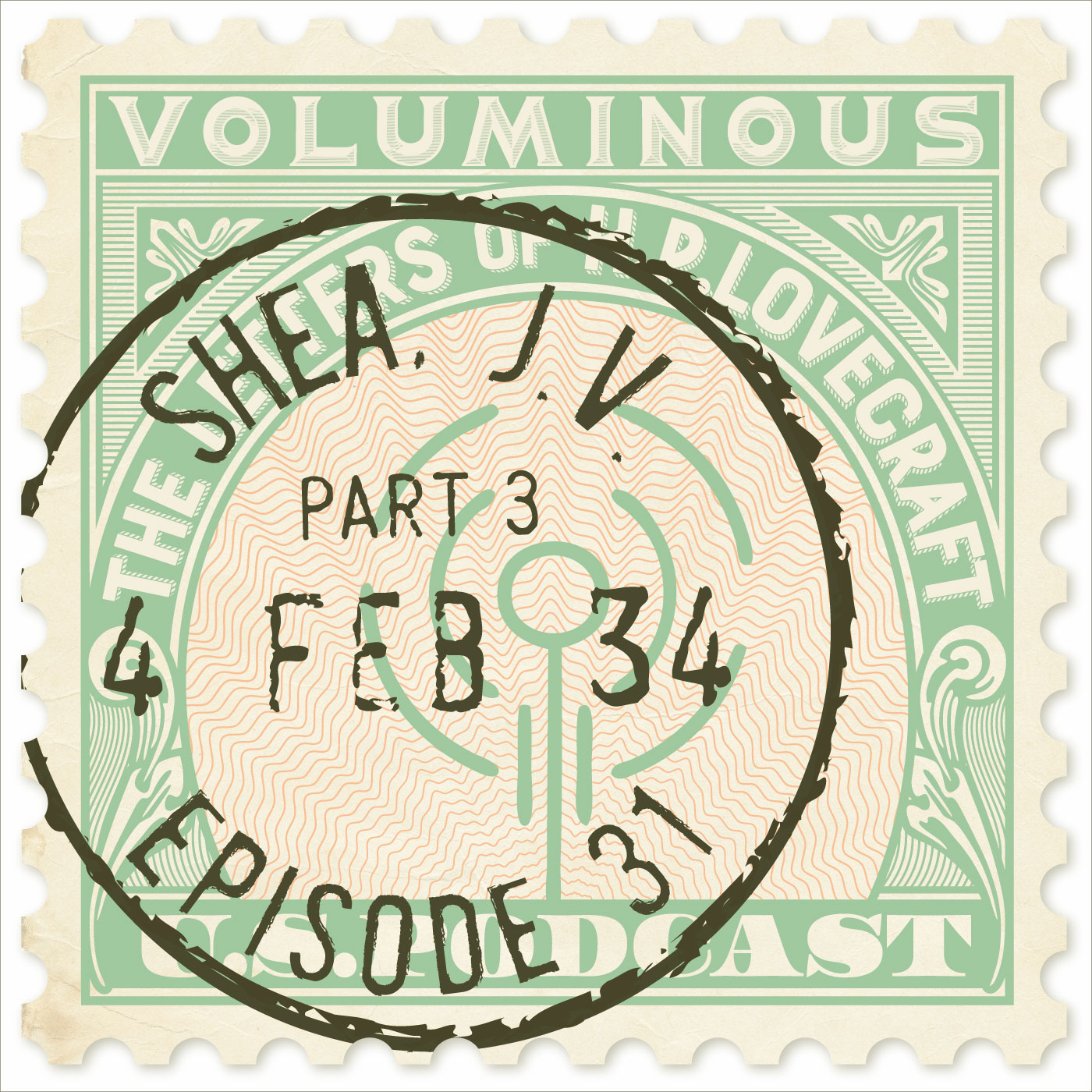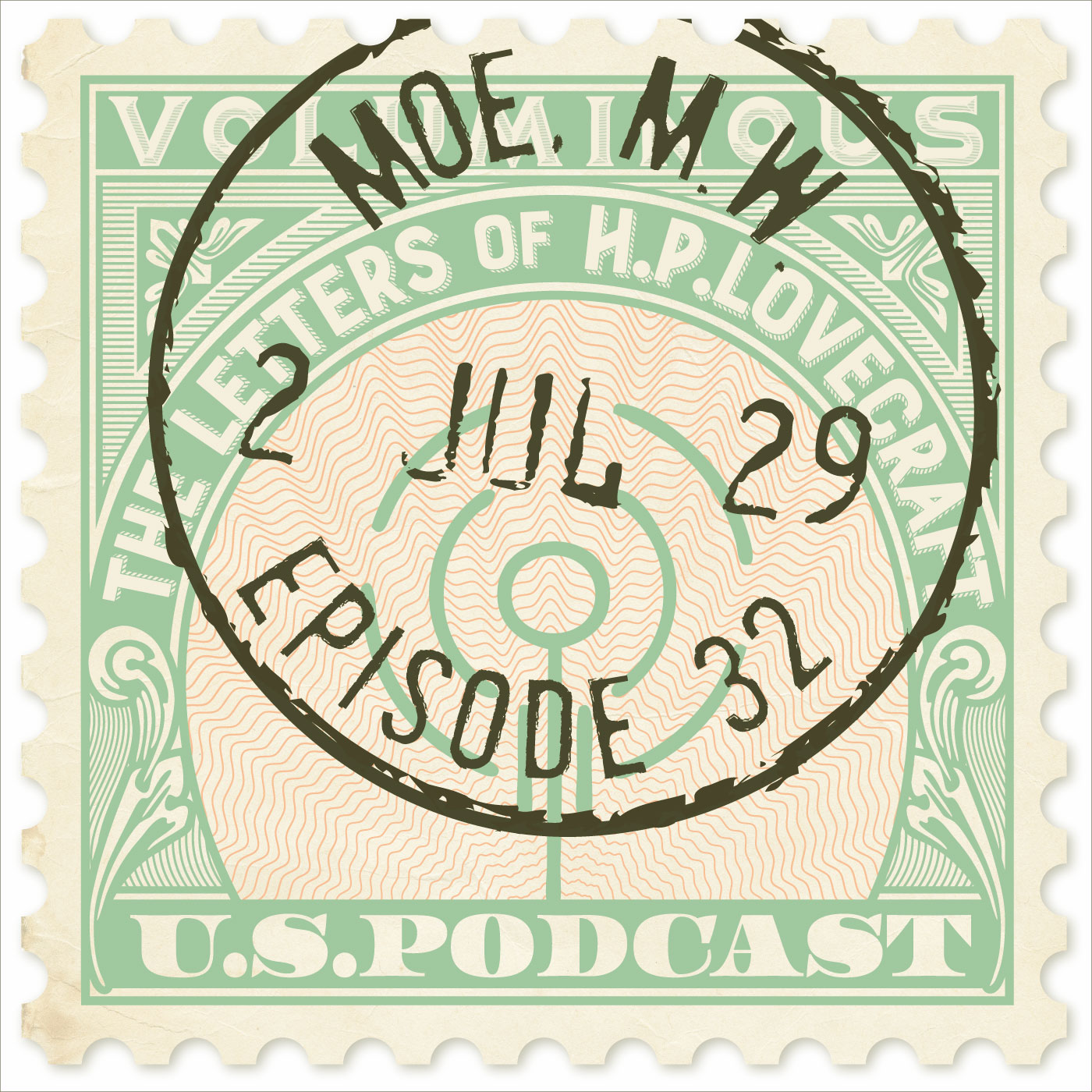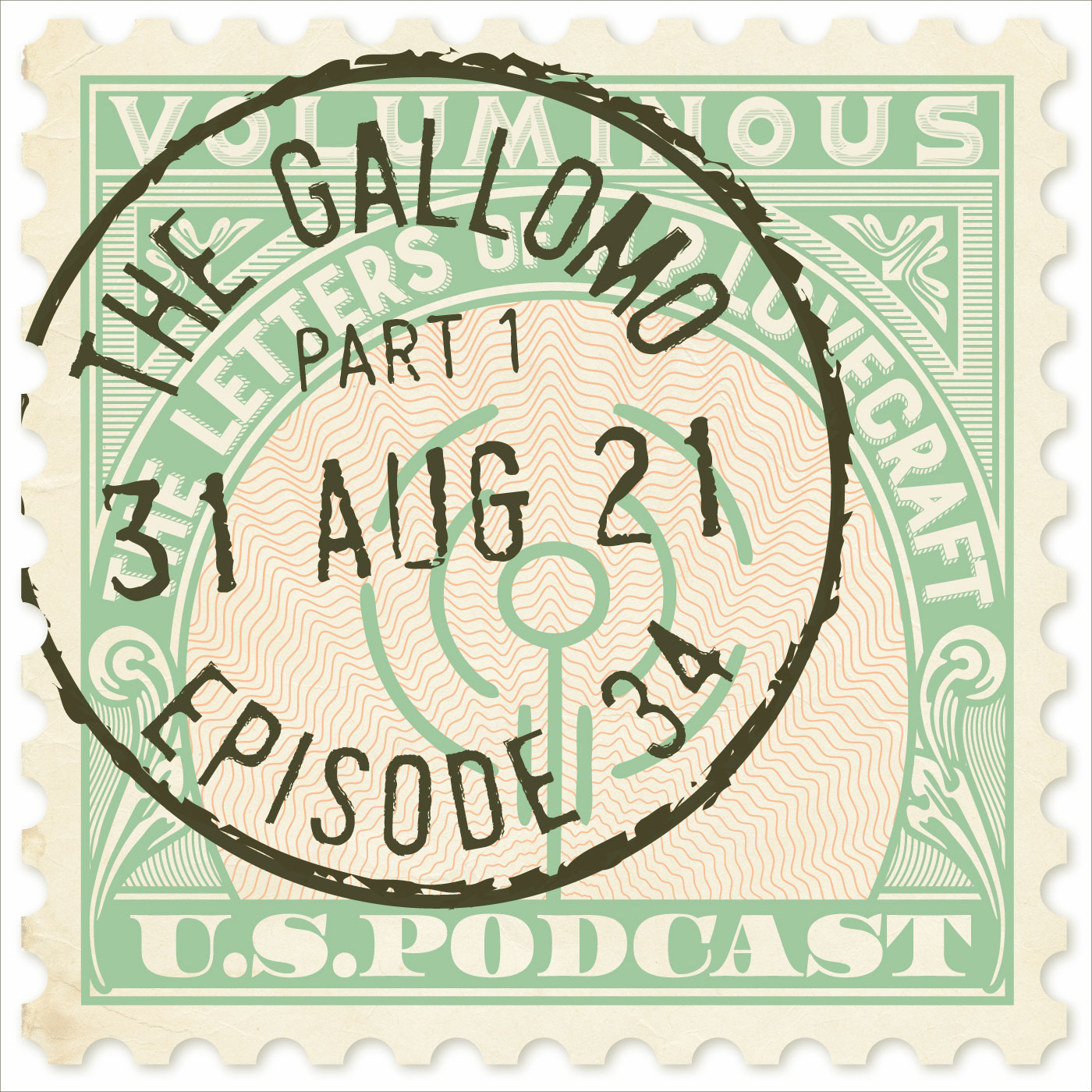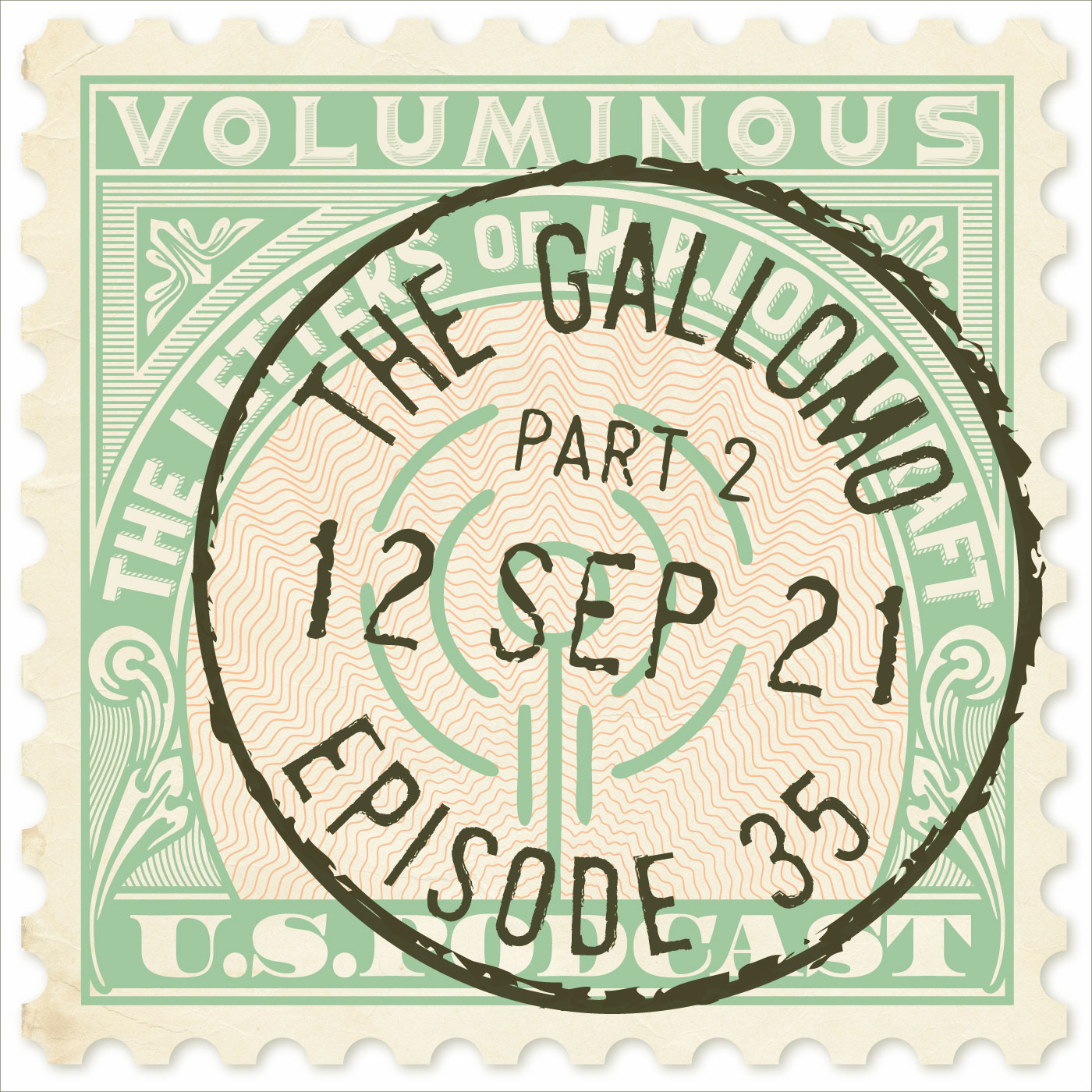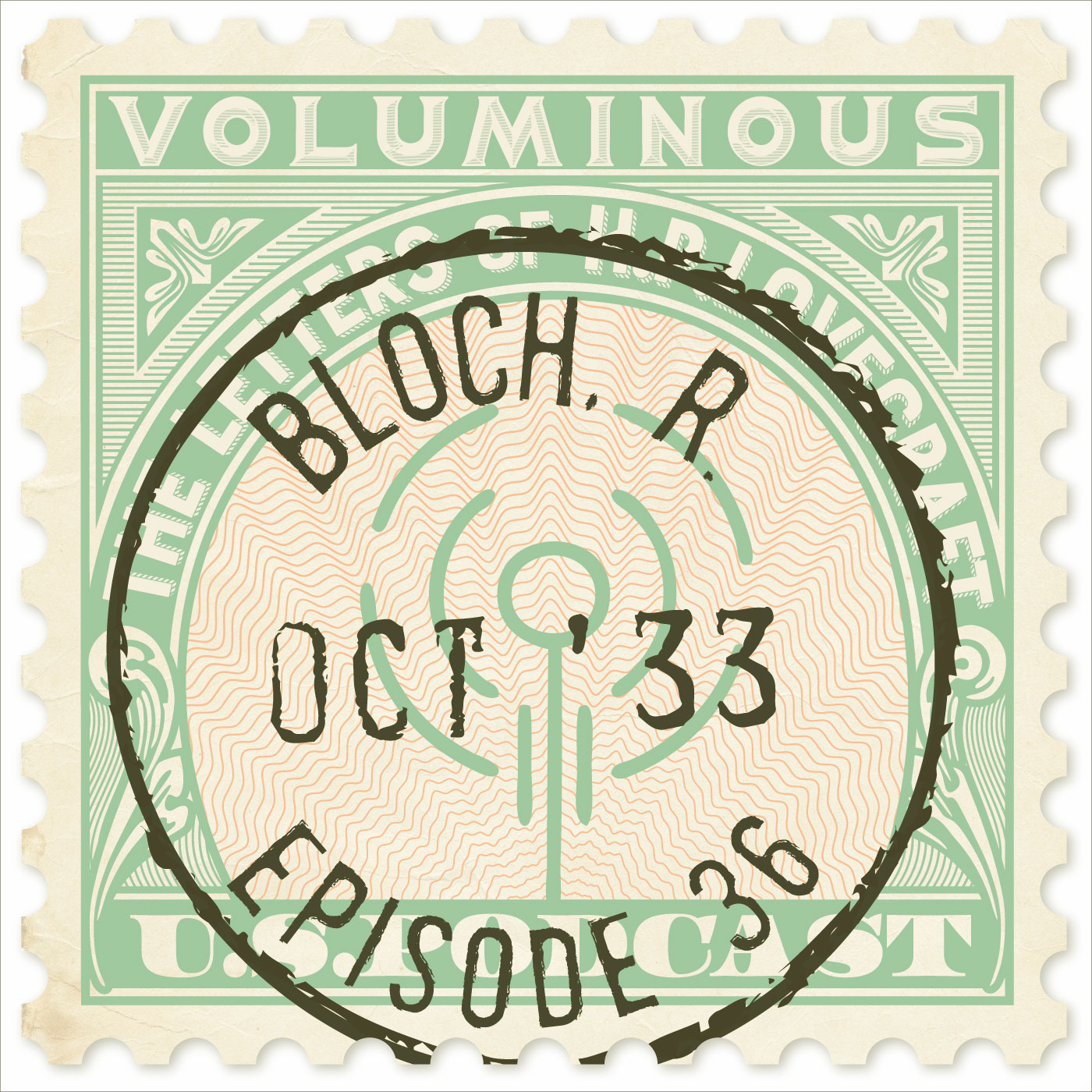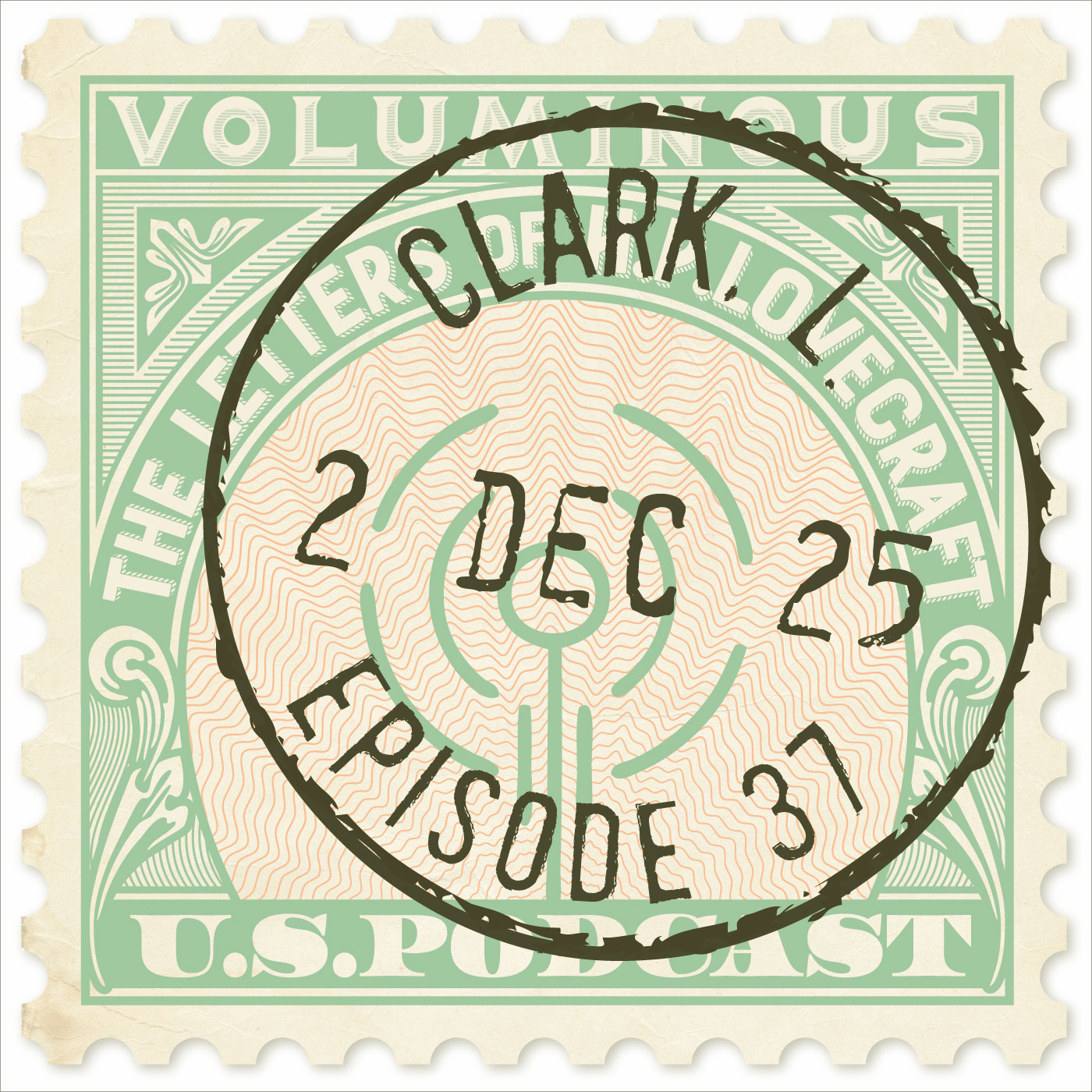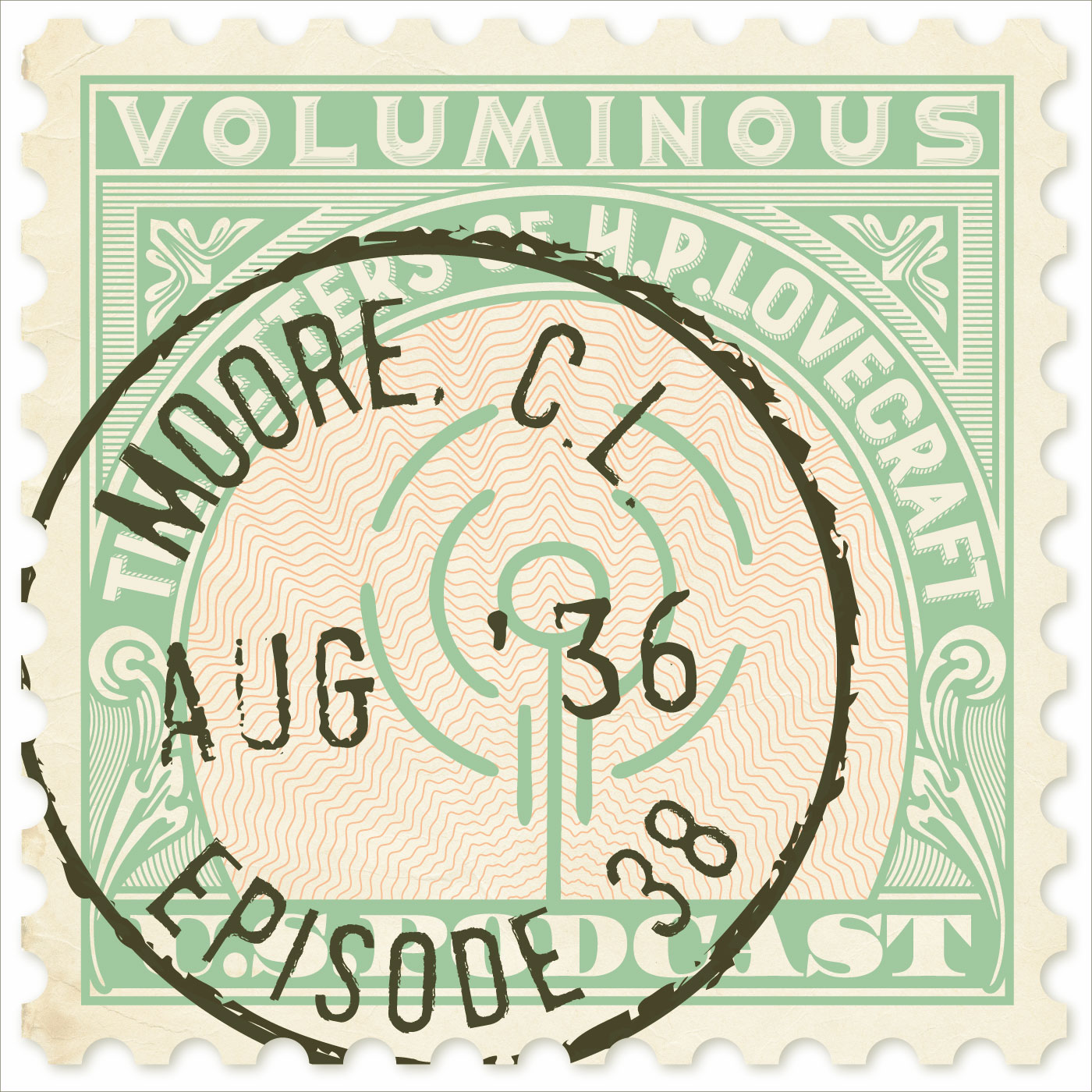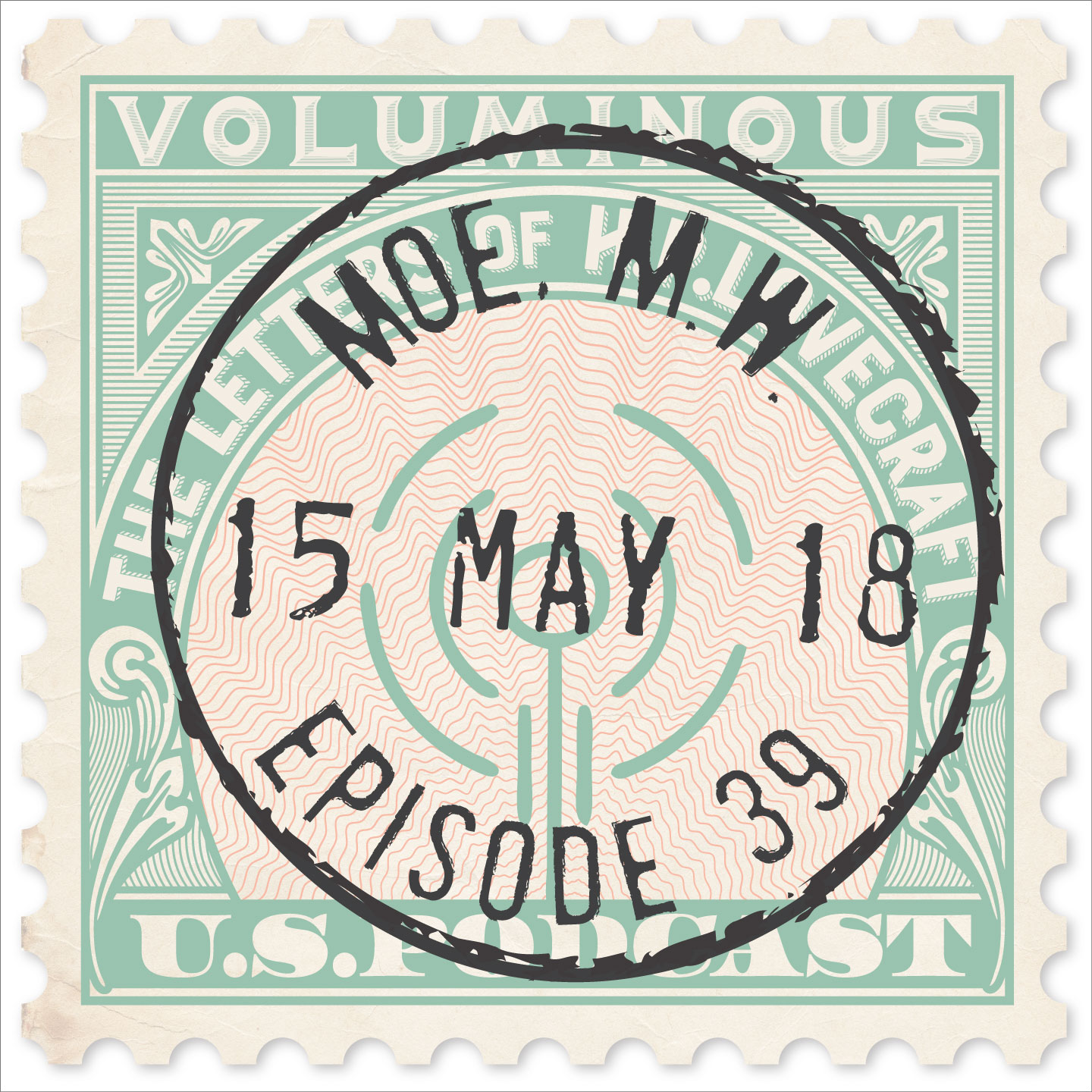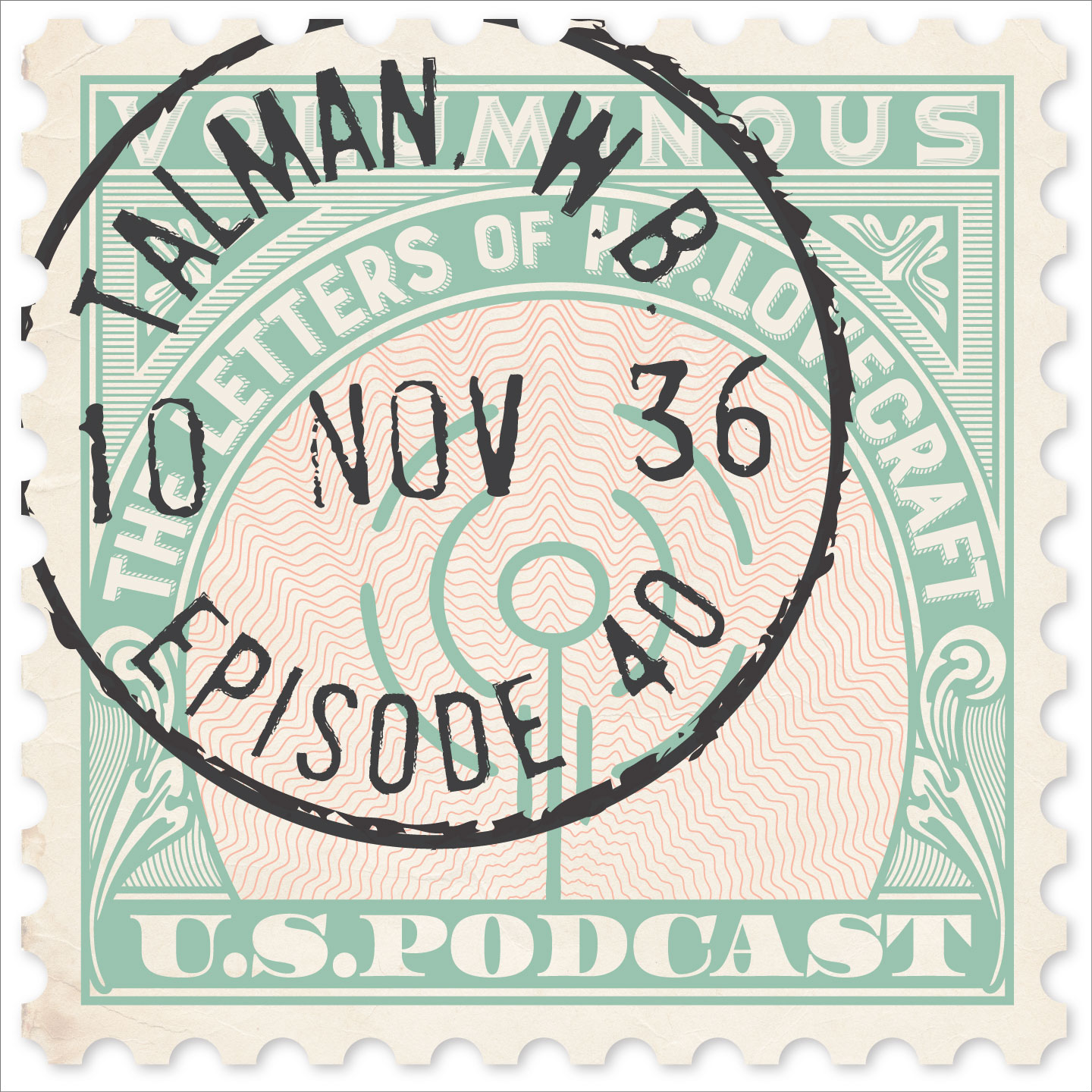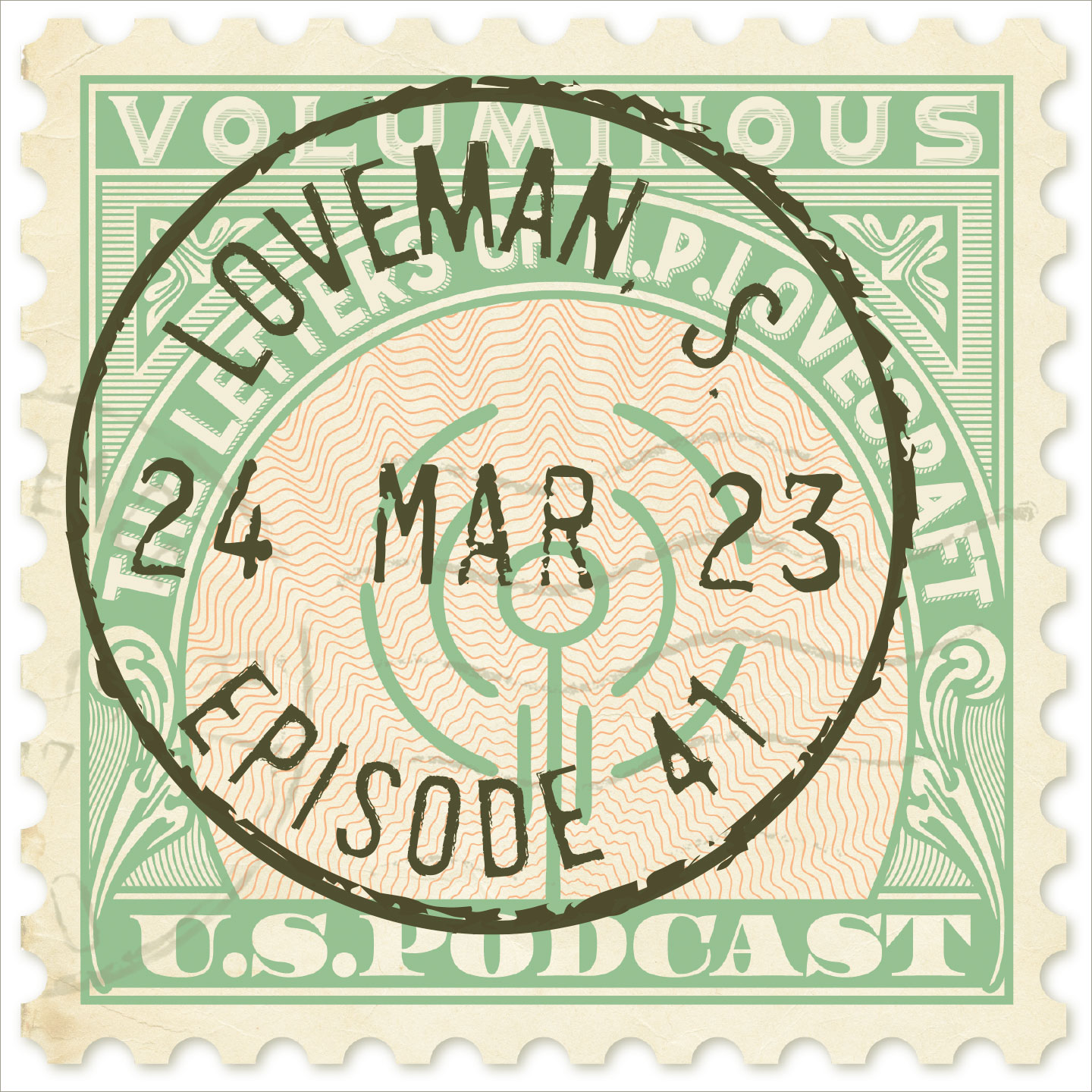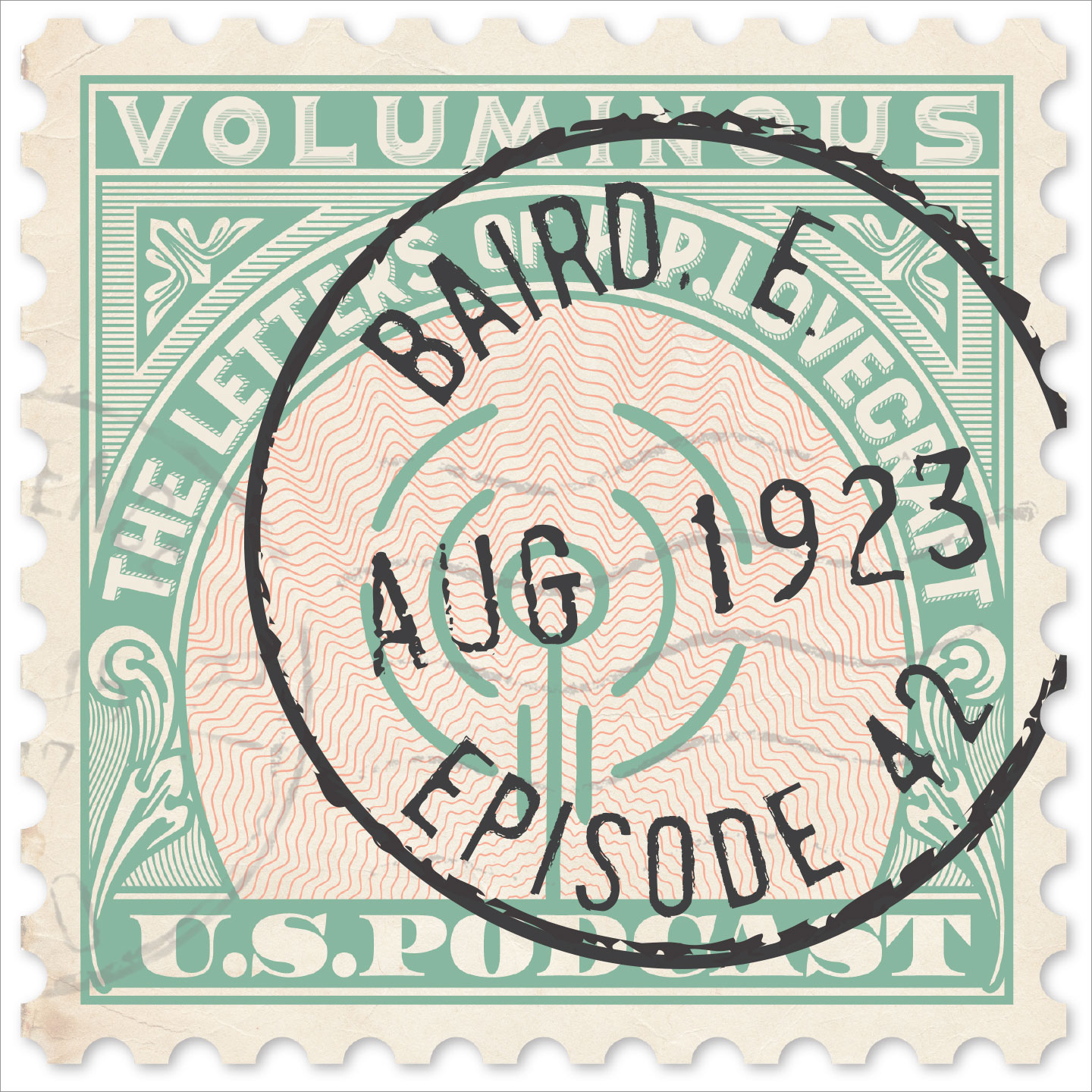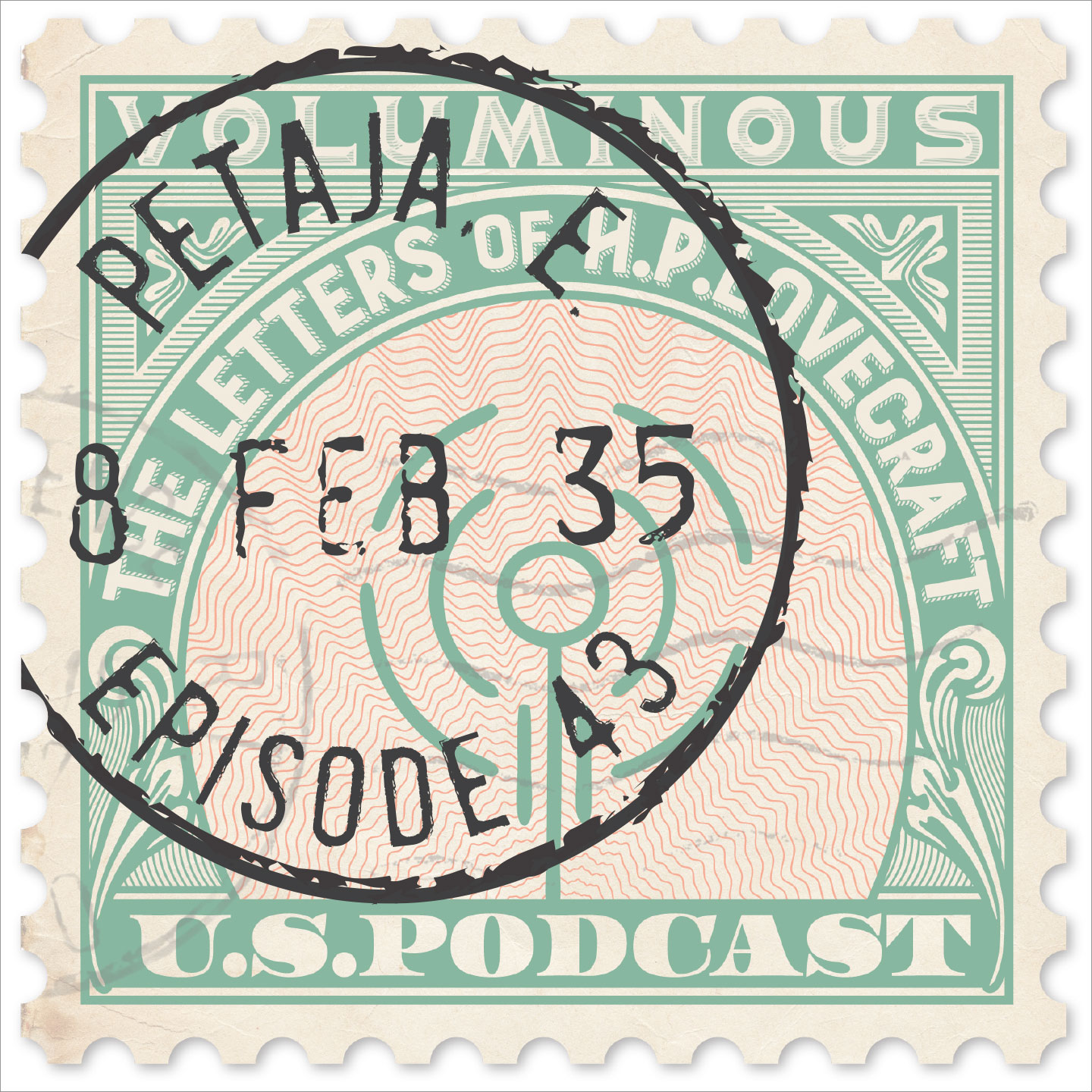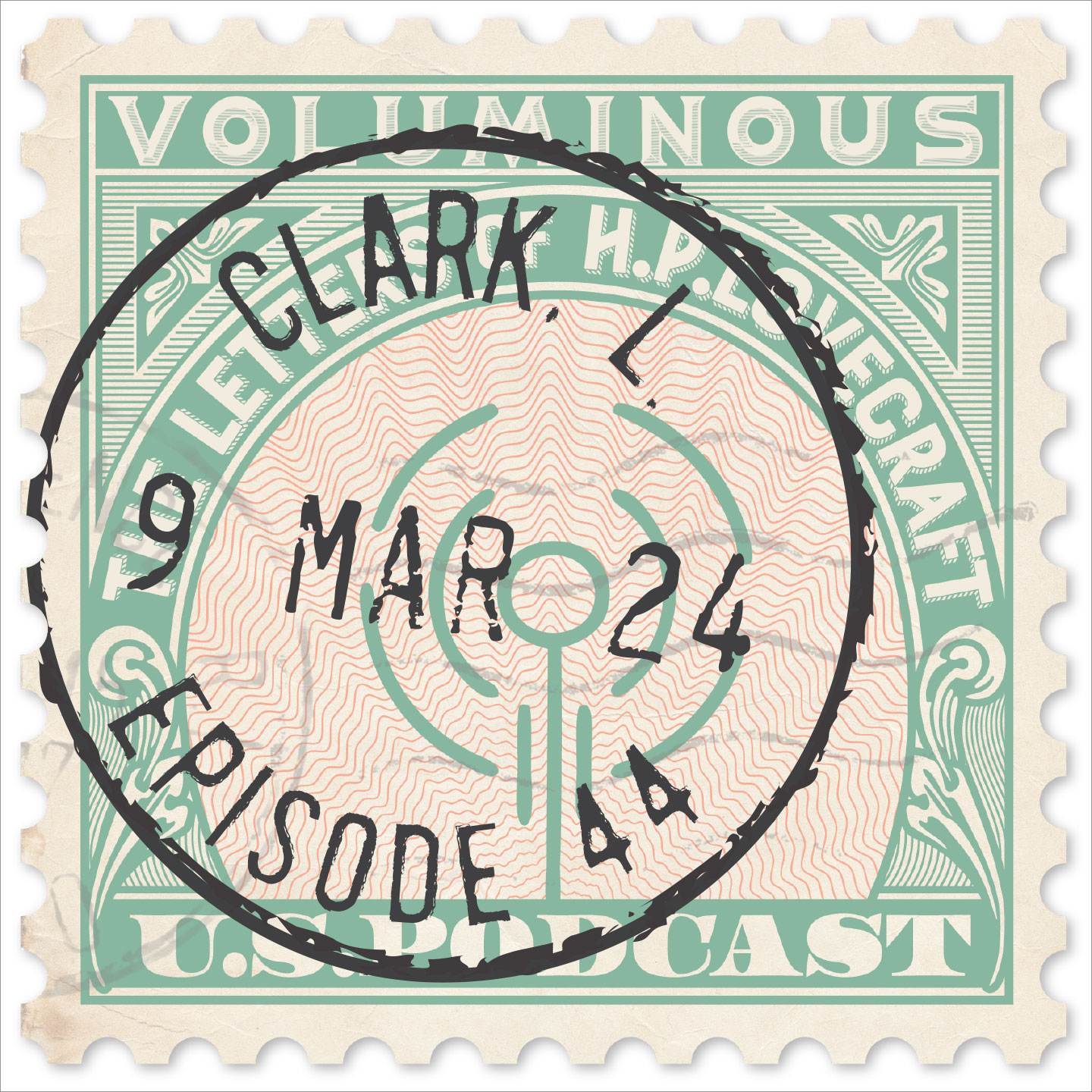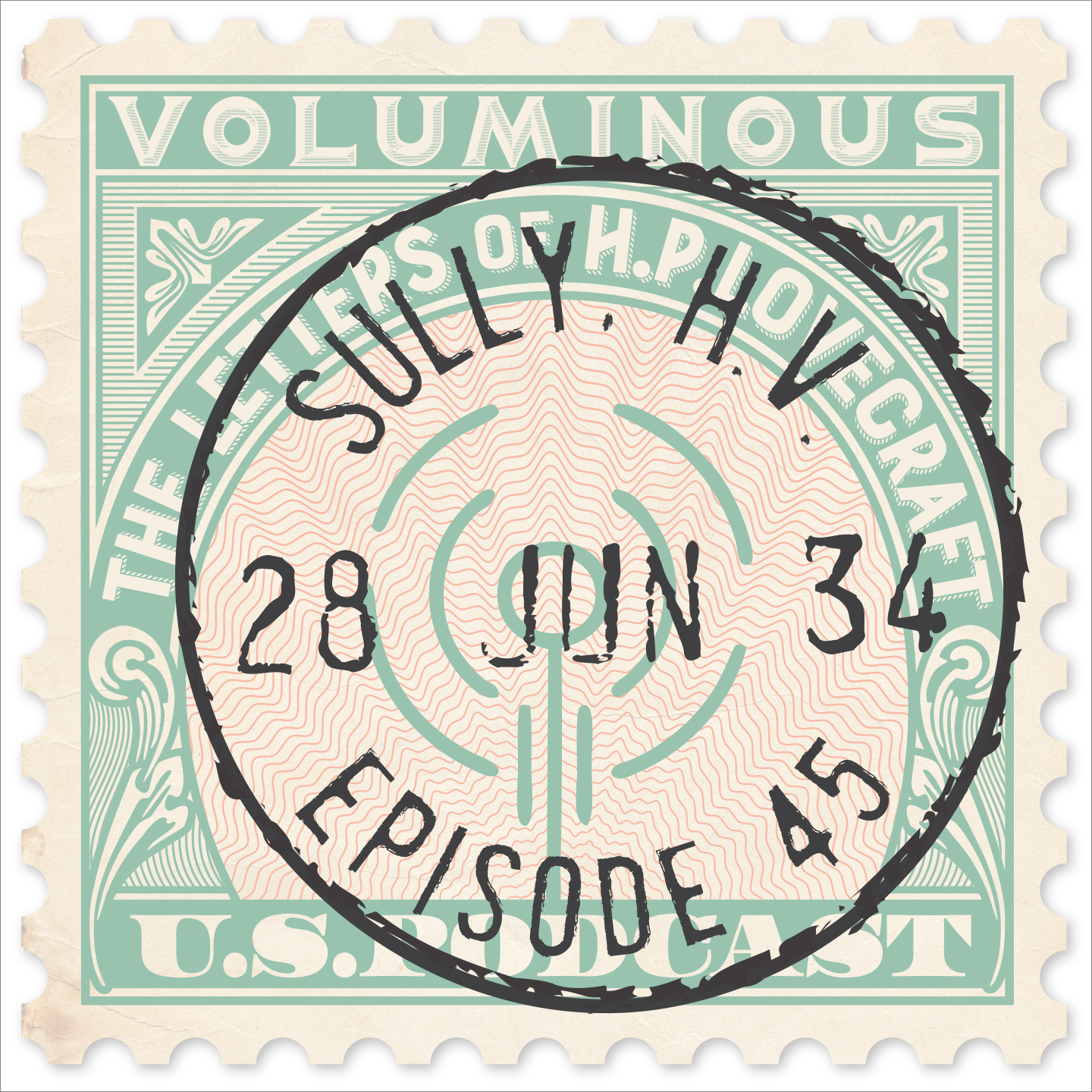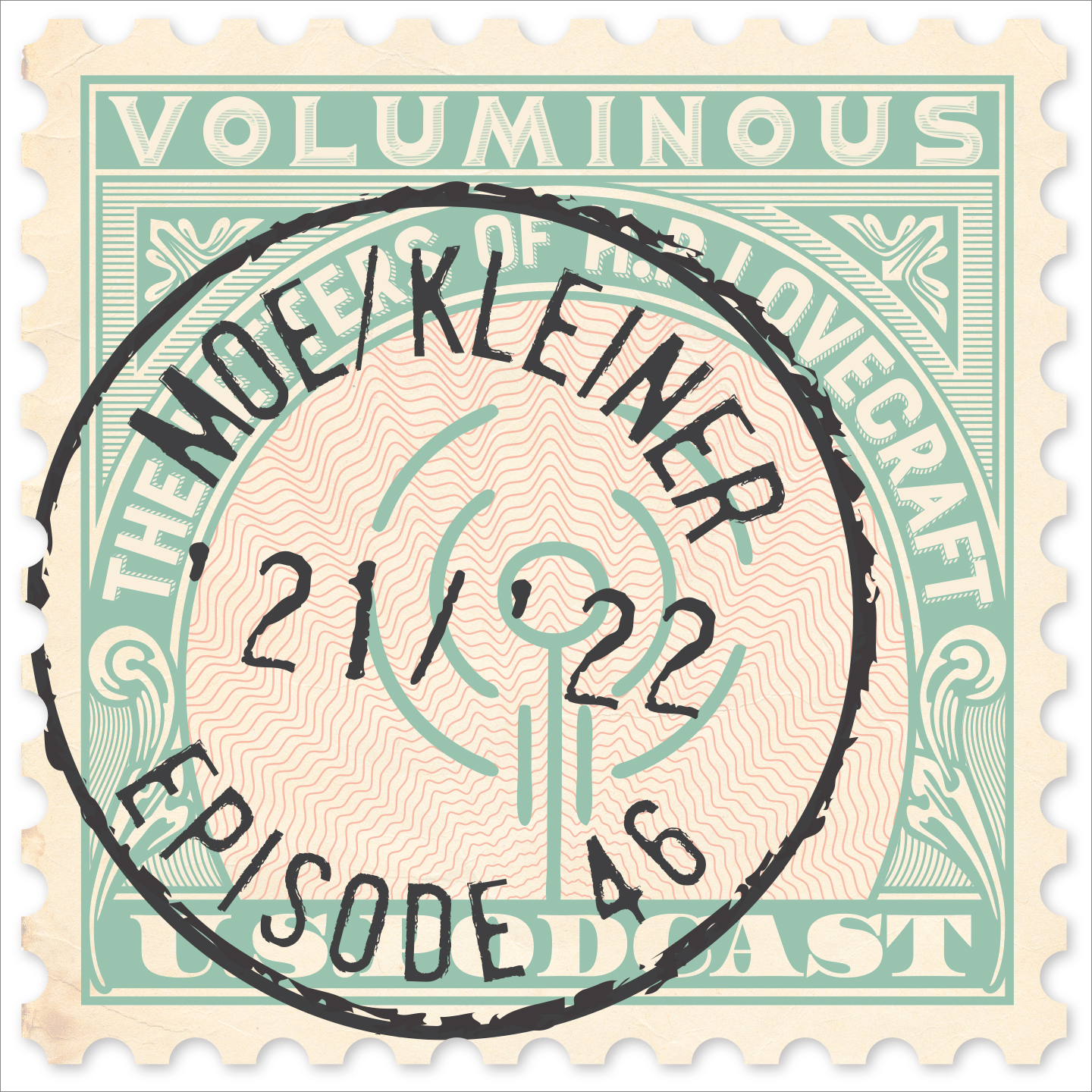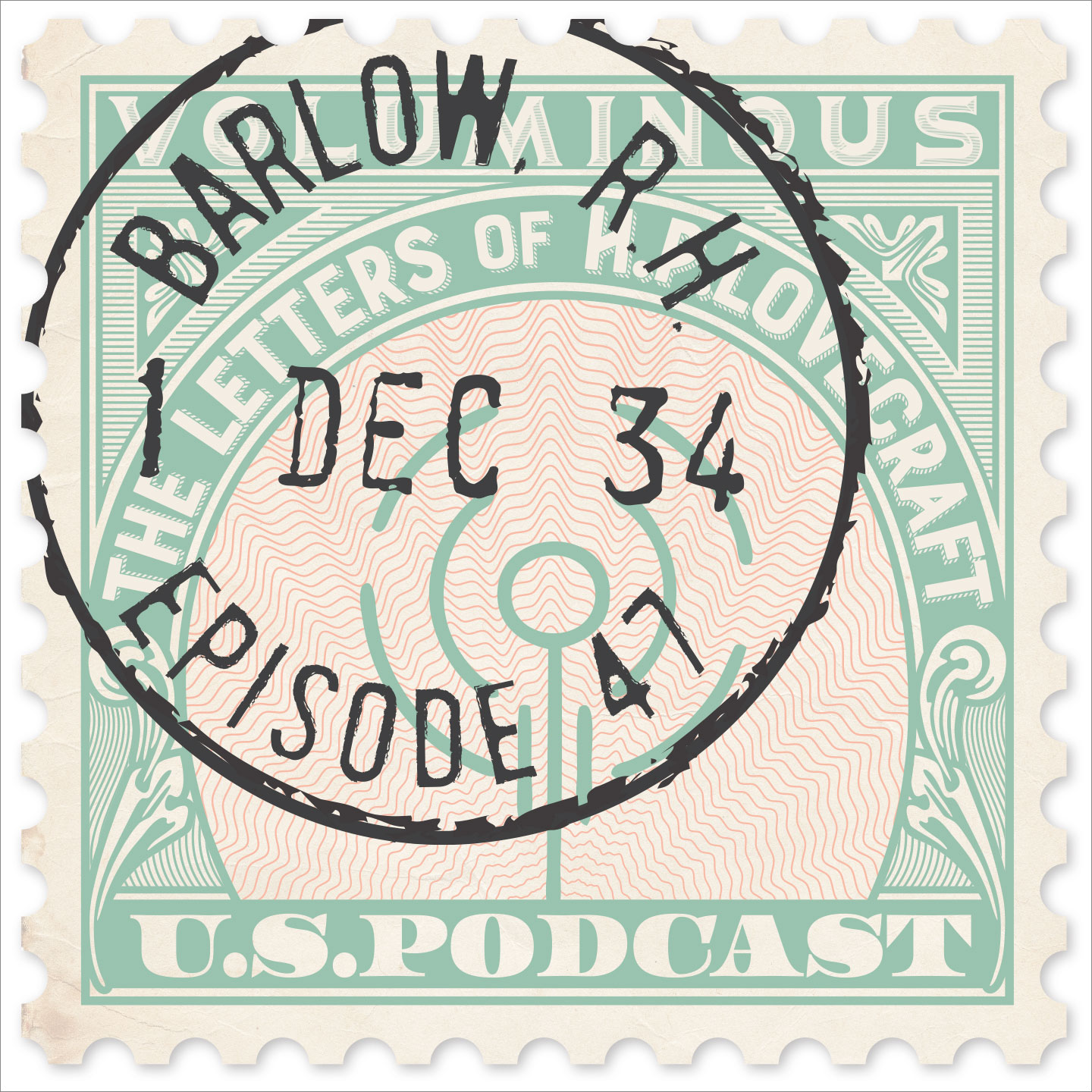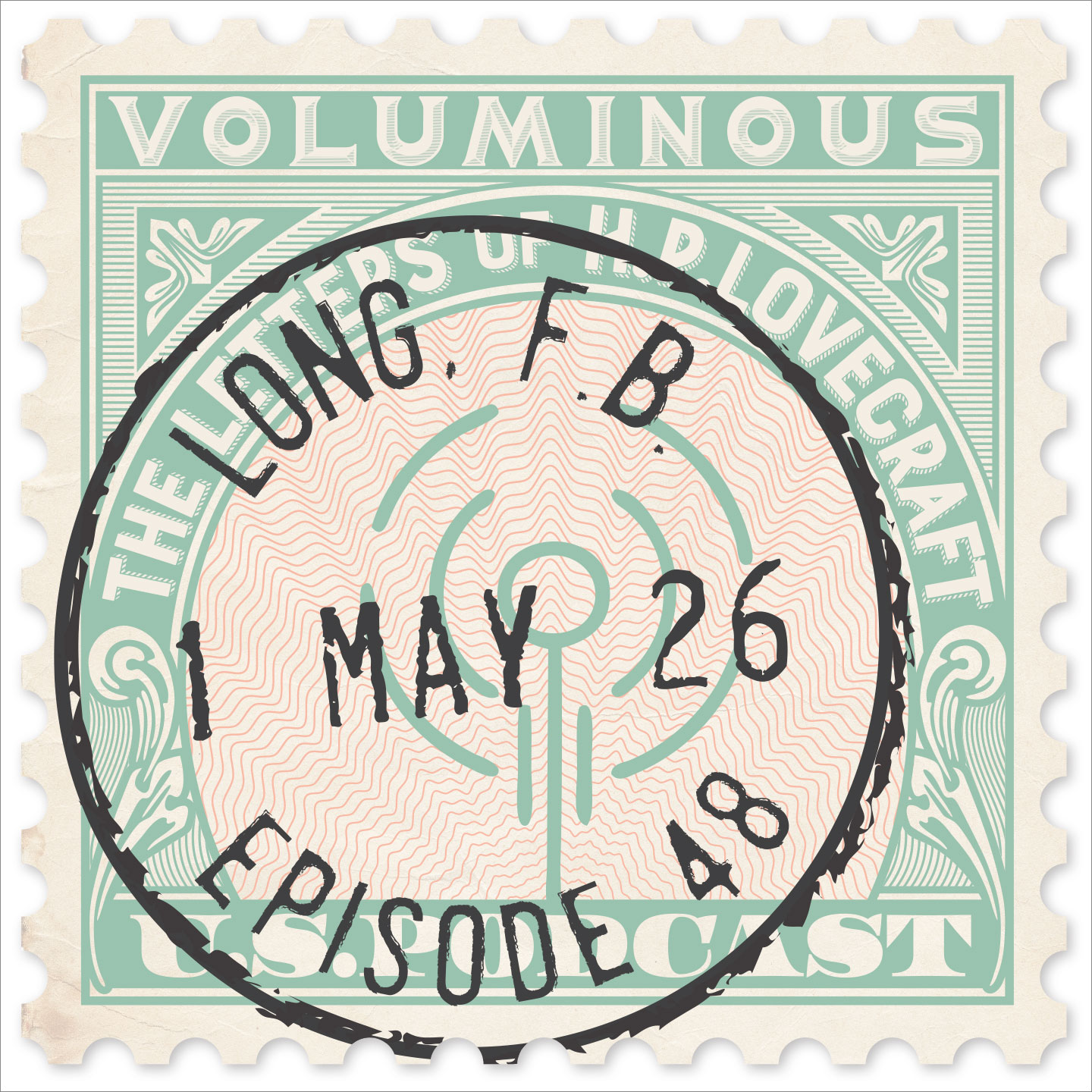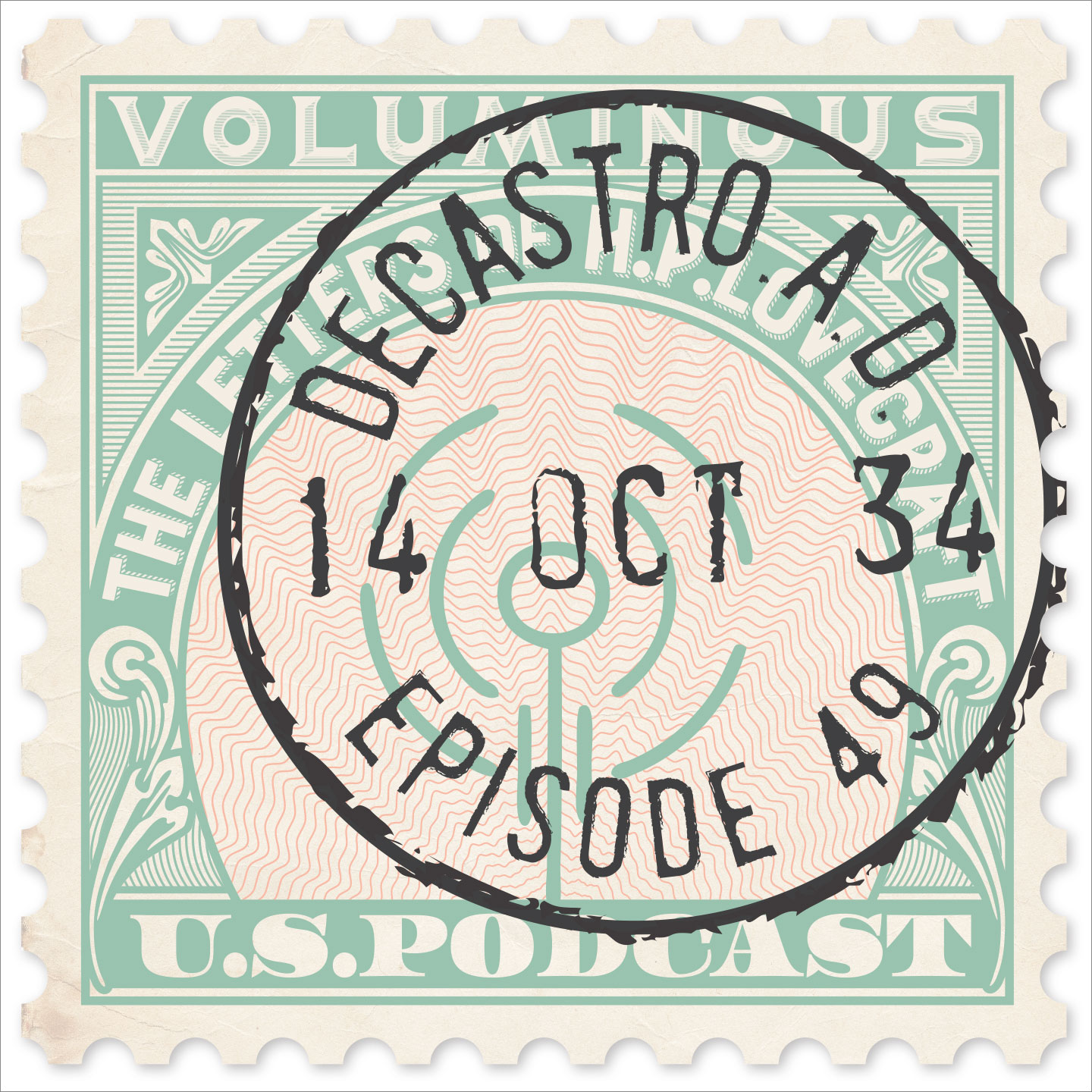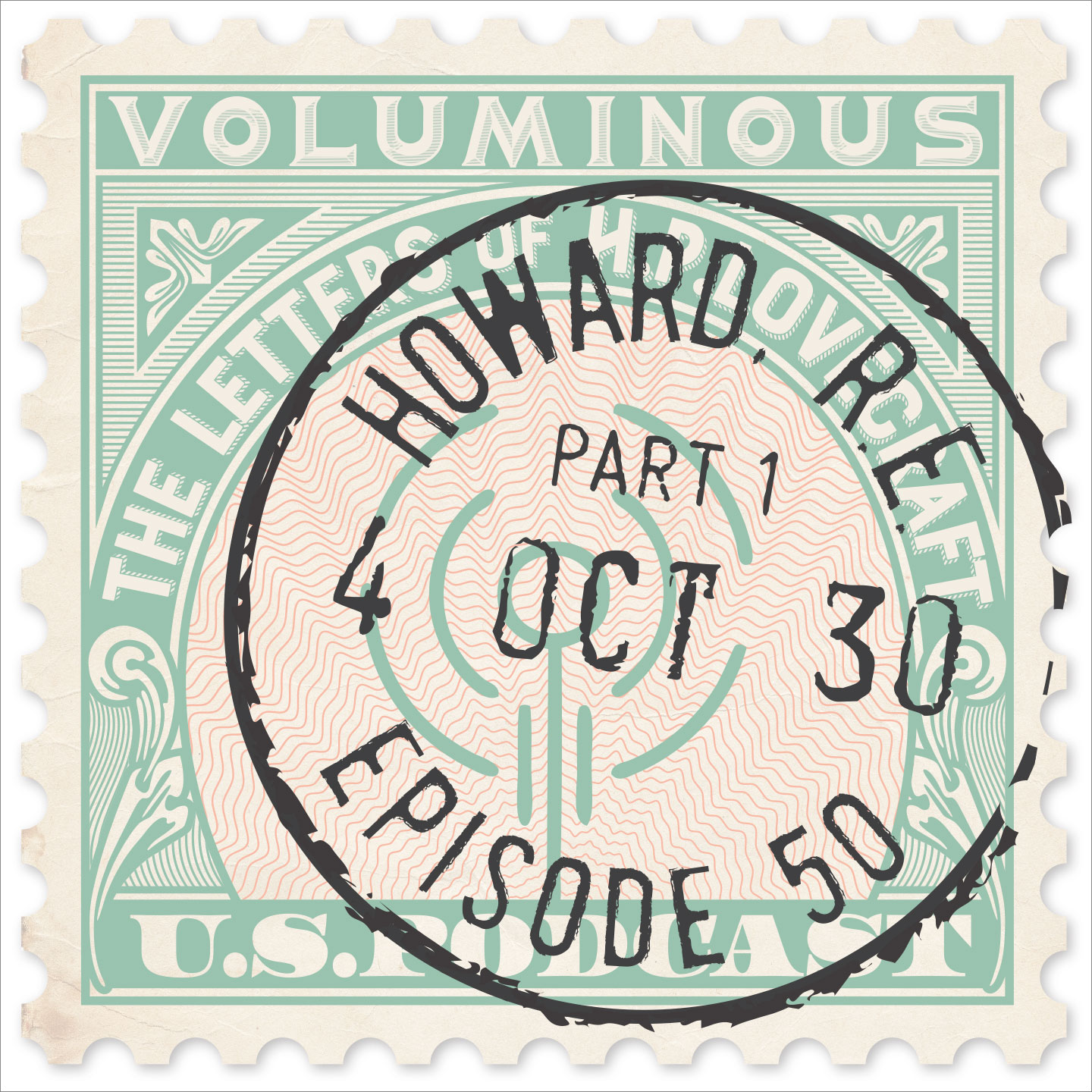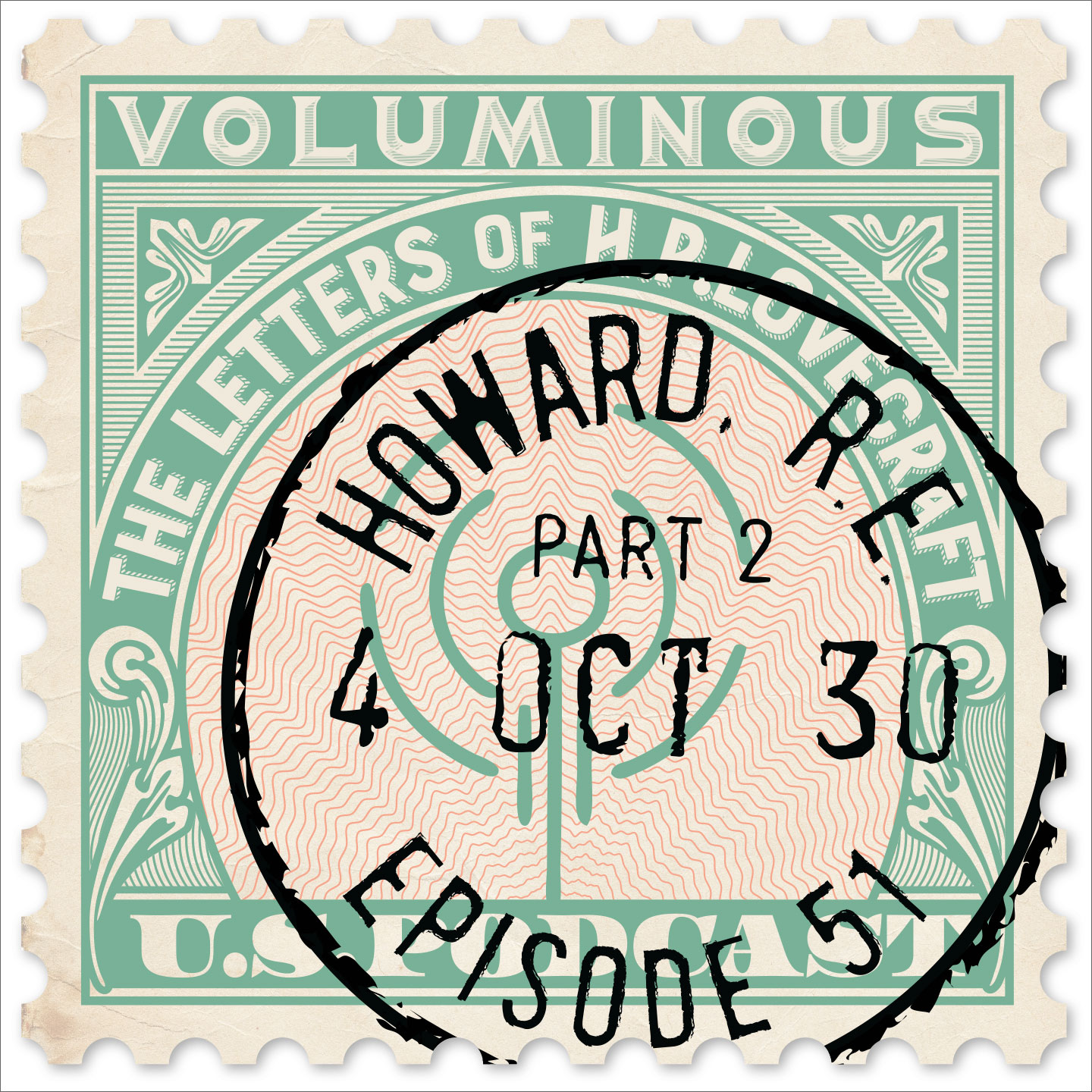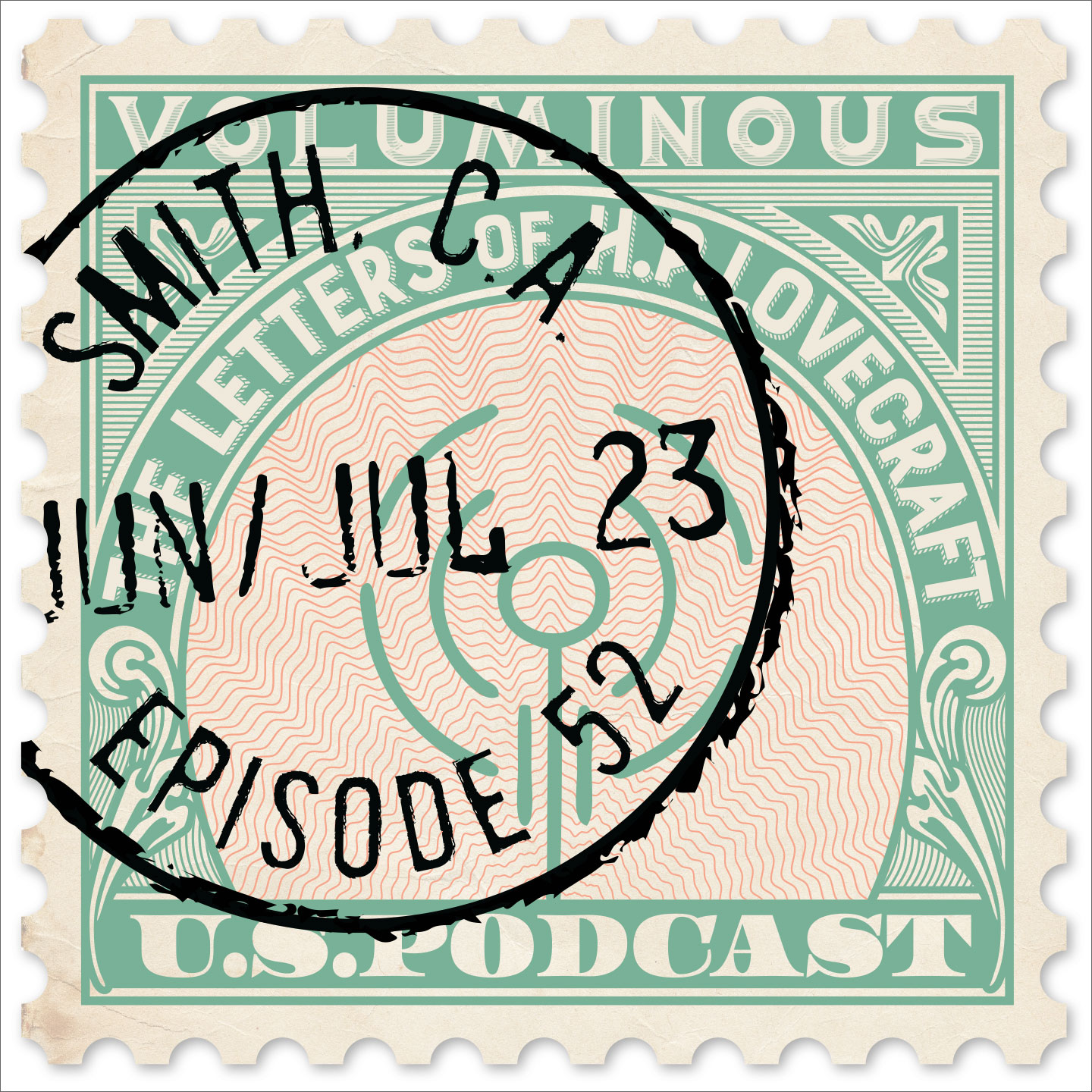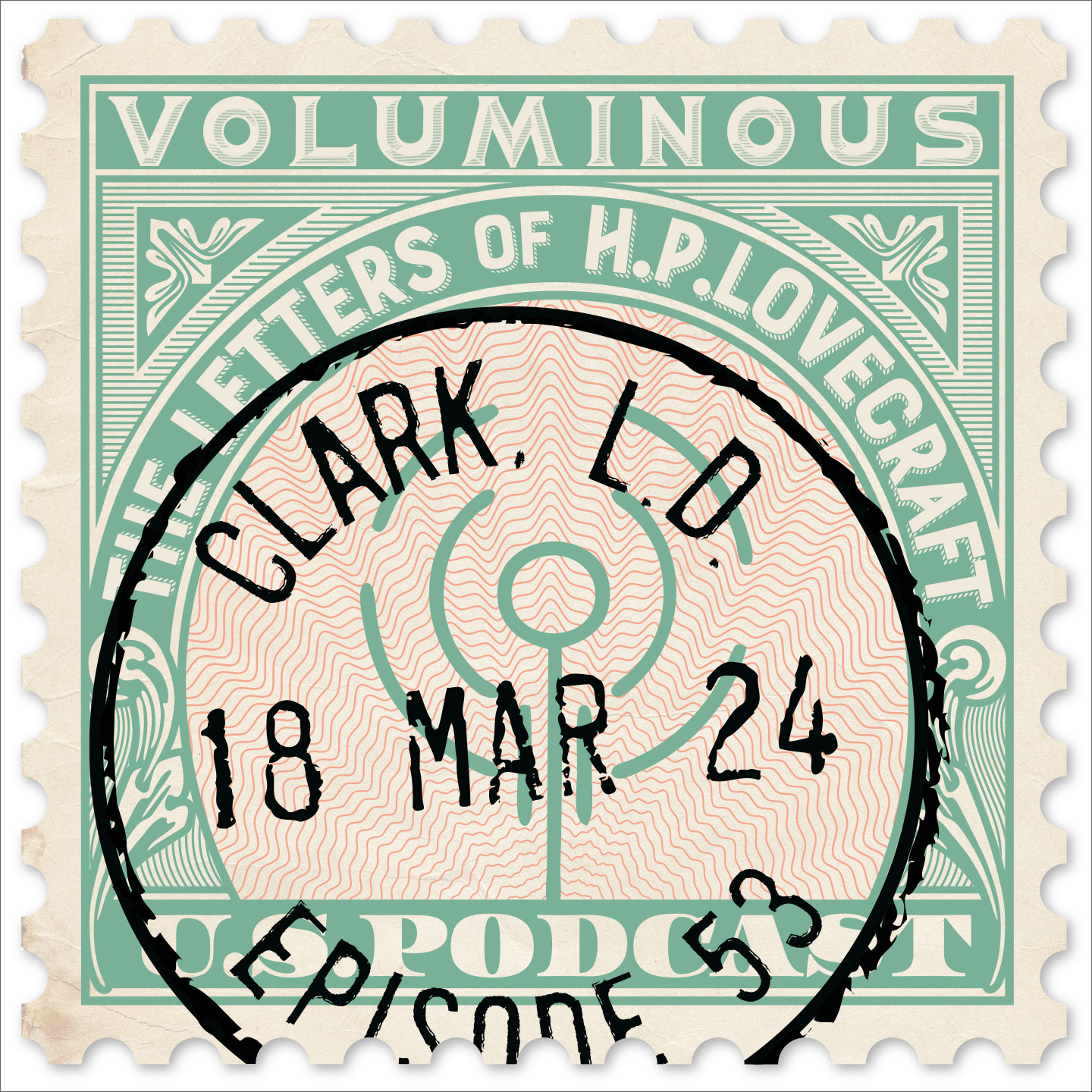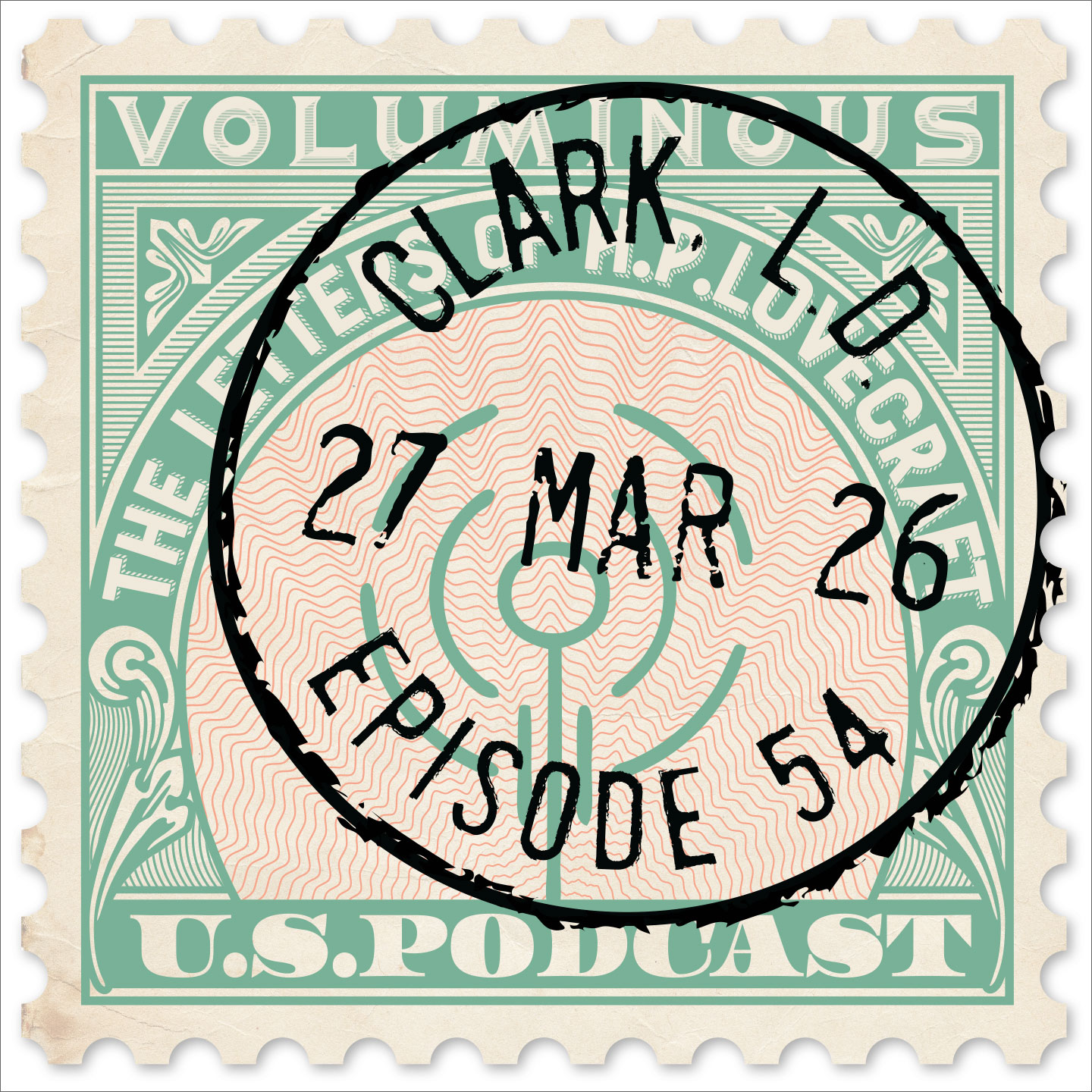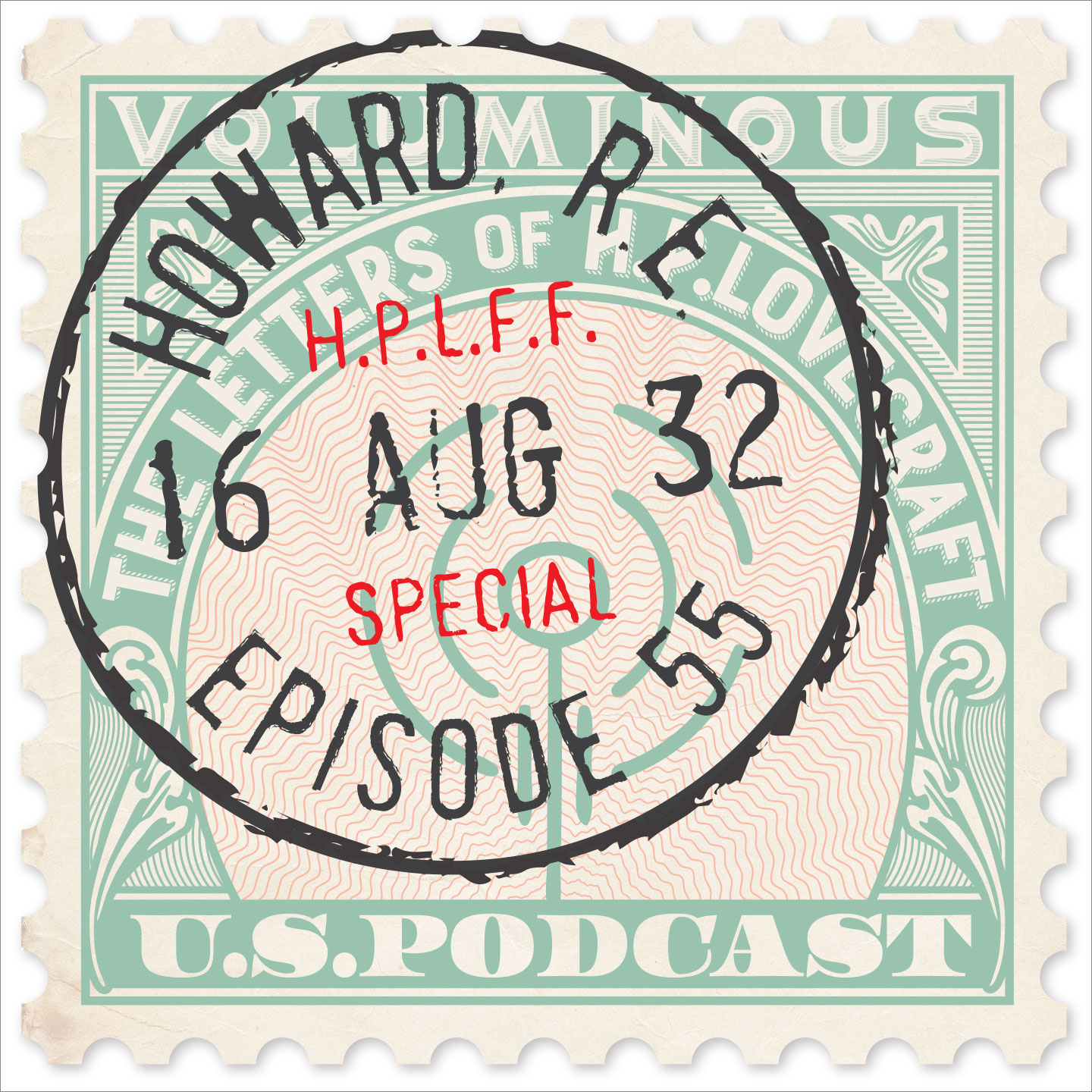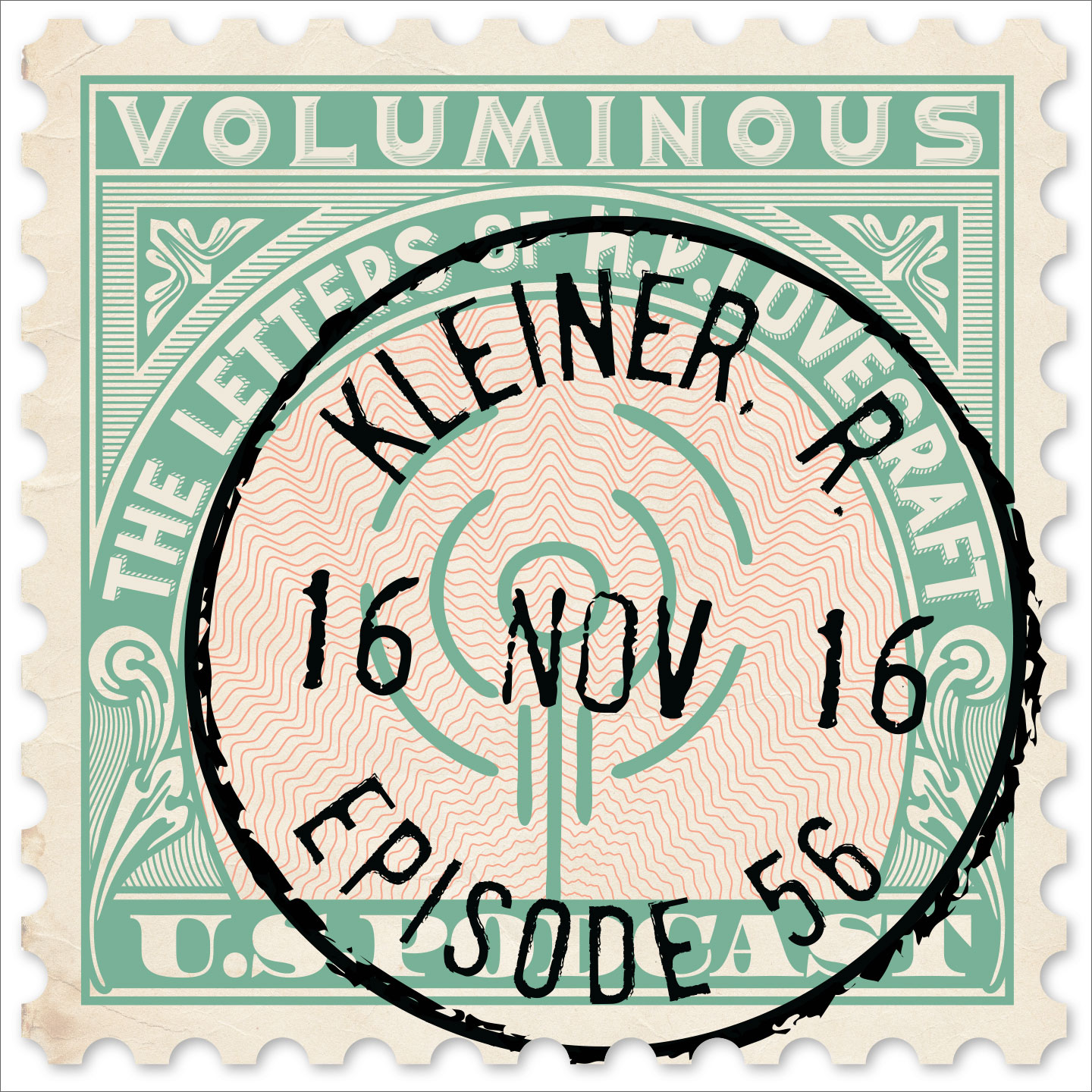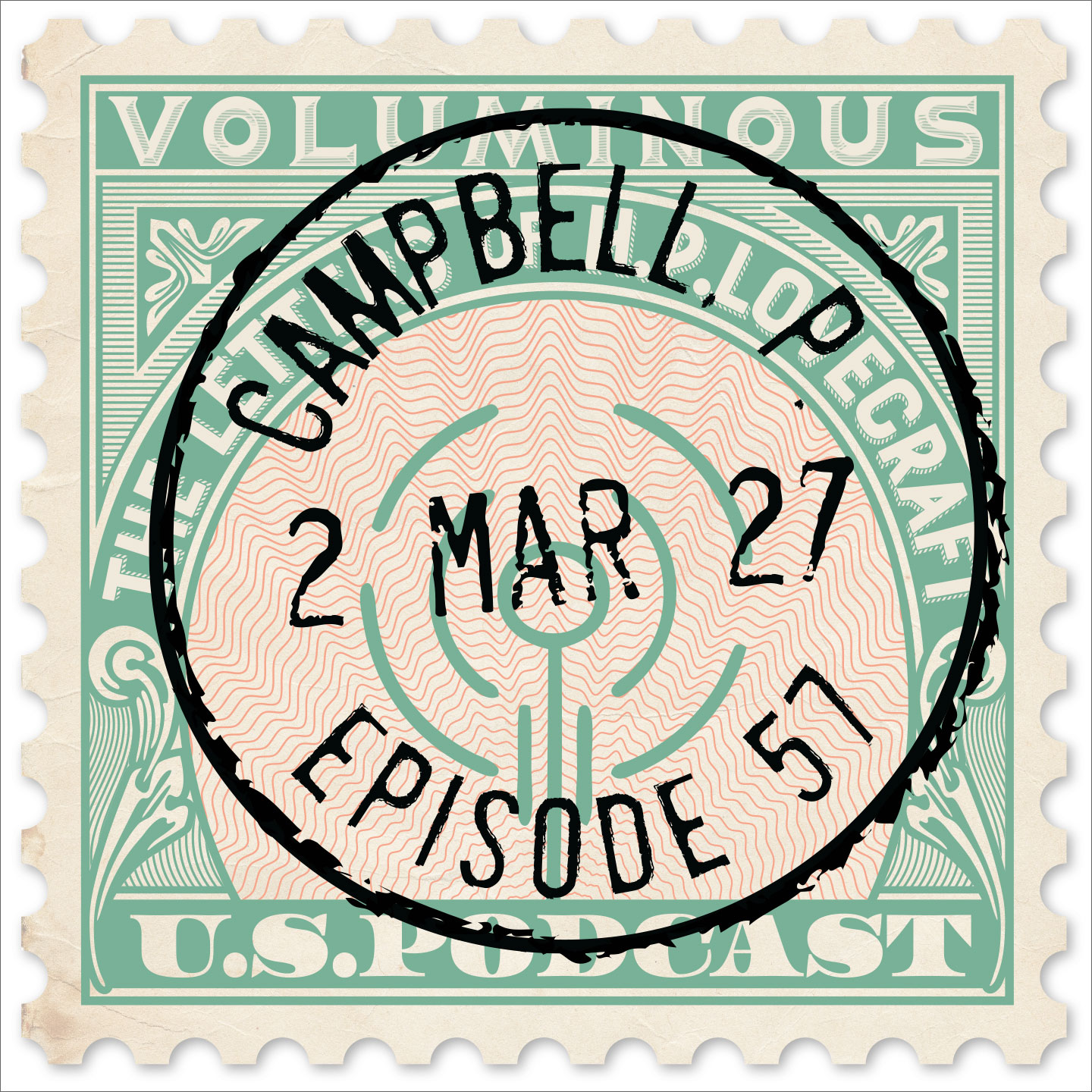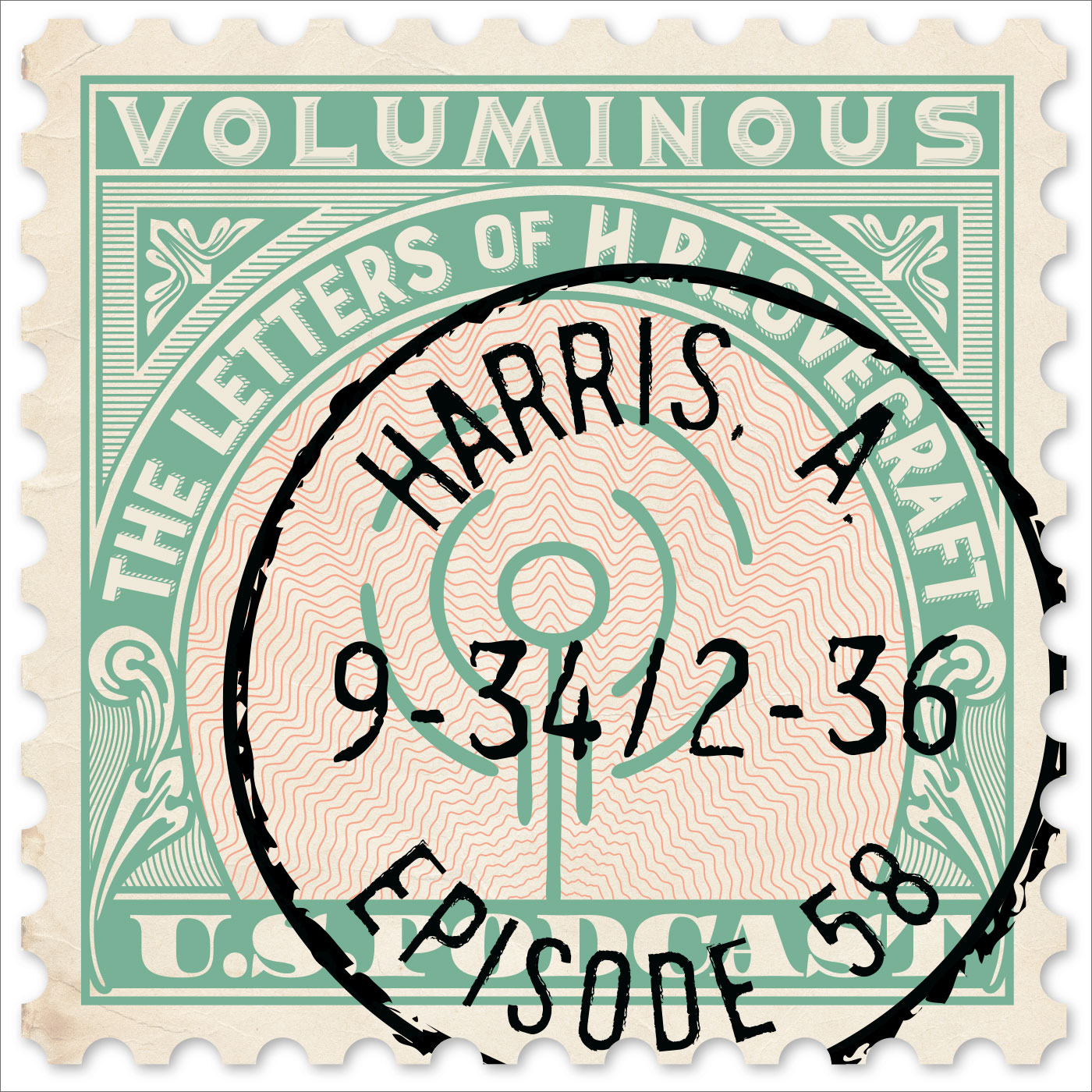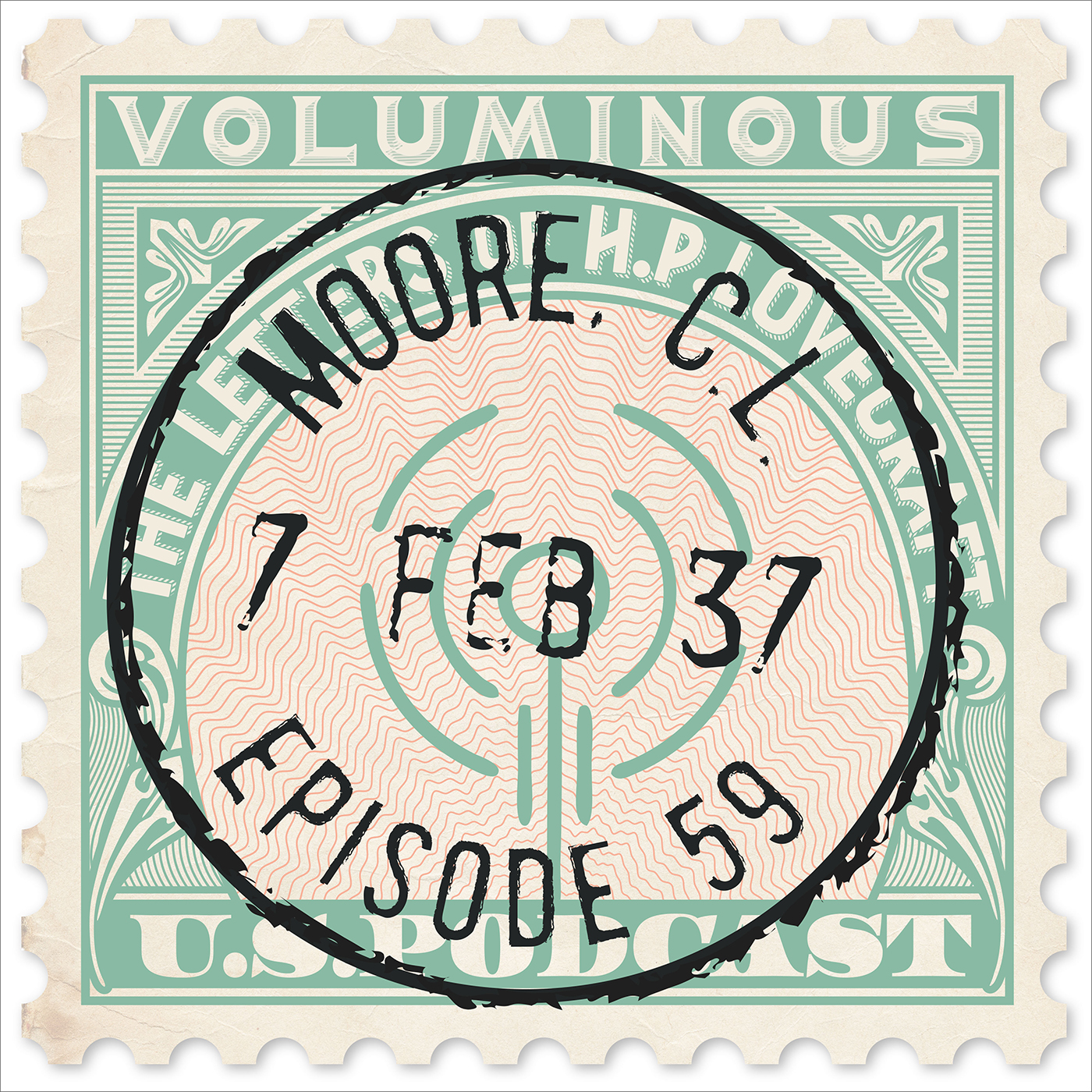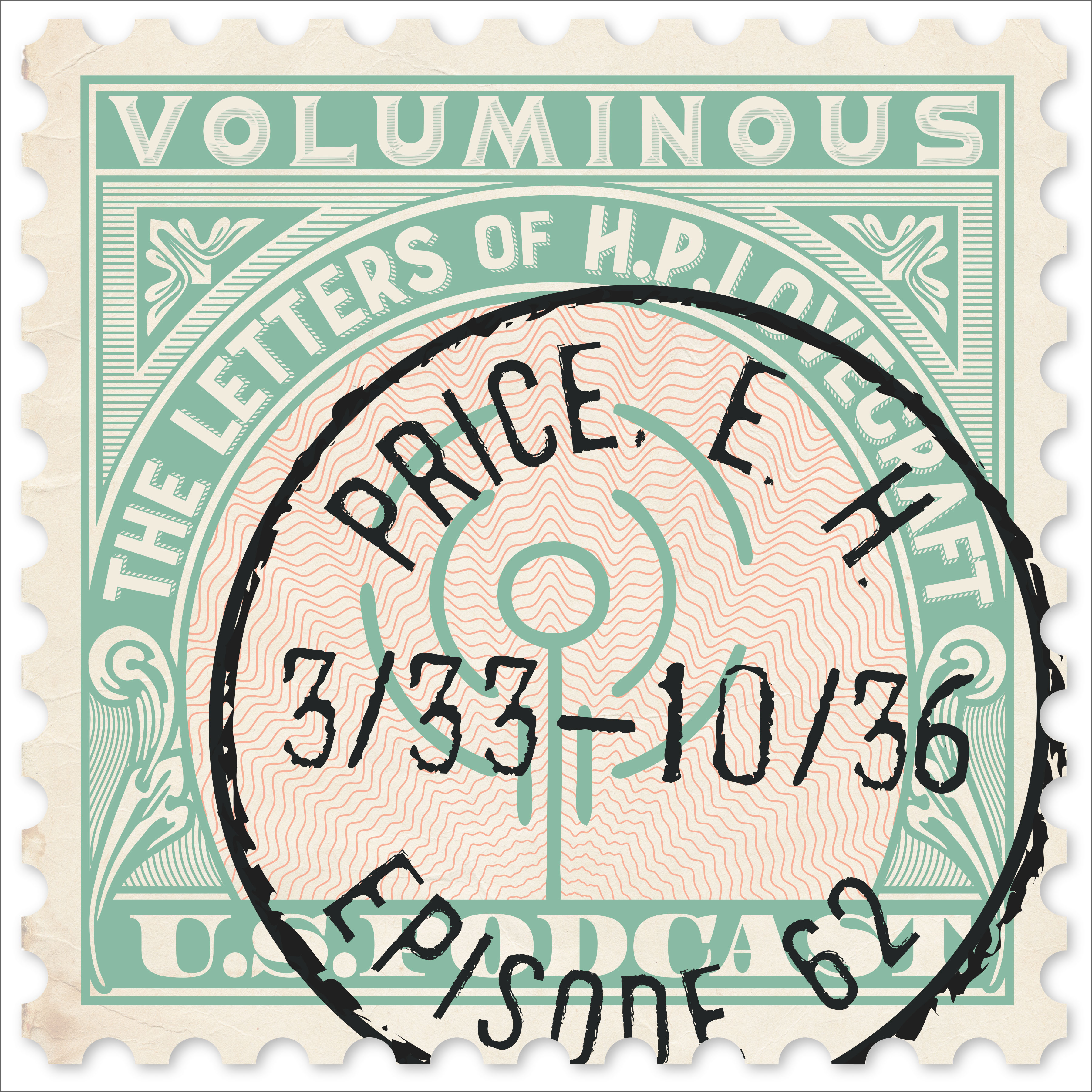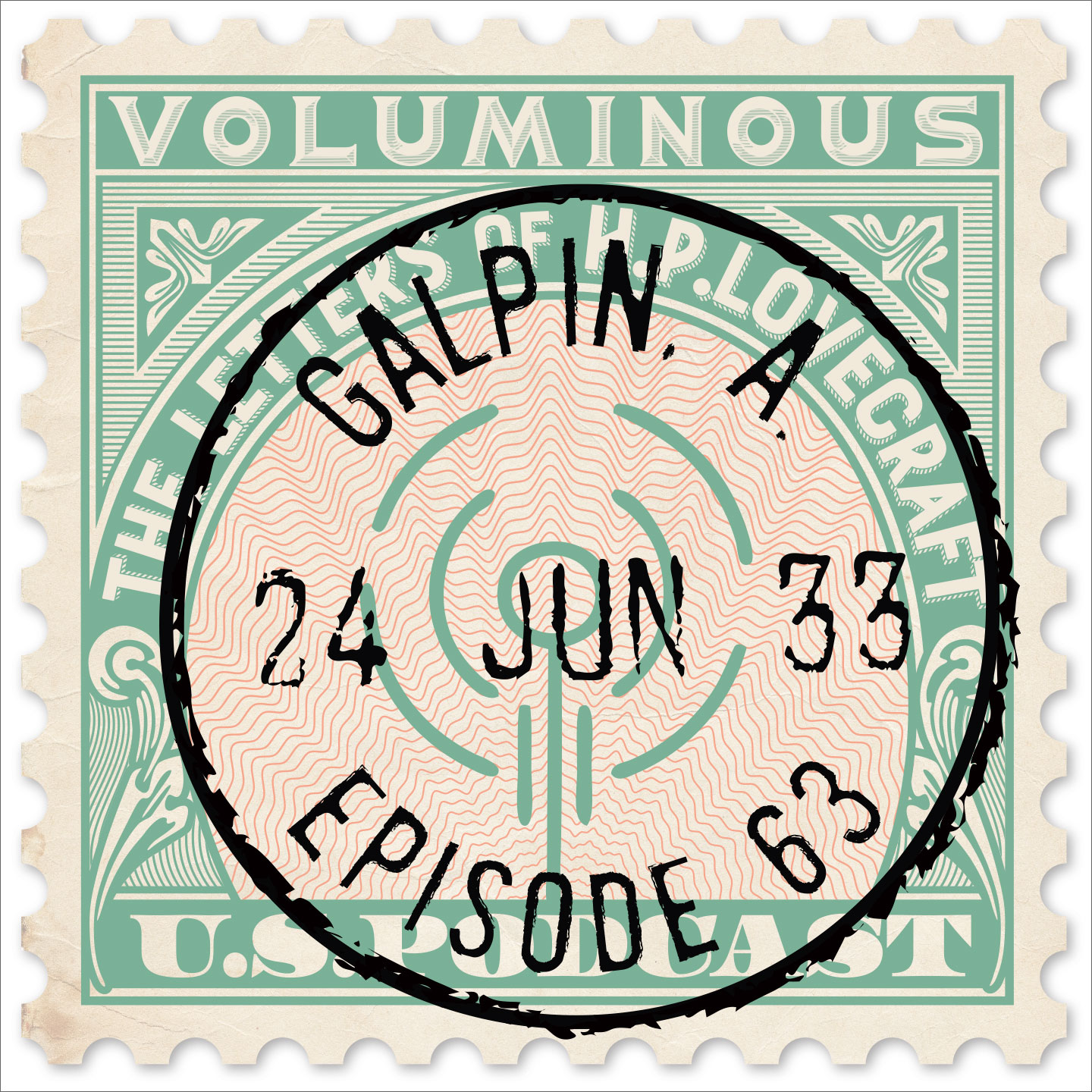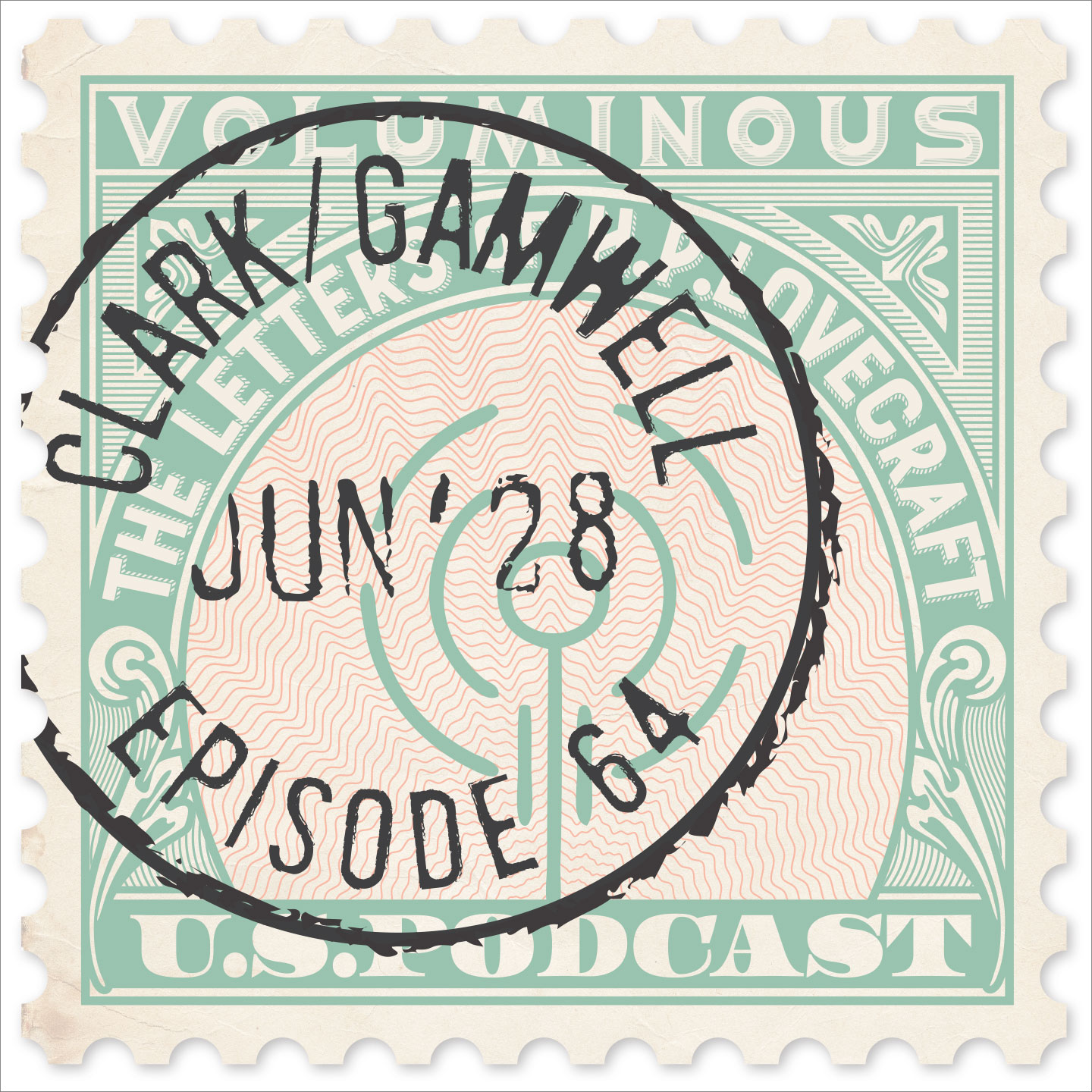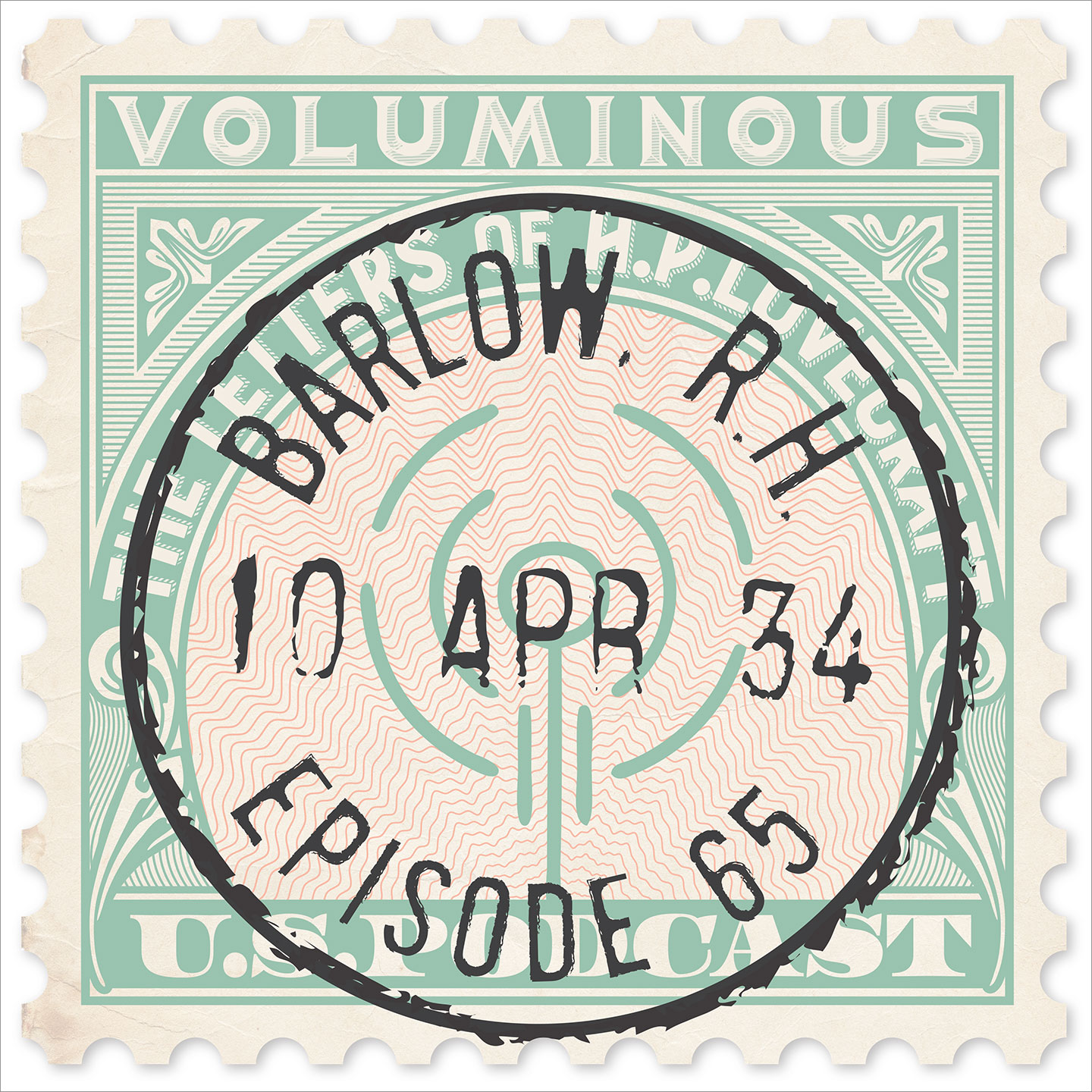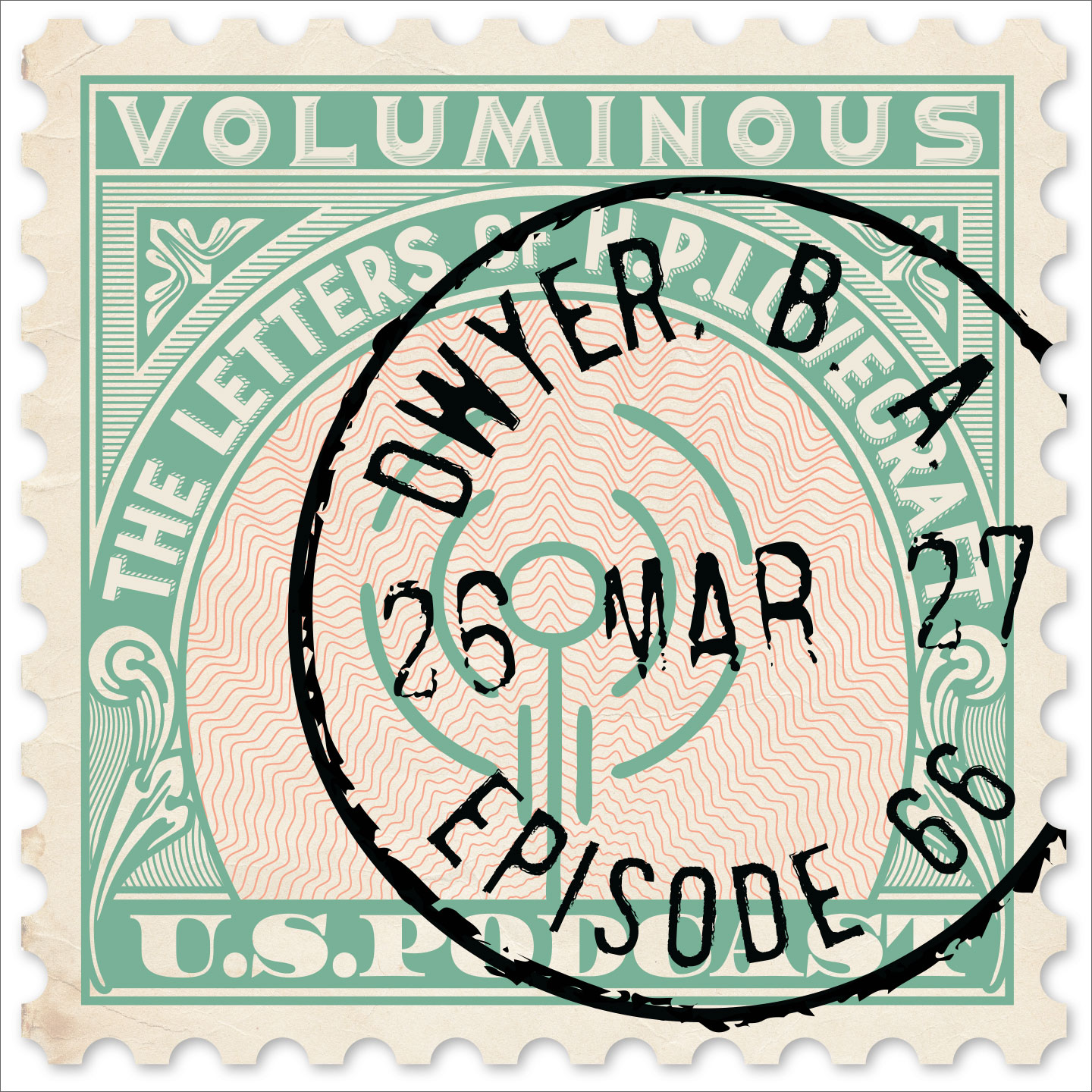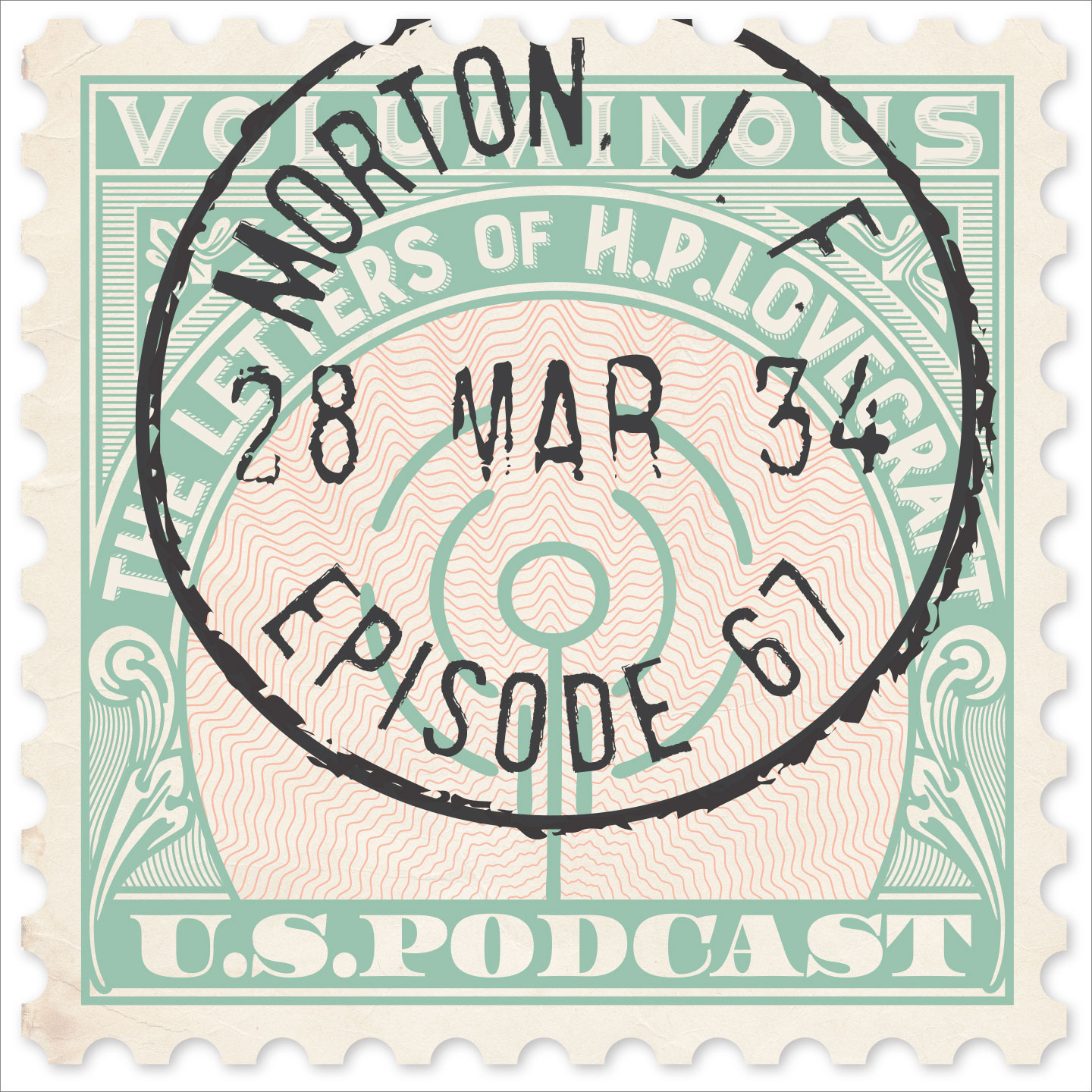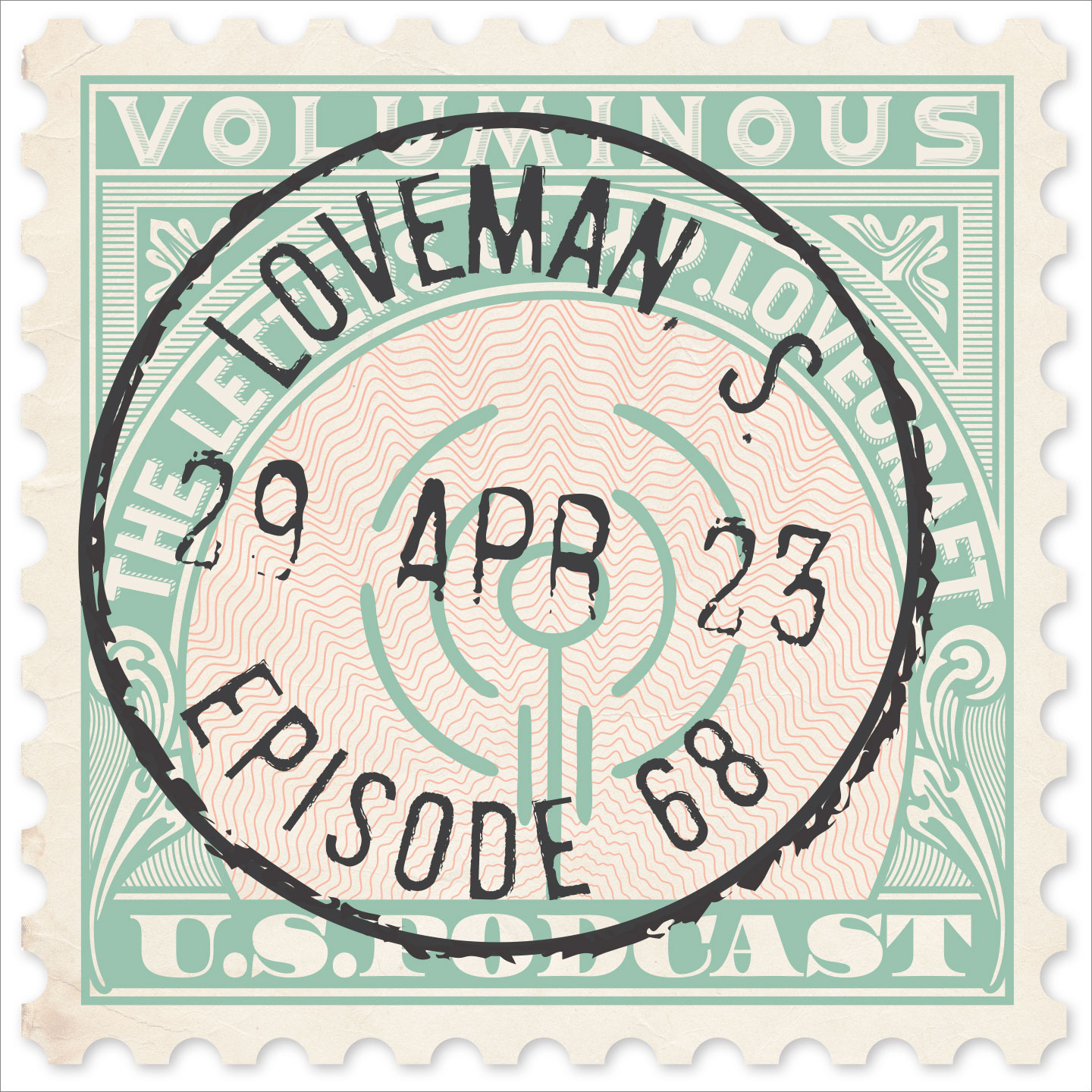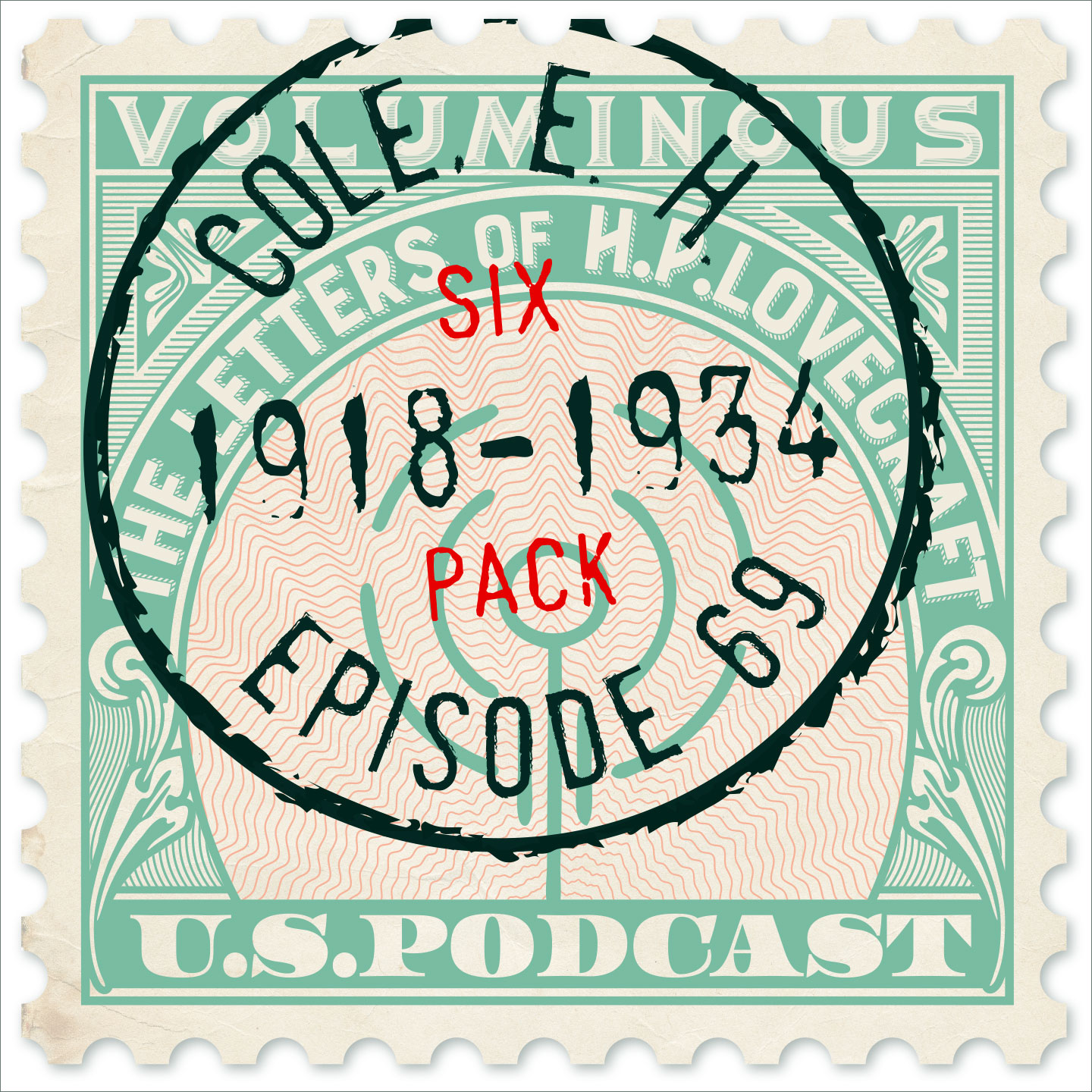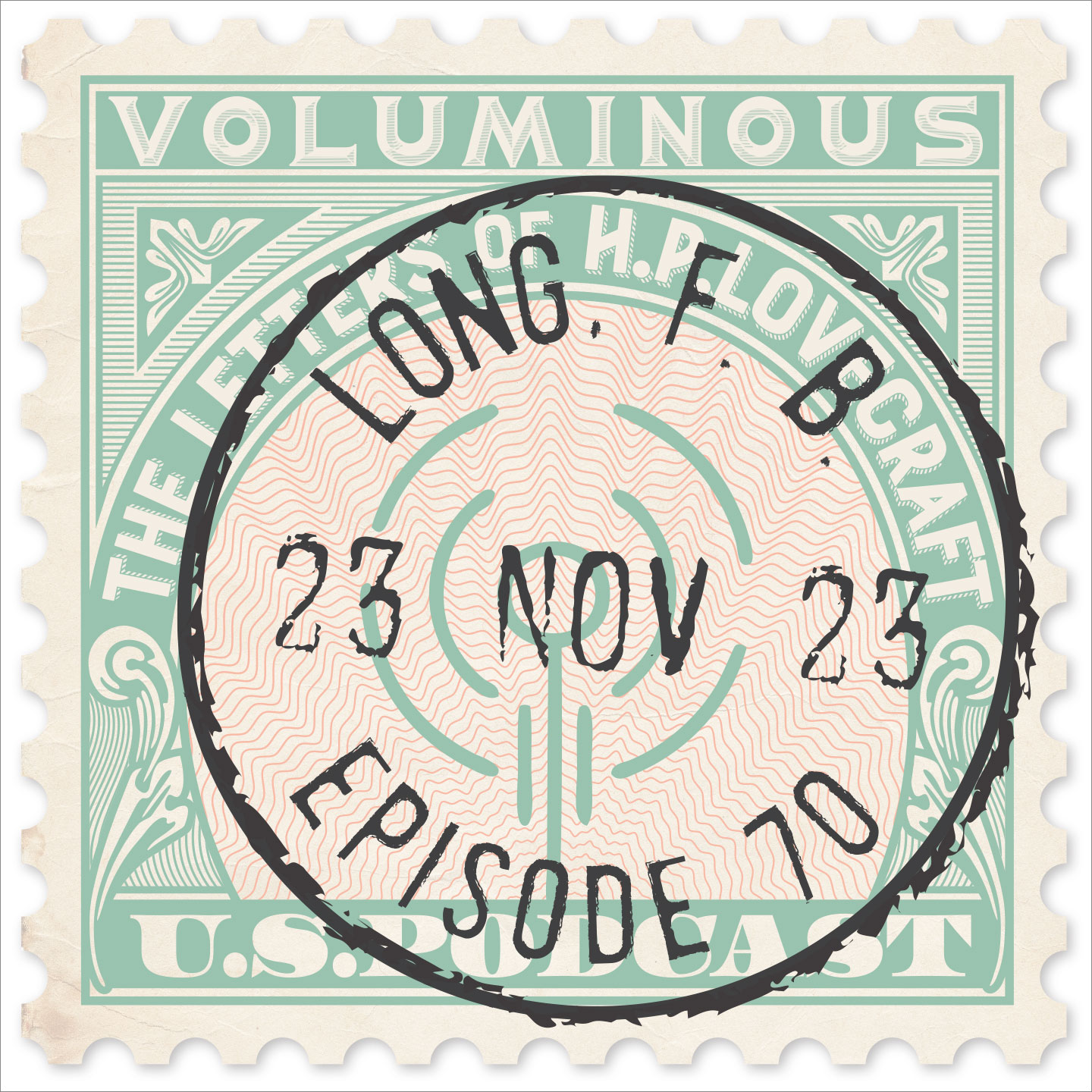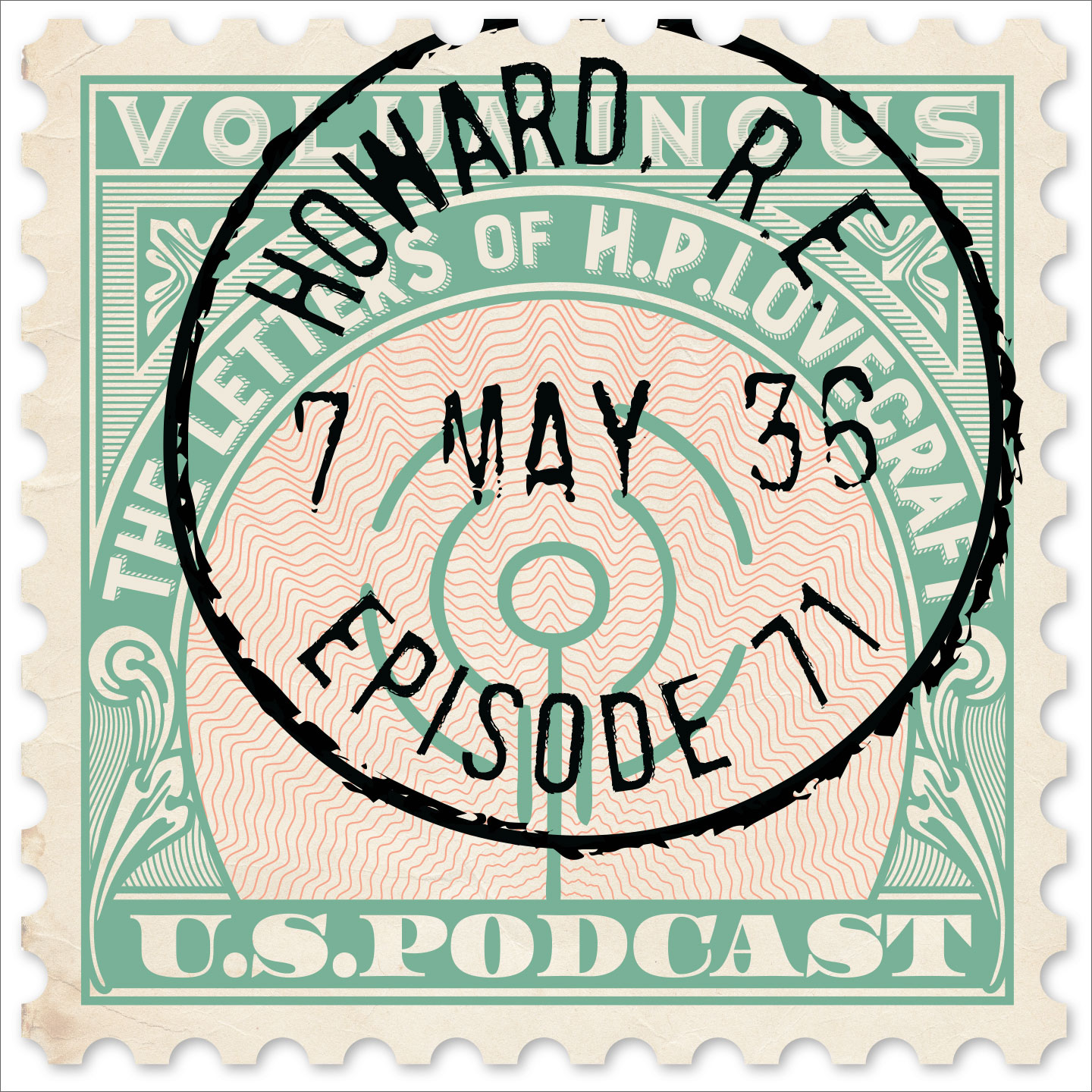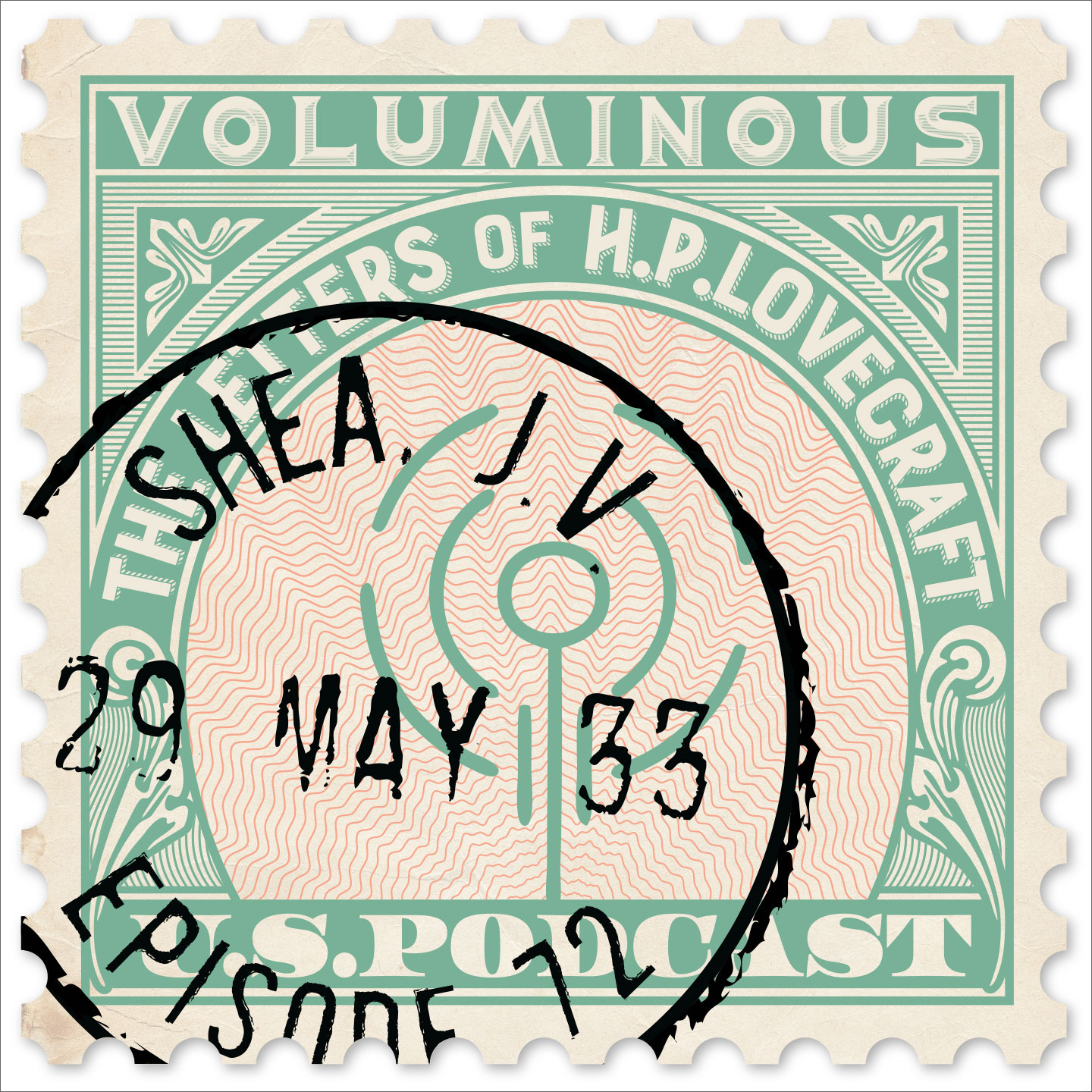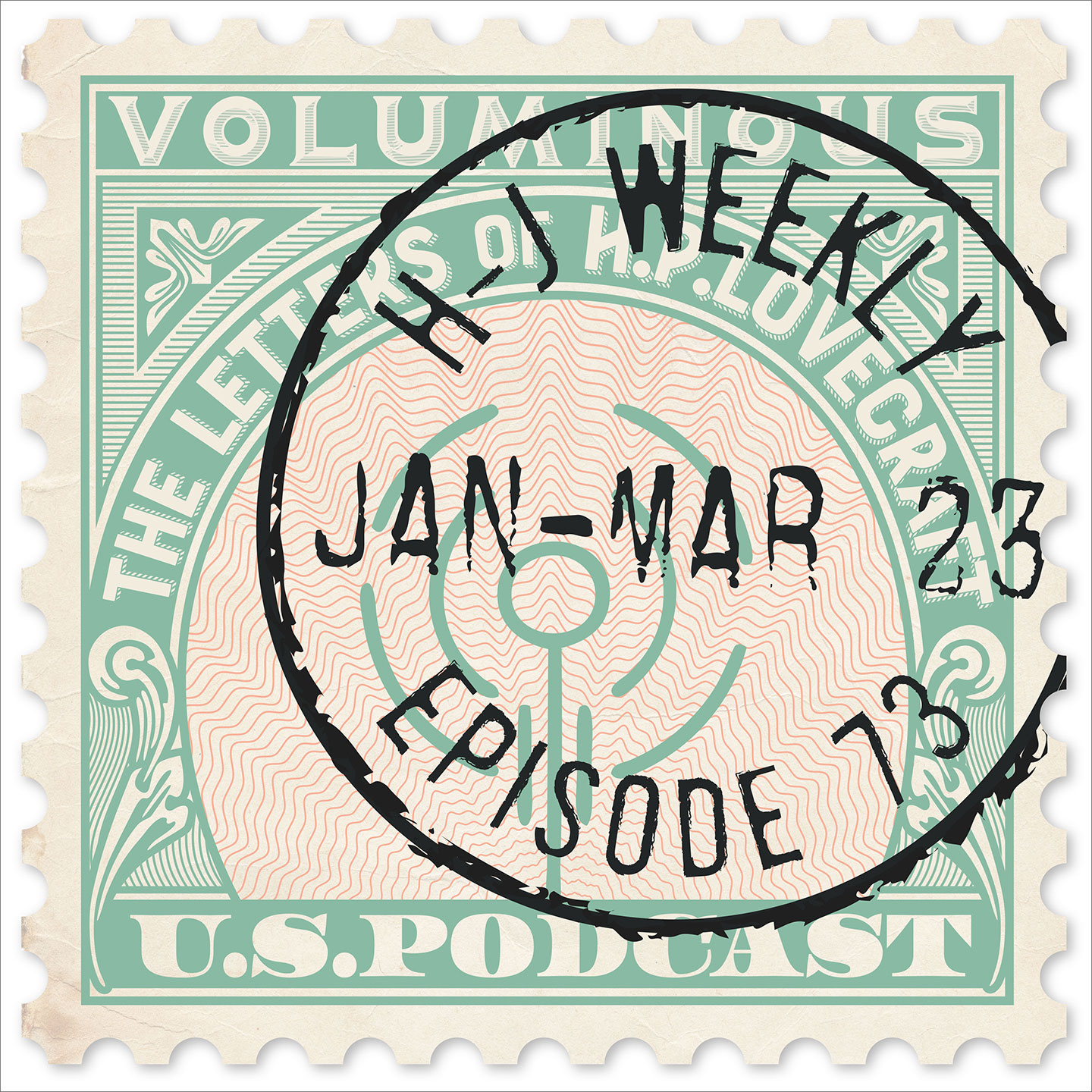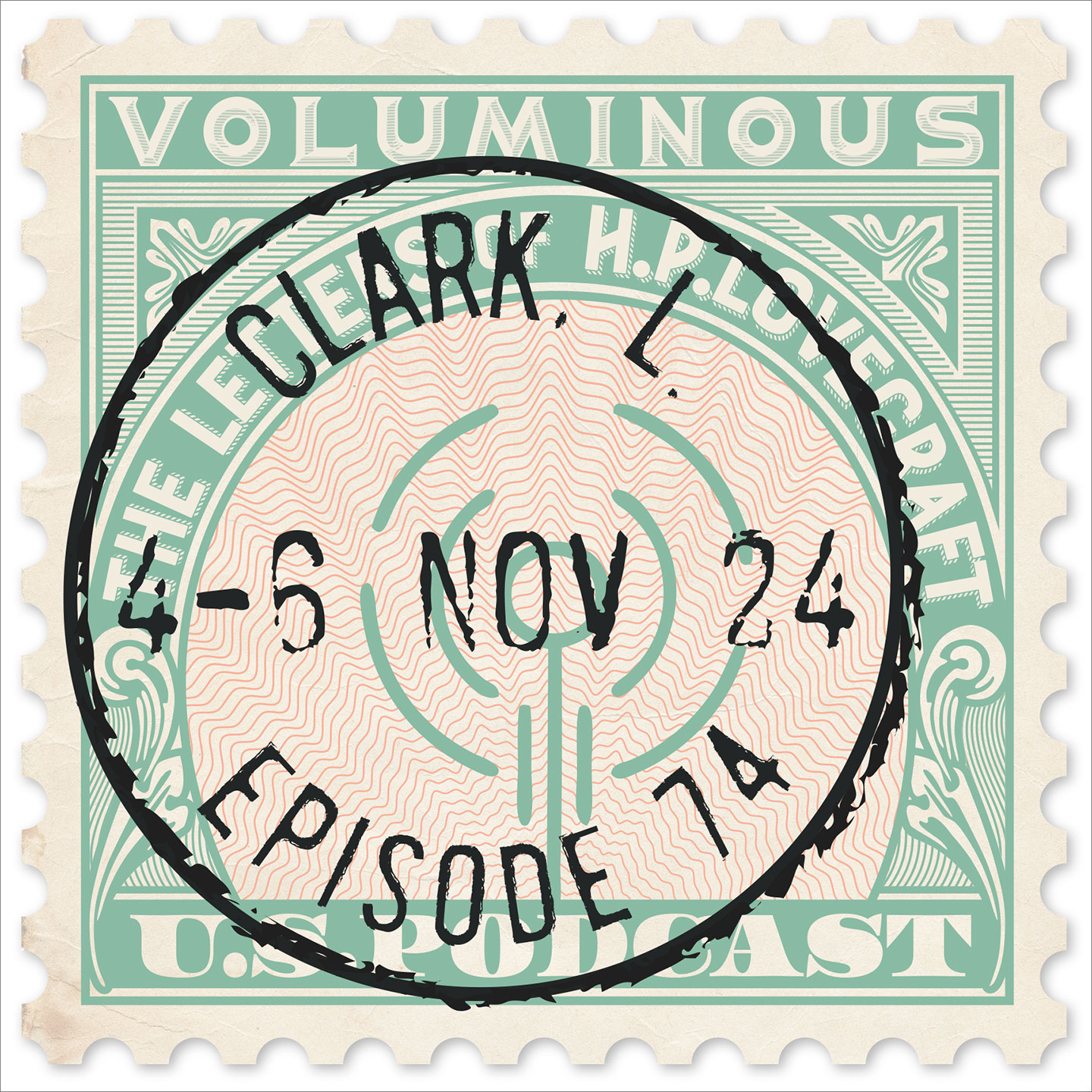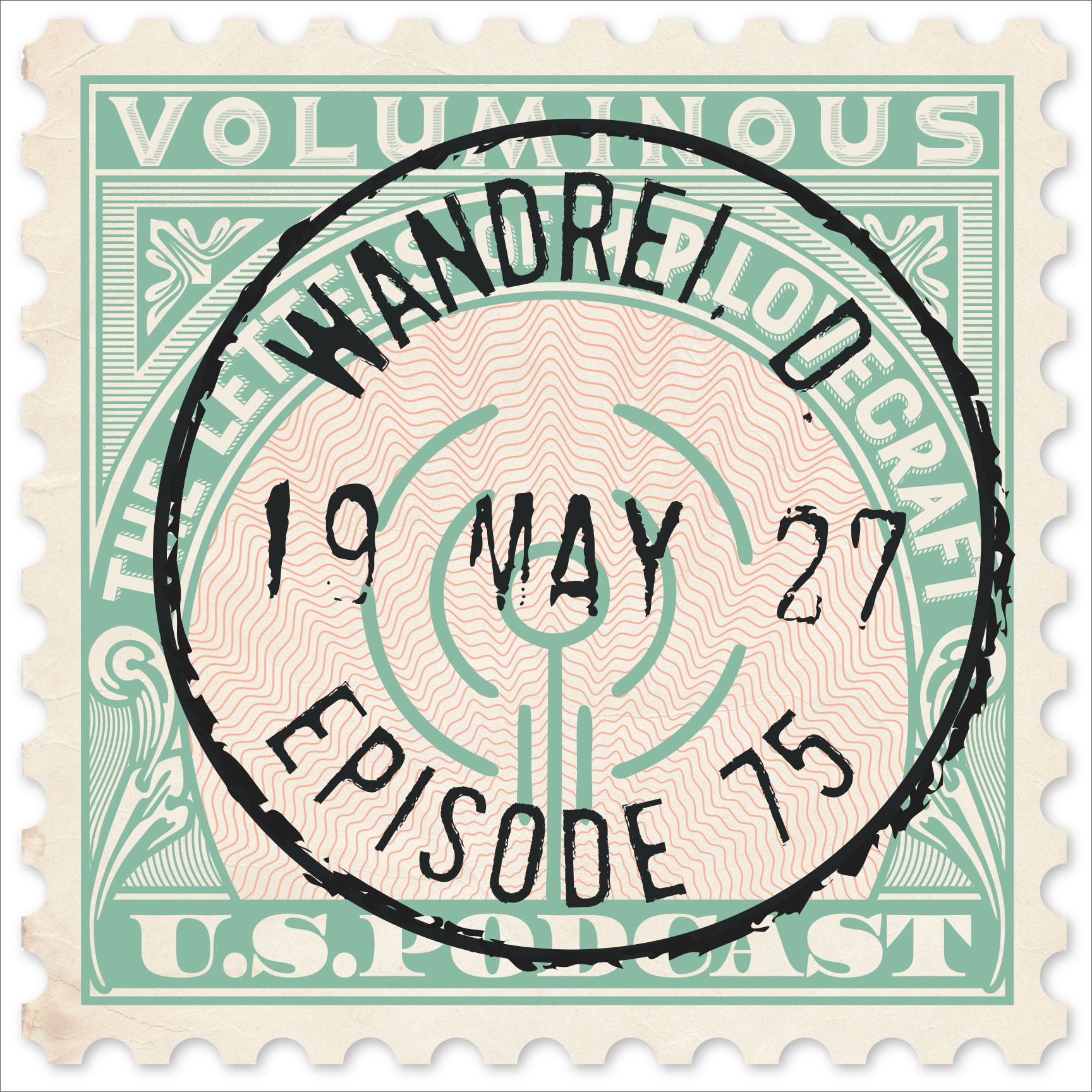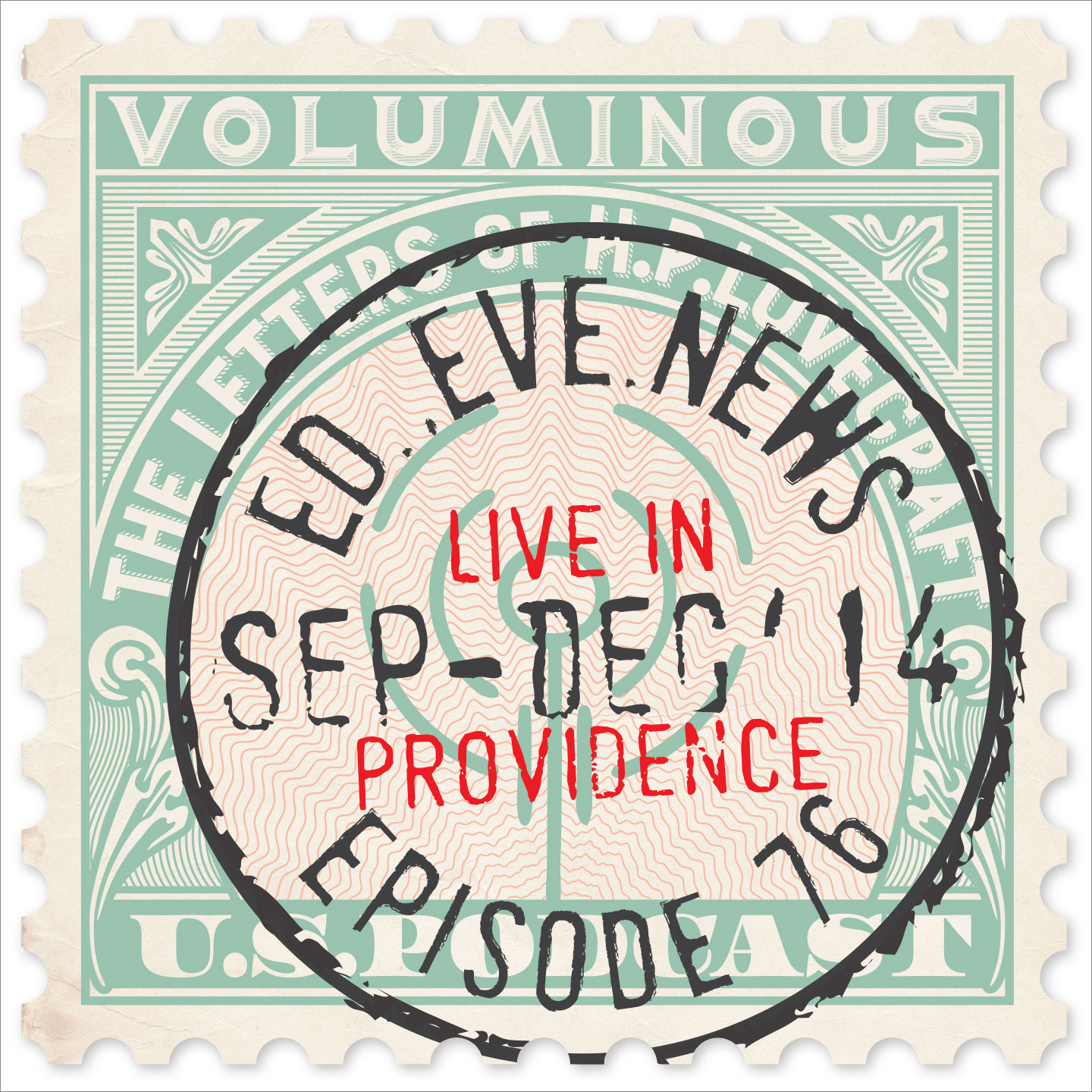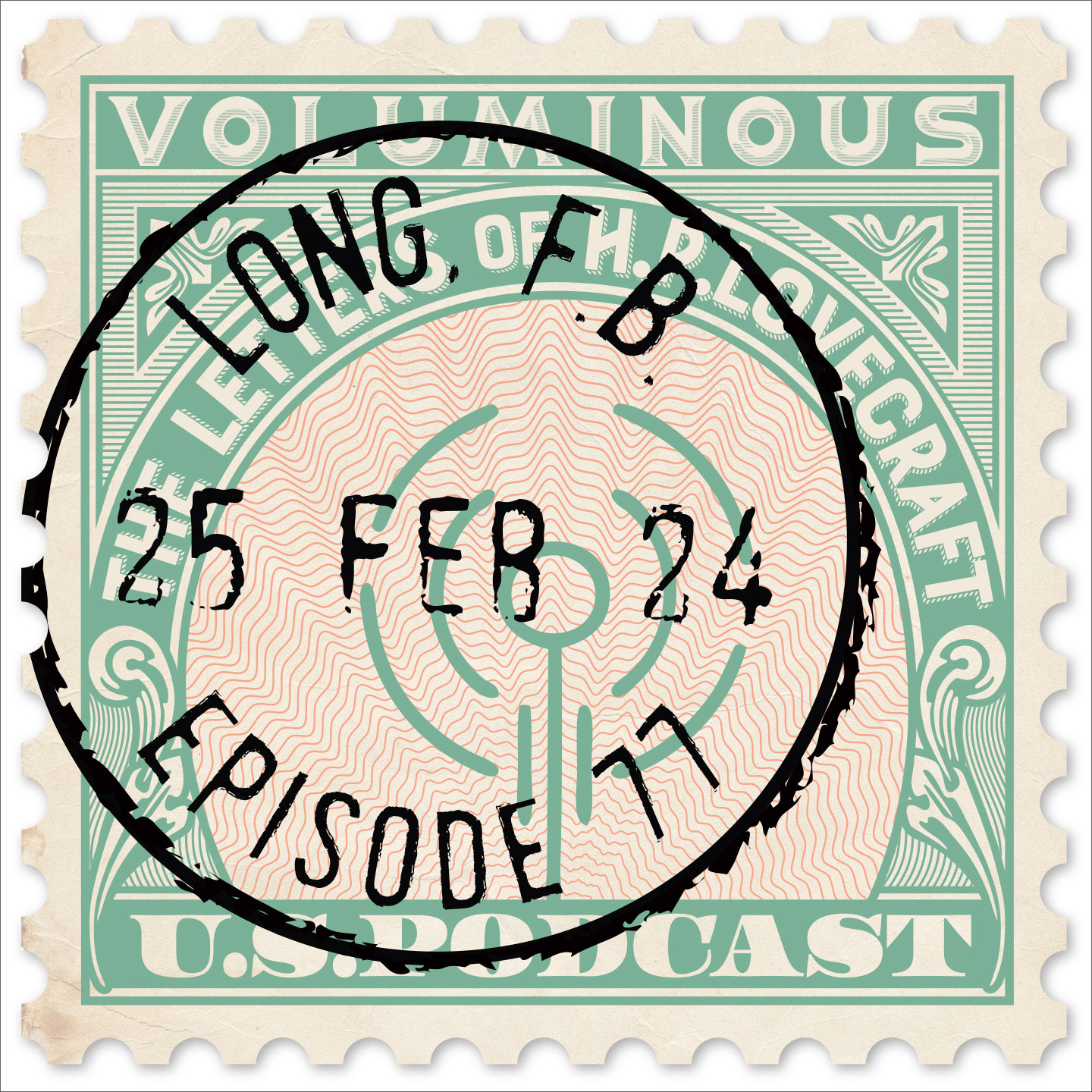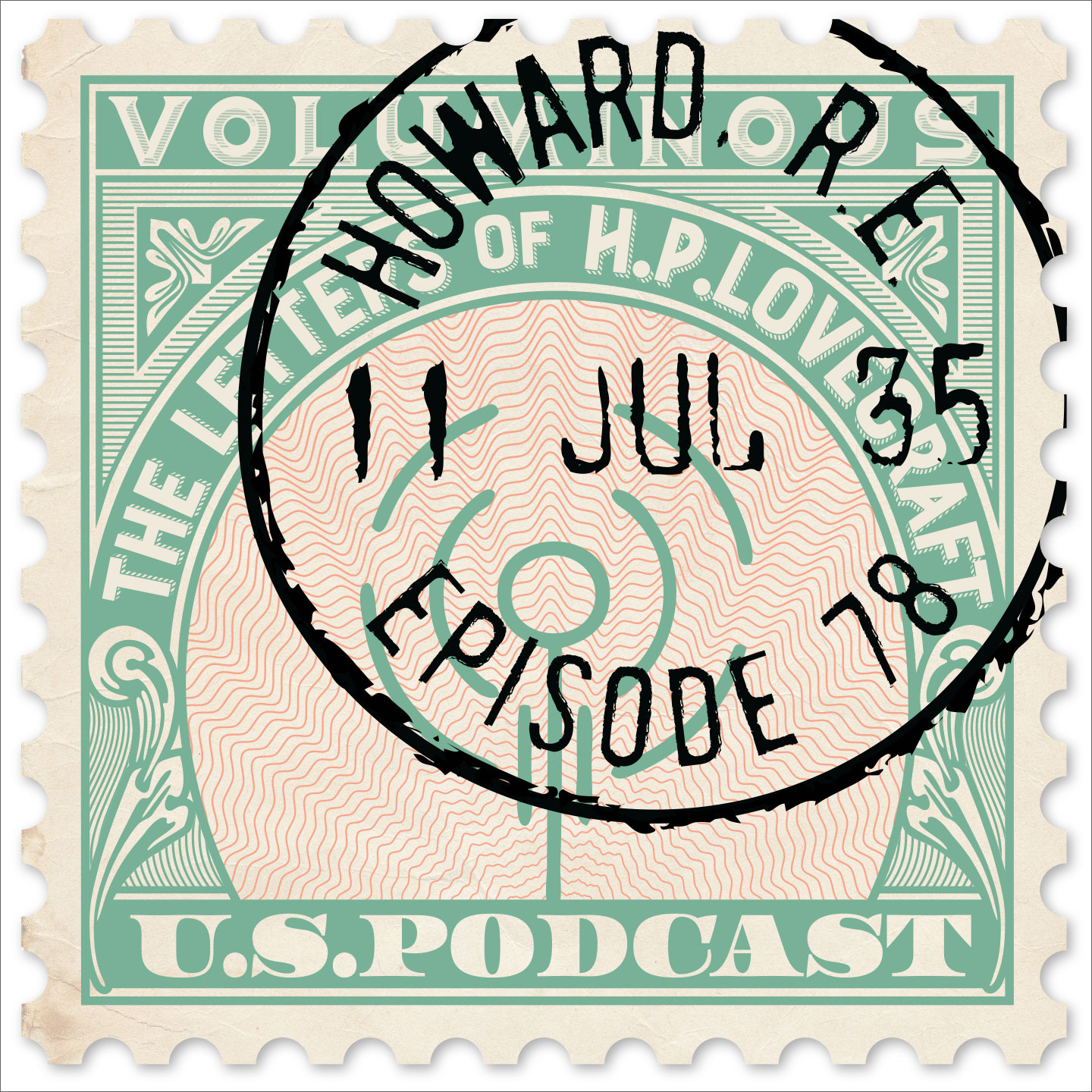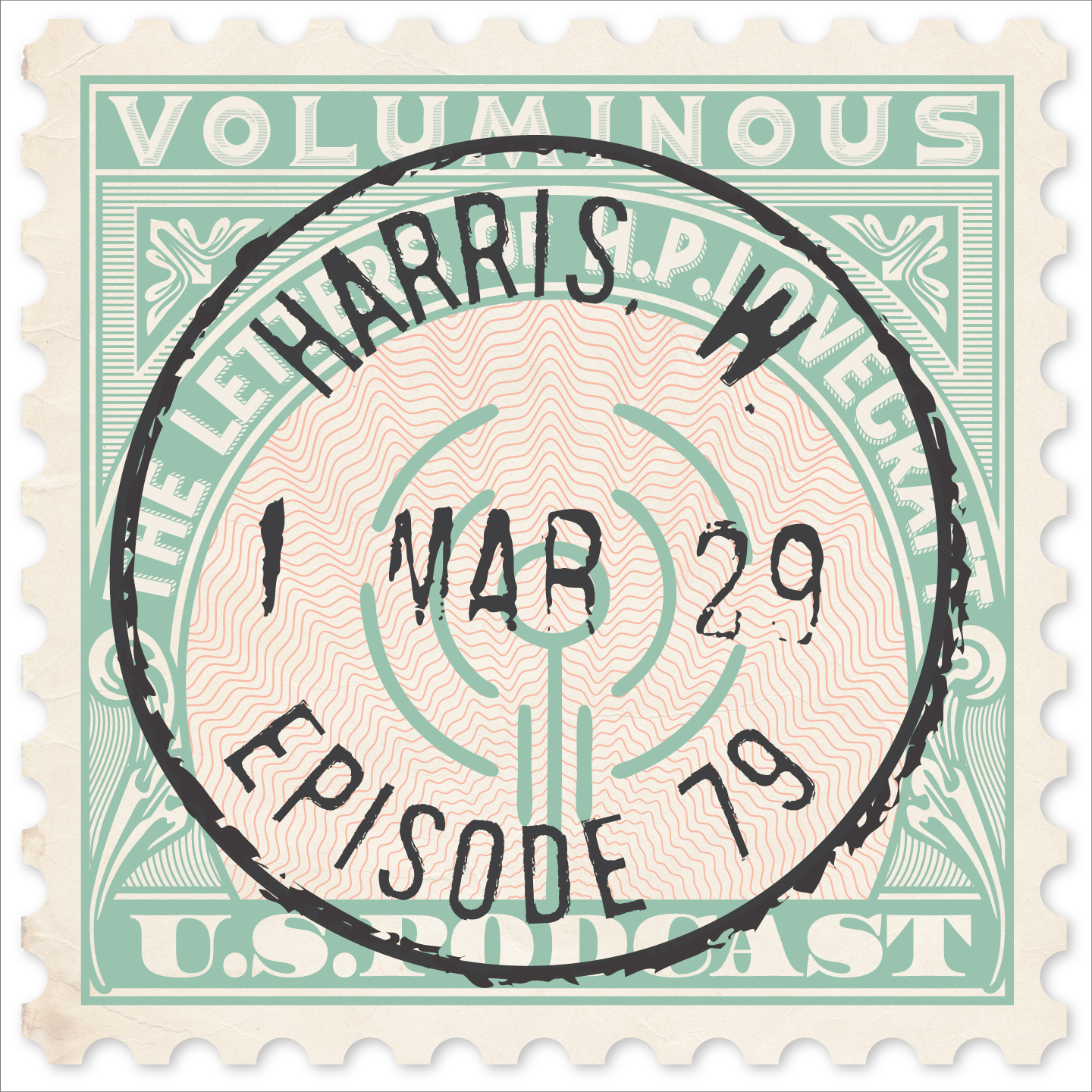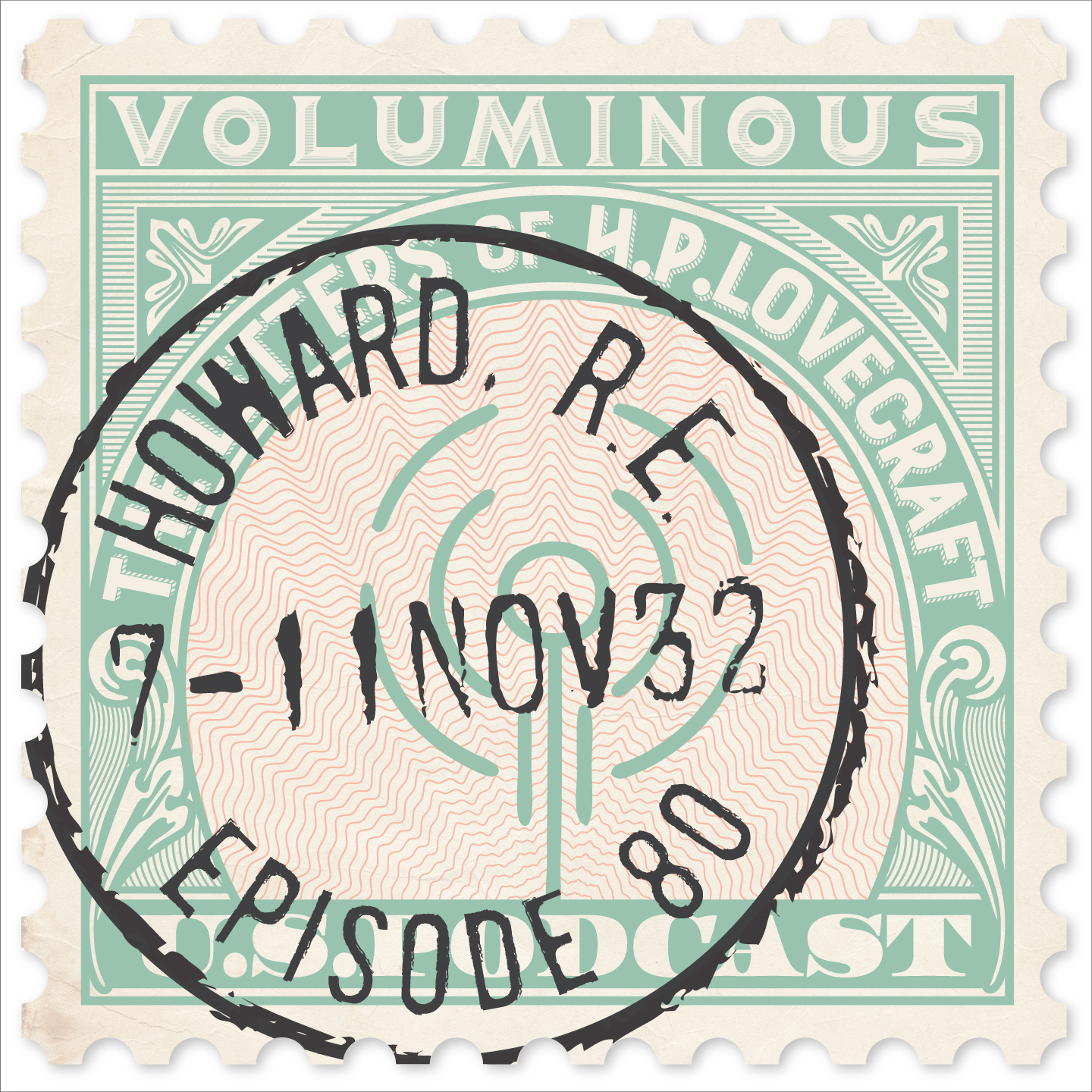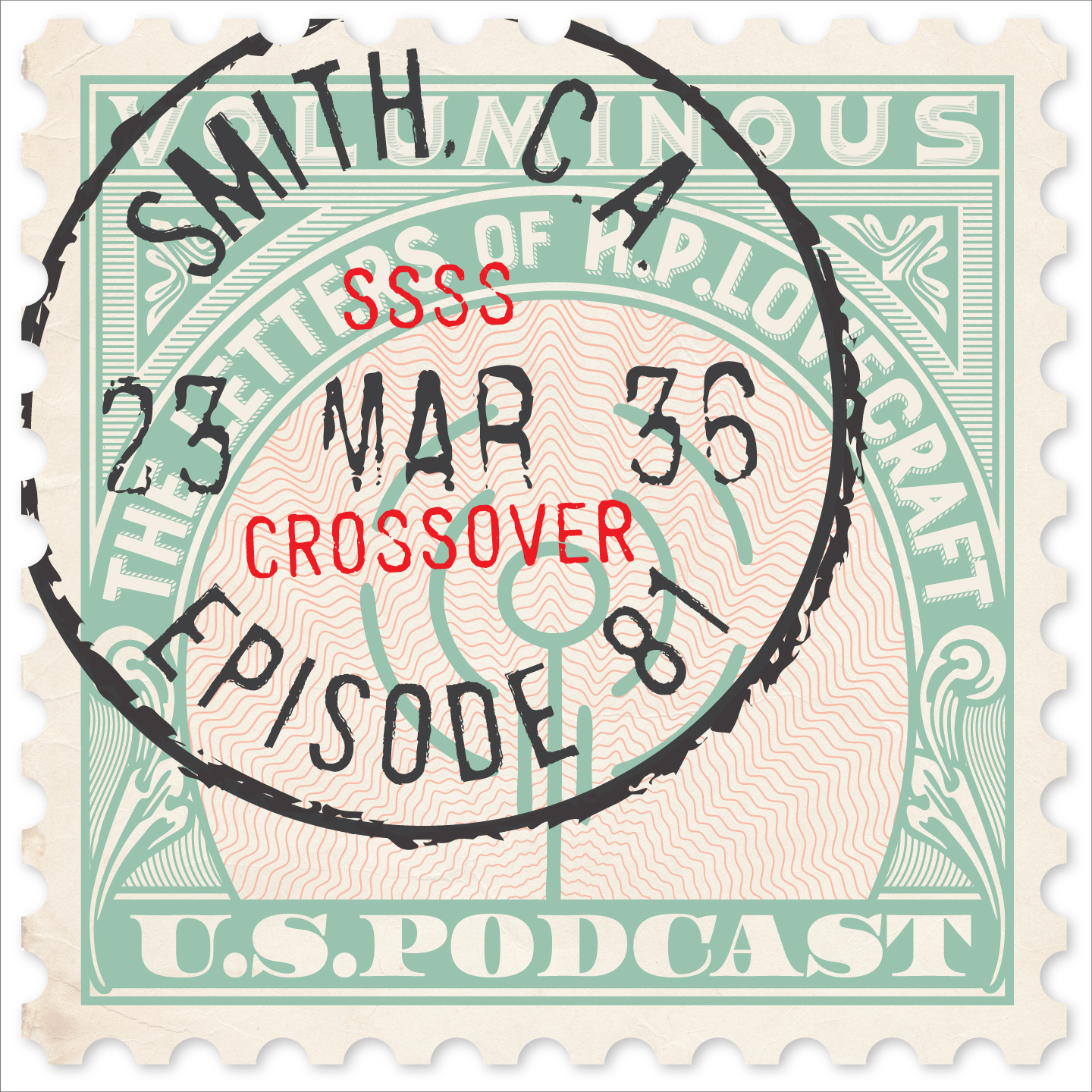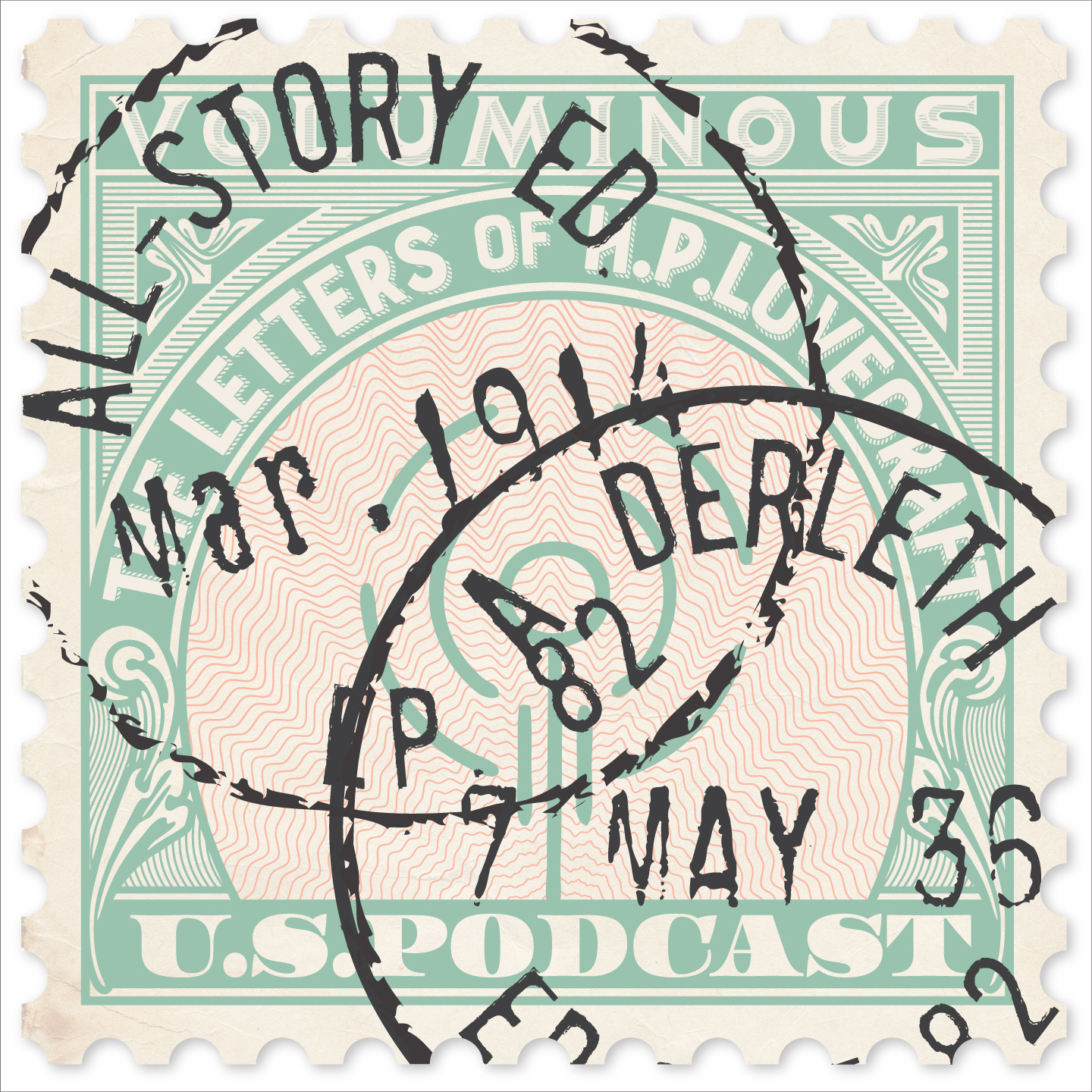
In addition to his classics of horror fiction, it is estimated that Lovecraft wrote 100,000 letters — or roughly 15 every day of his adult life — ranging from one-page diaries to seventy-page diatribes. Perhaps 20,000 of those letters have survived, in the hands of private collectors and at the John Hay Library in Providence.
In each episode of this podcast, we'll read one of these letters (or part of it) and then discuss it. In his letters HPL reveals an amazing breadth of knowledge of philosophy, science, history, literature, art and many other subjects, and forcefully asserts some highly considered opinions (some of which can be upsetting).
And of course his letters offer a fascinating window into his personal life and times. Although we've been working with Lovecraftian material for over 30 years, we still find interesting new things in his letters, and while we don't claim to be experts we look forward to sharing them with a wider audience.
Subscribe via iTunes, Stitcher or wherever you get podcasts! Or listen right here!
RSS Feed- Episode 67
- Posted December 5, 2021
The Case of the Missing Dickybird
In this letter from March 28, 1934, HPL congratulates his good friend James F. Morton on an article in an obscure magazine for geologists, and shares some ideas for detective stories. He also tells of his own detective adventure in tracking down a mysteriously missing postage stamp.
Music by Troy Sterling Nies. Thanks to S. T. Joshi and David E. Schultz for their Letters to James Morton, published by Hippocampus Press. Thanks also to Dan Pratt and David Cercone for their efforts to track down the Oregon Mineralogist, and to Gretchen Rings and Melissa Anderson at the Gantz Family Collection Center of the Field Museum of Natural History for their kind assistance.
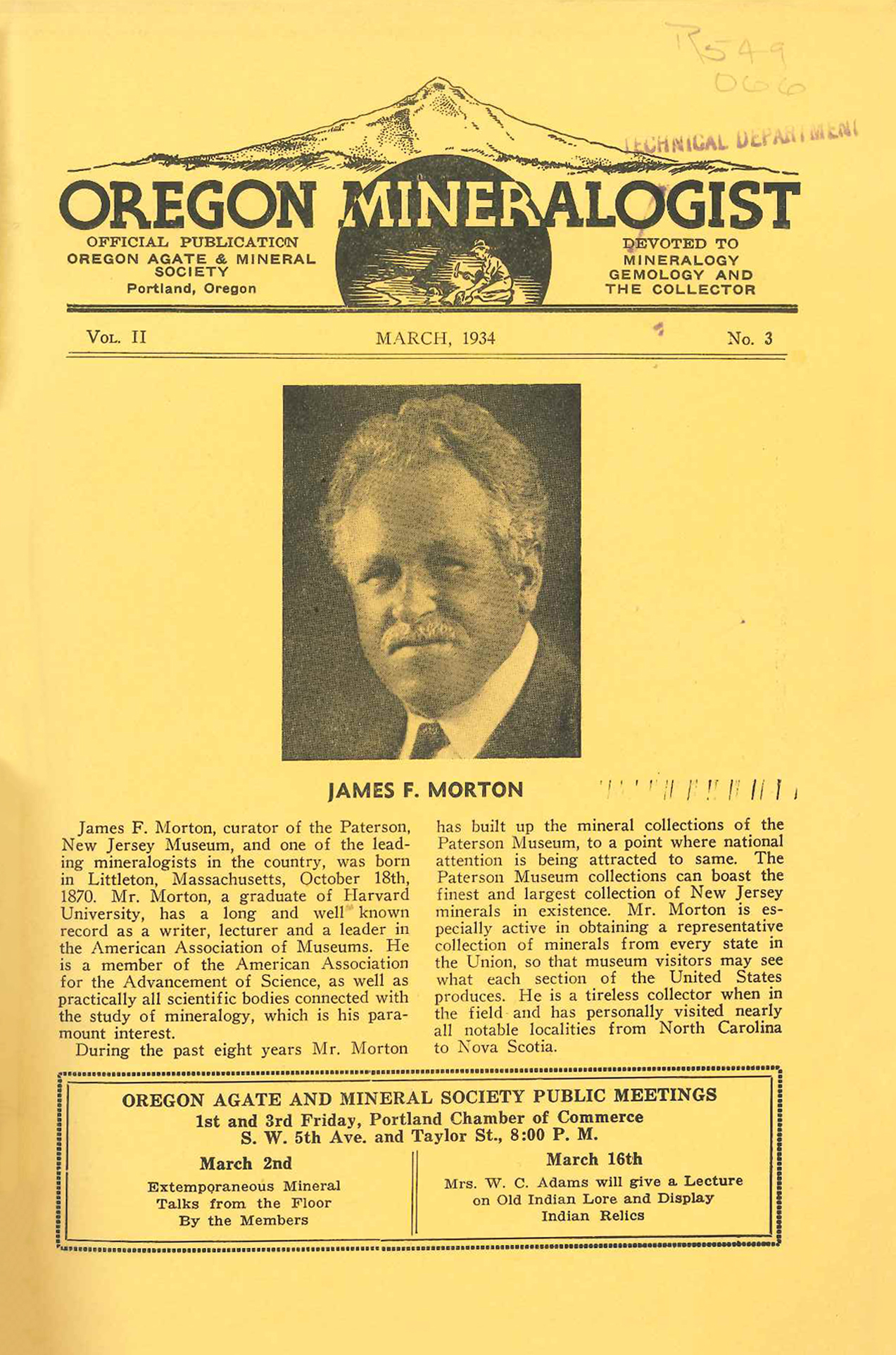
We found it! After we finally figured out what we were really looking for, Dan Pratt (with the assistance of librarian Heidi and her co-worker) found the elusive article in the Multnomah County library in Portland, Oregon. Here is the cover of the March, 1934 issue of the Oregon Mineralogist, edited by H. C. Dake and featuring James F. Morton. You can read Morton's charming article extolling the virtues of natural history museums which HPL so thoroughly approved of HERE!
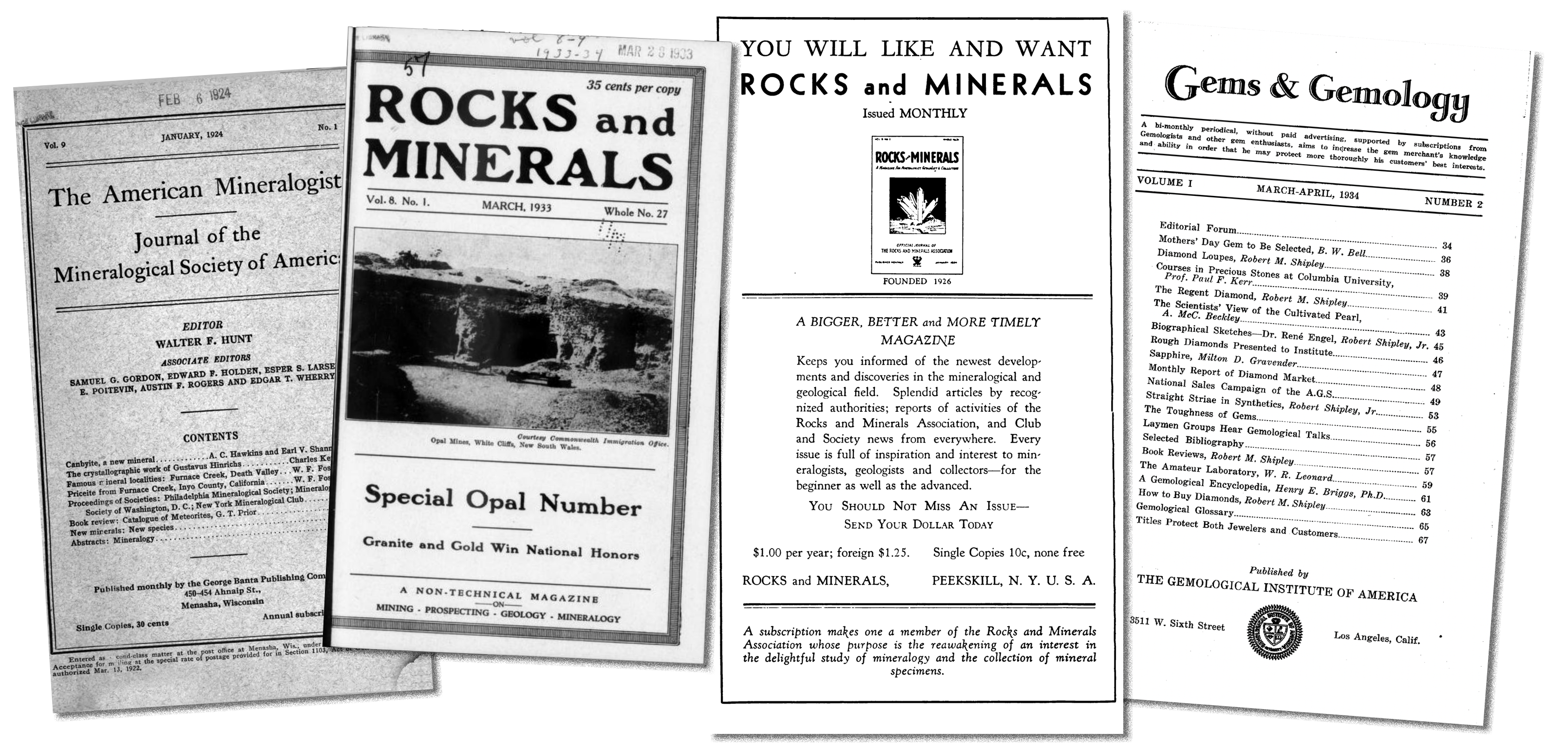 Like Lovecraft, we were pleasantly surprised to discover that there was a vigorous press serving the mineralogical community in 1934. Above are covers from some of the other magazines that no doubt passed over James F. Morton's desk back in the day. (We still haven't been able to find the cover of the issue of Rocks and Minerals cited by Joshi and Schultz.)
Like Lovecraft, we were pleasantly surprised to discover that there was a vigorous press serving the mineralogical community in 1934. Above are covers from some of the other magazines that no doubt passed over James F. Morton's desk back in the day. (We still haven't been able to find the cover of the issue of Rocks and Minerals cited by Joshi and Schultz.)
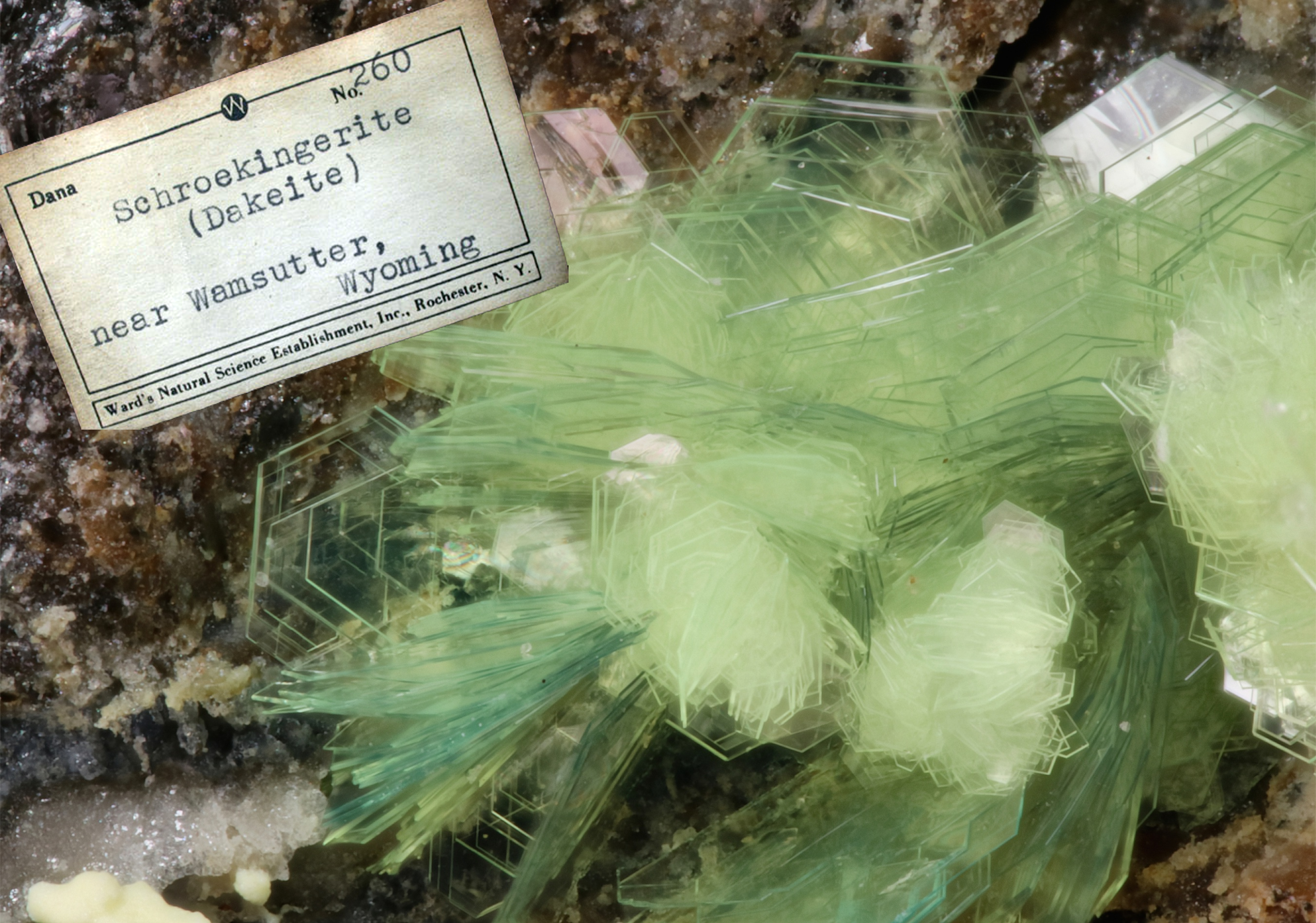 Pictured here is a sample of Dakeite, the amazing-looking radioactive mineral named after Henry Carl Dake. Dake was the editor of the Oregon Mineralogist and the author of numerous books on mineralogy, and had dreams of collaborating with Morton on rockological detective fiction. The mineral named after him was discovered in Wyoming in 1937. The American Mineralogist reported the finding as follows: "The new mineral described in this paper was submitted to the writers by Mr. R. W. Rowlands of San Diego, California. It had already been examined and thought to be a new species by Dr. H. C. Dake of Portland, Oregon. The name dakeite is proposed for the mineral in recognition of Doctor Dake’s outstanding service in creating popular interest in mineralogy and the other earth sciences."
Pictured here is a sample of Dakeite, the amazing-looking radioactive mineral named after Henry Carl Dake. Dake was the editor of the Oregon Mineralogist and the author of numerous books on mineralogy, and had dreams of collaborating with Morton on rockological detective fiction. The mineral named after him was discovered in Wyoming in 1937. The American Mineralogist reported the finding as follows: "The new mineral described in this paper was submitted to the writers by Mr. R. W. Rowlands of San Diego, California. It had already been examined and thought to be a new species by Dr. H. C. Dake of Portland, Oregon. The name dakeite is proposed for the mineral in recognition of Doctor Dake’s outstanding service in creating popular interest in mineralogy and the other earth sciences."
Sadly for Dr. Dake, it was later realized that the mineral named after him was identical to a previously named mineral, Schröckingerite, so his name was relegated to the status of a mere synonym. You can learn more about it HERE and HERE.
We don't know if Morton and Dake ever actually produced any detective stories based on Lovecraft's advice, but here are two of the several motion picture adaptations of the works of another famous detective story writer of the day referenced in this letter, S. S. Van Dine. His character Philo Vance was very popular until hard-boiled detectives like Sam Spade came along. The poet Ogden Nash, perhaps summing up popular opinion, wrote "Philo Vance/Needs a kick in the pance."
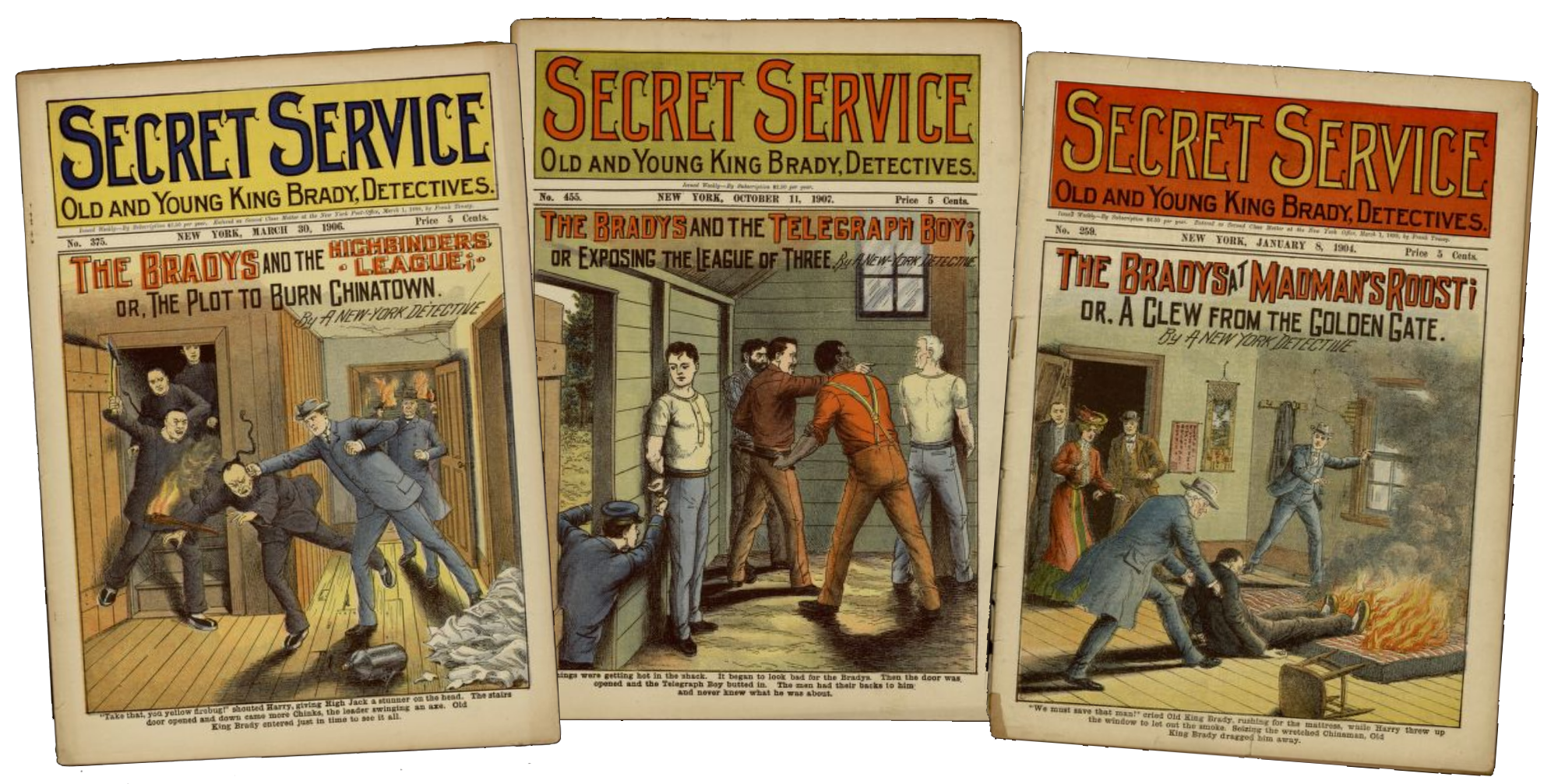 Another classic detective character HPL mentions in this letter is Old King Brady, who was the star of a series of over 1300 dime novels called Secret Service published between 1899 and 1925. The character was created by Francis W. Doughty, Walter Fenton Mott and Lu Senarens, credited as "A New York Detective". Old King Brady is not particularly heroic, being a mediocre shot, unable to swim, and bad at disguises, but he always triumphs through determination. The covers of the magazines are pretty spectacular, if riddled with potentially offensive ethnic stereotypes. You can see a huge gallery of them and read the stories at the Stanford University Library.
Another classic detective character HPL mentions in this letter is Old King Brady, who was the star of a series of over 1300 dime novels called Secret Service published between 1899 and 1925. The character was created by Francis W. Doughty, Walter Fenton Mott and Lu Senarens, credited as "A New York Detective". Old King Brady is not particularly heroic, being a mediocre shot, unable to swim, and bad at disguises, but he always triumphs through determination. The covers of the magazines are pretty spectacular, if riddled with potentially offensive ethnic stereotypes. You can see a huge gallery of them and read the stories at the Stanford University Library.
HPL laments that people actually read this kind of detective fiction saying "...by nature's kindly law". That is an excerpt from a poem by Alexander Pope, which in its entirety reads "Behold the child, by Nature's kindly law, Pleas'd with a rattle, tickled with a straw: Some livelier play-thing gives his youth delight, A little louder, but as empty quite: Scarfs, garters, gold, amuse his riper stage; And beads and pray'r-books are the toys of age: Pleas'd with this bauble still, as that before; 'Till tir'd he sleeps, and Life's poor play is o'er. . . ."
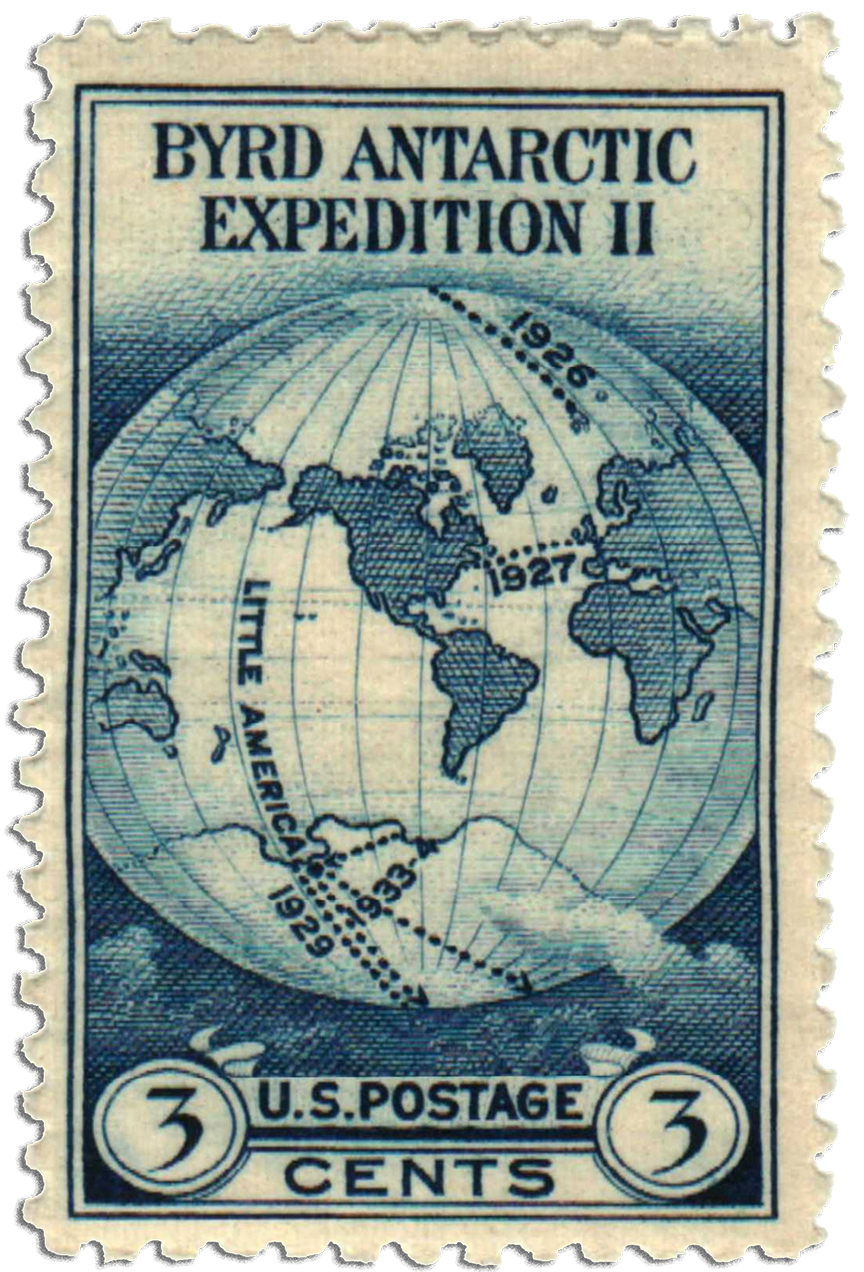
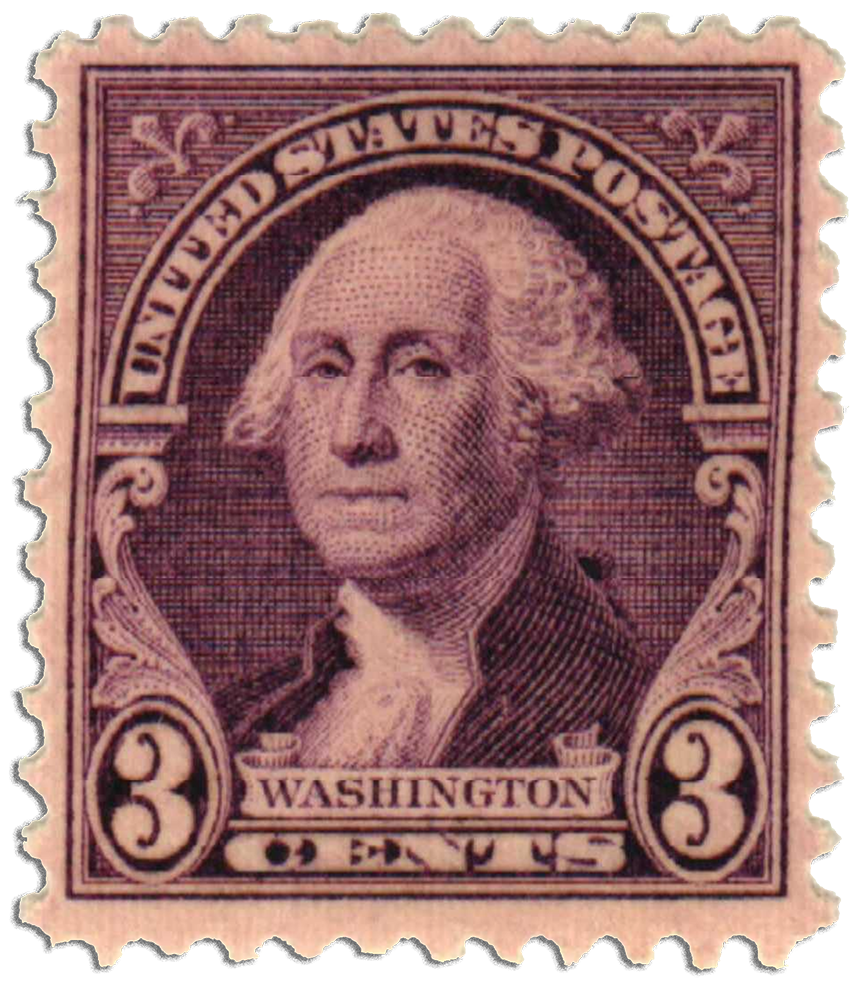 Seen here are the two postage stamps that featured in Lovecraft's personal detective story. The "Dickybird" stamp was not distributed for public sale. It was issued for use on letters mailed through the Little America Post Office, which was established at the base camp of the Byrd Antarctic Expedition in the territory of the South Pole. There was a service charge of 50¢ in addition to the 3¢ postage rate. President Franklin D. Roosevelt helped design the stamp, which depicts the route Byrd’s explorers traveled.
Seen here are the two postage stamps that featured in Lovecraft's personal detective story. The "Dickybird" stamp was not distributed for public sale. It was issued for use on letters mailed through the Little America Post Office, which was established at the base camp of the Byrd Antarctic Expedition in the territory of the South Pole. There was a service charge of 50¢ in addition to the 3¢ postage rate. President Franklin D. Roosevelt helped design the stamp, which depicts the route Byrd’s explorers traveled.
The standard 3 cent "Georgiwash" was based on the same famous portrait by Gilbert Stuart that is used on the $1 bill. When the first-class letter rate was increased to 3¢ in June 1932, a new stamp was needed to meet the change. This stamp was adapted from the 2¢ stamp in the Washington Bicentennial Issue, which featured a three-cent stamp with a much less recognized image of Washington. The denomination and color were changed and the ribbons with “1732” and “1932” were removed.
We don't know if the envelope shown below is like the one Tryout Smith sent to Morton via HPL, but it was the kind of thing that stamp collectors sent away to Antarctica for. 